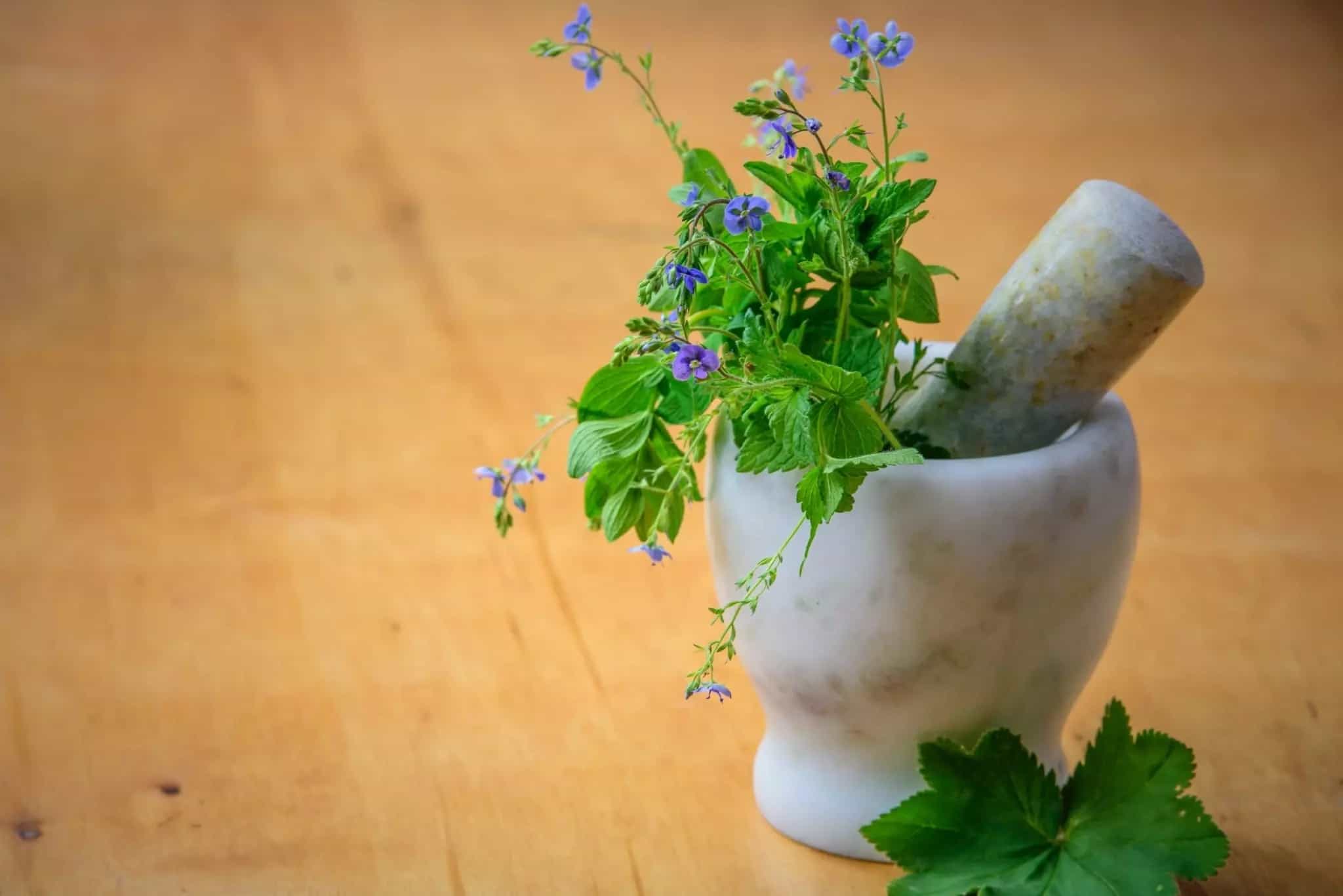With all of the medications out there that have tons of added chemicals that may only make you feel bad, there is now a huge growth happening in the medicinal plant industry. Due to quite literally being all-natural, medicinal plants are becoming a go-to for millions of people rather than going to traditional pharmaceutical medications. In some ways, this makes sense to see. There is a big problem happening in the antibiotic world where people are being fed these so often by doctors, even when they don’t need them. It has resulted in something known as “antibiotic resistance.” It has led to various antibiotics barely working for a person, or not at all.
Medicinal Plants were used for thousands of years to assist people with their random ailments. The pharmaceutical industry obviously has stronger drugs that can be very effective, but where do you think they found their drug ingredients? They did not just invent a new thing in their lab to put into medications. In fact, they often use various plants and herbs to create medications that will help people. Even antibiotics truly got their start from a natural occurrence we call mold. In the end, knowing about the world of botany may be a literal lifesaver.
Studies have shown that proper use of these medicinal plants has actually been just as beneficial to the average person as many pharmaceutical medications. They can treat random infections, viruses, pain, digestive issues, cancer, and even sexual issues. We wanted to make sure you’re all set to know what plants you should look to. This led us to make a list of the best medicinal plants out there. Let us know what plants work best for you!

40. Sage (Salvia officinalis)
- Medicinal Use: Digestive and Mental Disorders
Sage is a very popular plant that can be grown pretty much anywhere. In fact, you may even have some in your cabinet somewhere for your food. It can certainly help food taste a bit better, depending on how it is used. Yet it is also one of the best medicinal plants around.
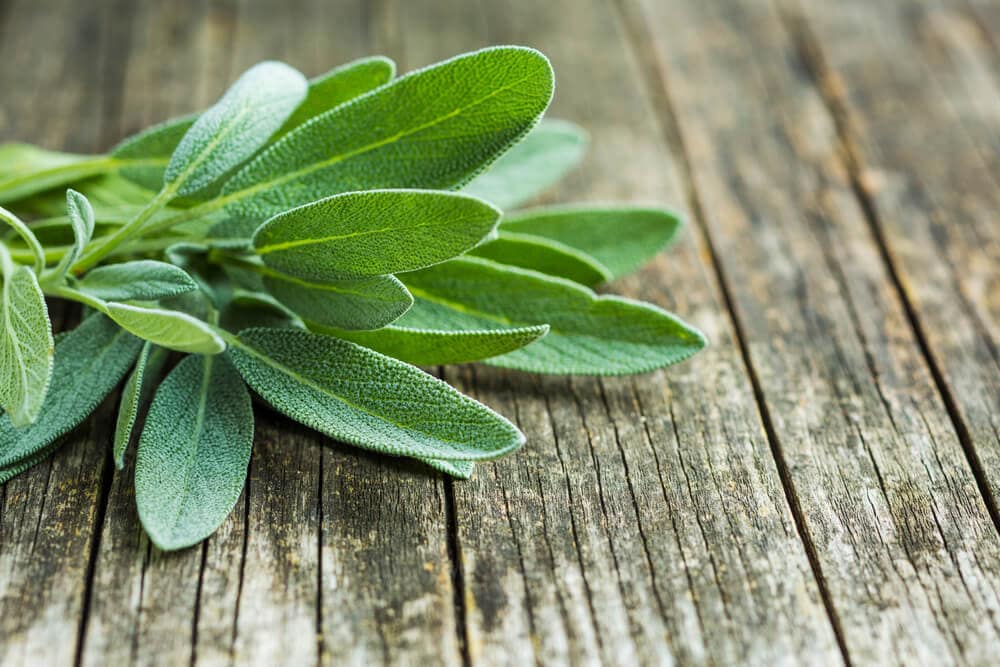
The Common Sage is likely the one most of us know and love. There is proof that it can help treat several digestive issues. This includes things like gas, bloating, heartburn, gastritis, and much more. Some claim it can help with memory loss and depression, although scientific testing does not back this.
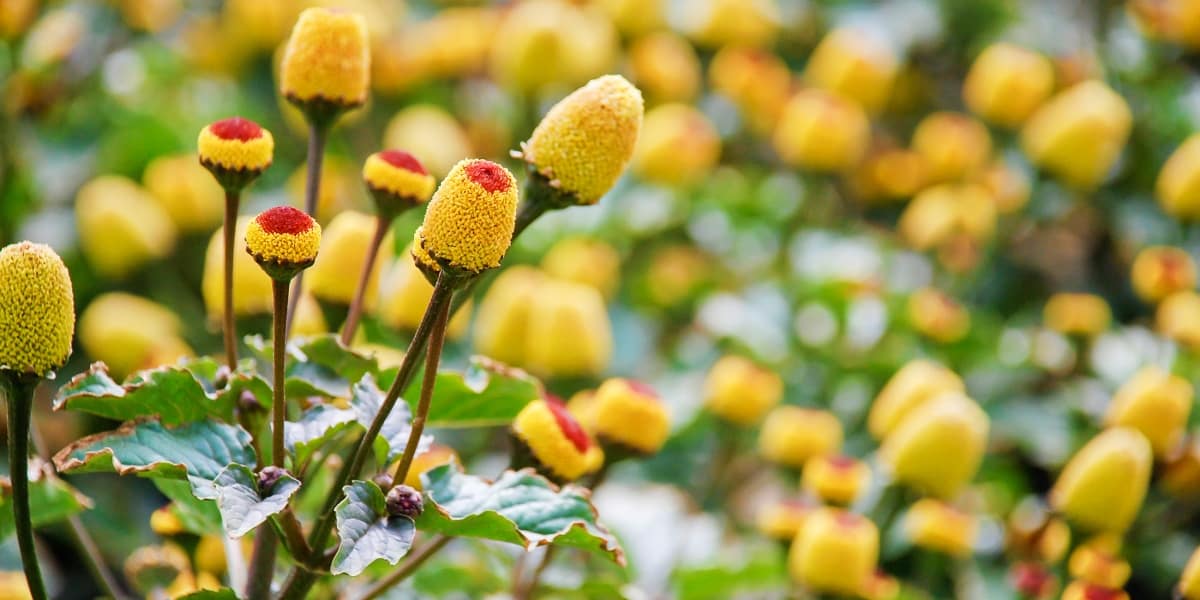
39. Spilanthes (Acmella oleracea)
- Medicinal Use: Pain Relief, Anesthetic
Spilanthes plants belong to the Asteraceae Family of plant herbs. Due to a strong amount of growth in South America, it is often used in various stews and salads in places like Brazil, Argentina, and other major nations there. These medicinal plants are widely known for their success in relieving pain.
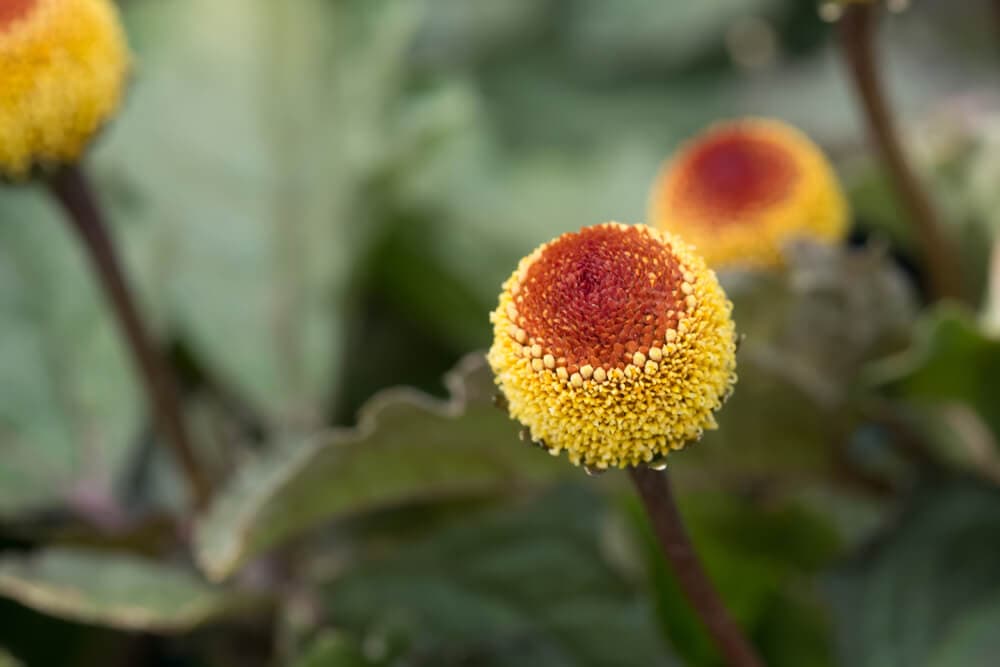
It’s nicknamed the “toothache plant” for a reason, people. Spilanthes can help with other inflammatory issues, even things like Stomatitis. While it has to be used with other medicinal properties, there has been some success with Spilanthes being used to treat symptoms of HIV and Malaria. However, the science is inconclusive on how much it can help.
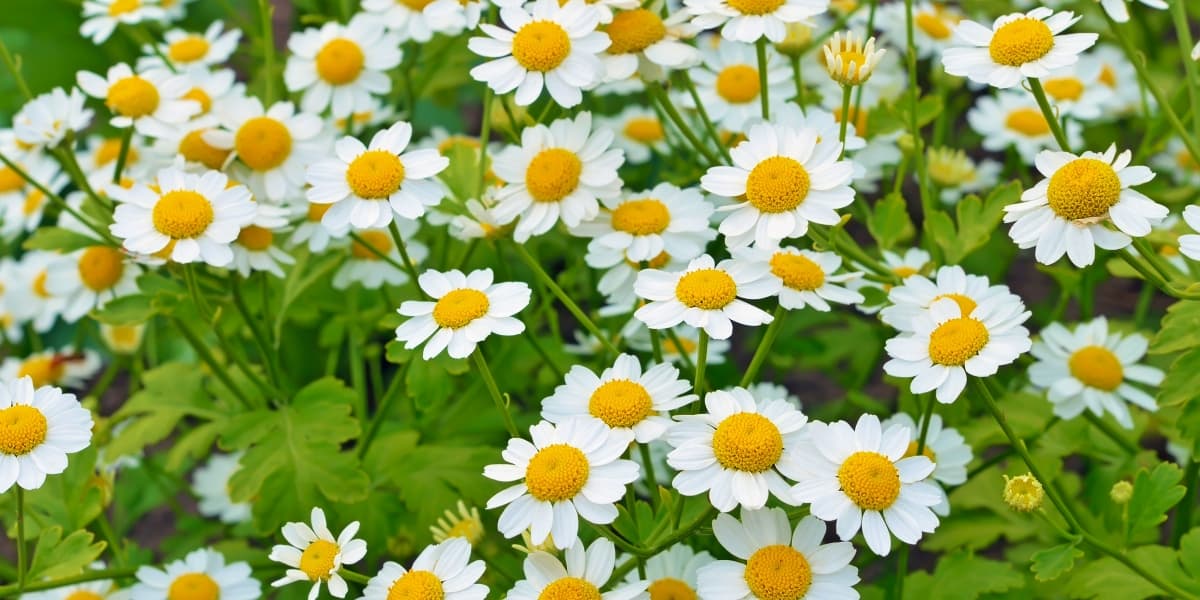
38. Feverfew (Tanacetum parthenium)
- Medicinal Use: Fever, Migraine, Headaches, Arthritis
Having a headache or Migraine can be absolutely horrible. What if there was a natural remedy to help with that? What if that same natural remedy was a plant that also treated some arthritic issues? Known as the Feverfew, it is one of those medicinal plants that we’re still learning so much more about.

Feverfew’s medicinal property “parthenolide” has been used in some pharmaceutical medications. Yet there is some assumption that the overall Feverfew can help everything from Dermatitis to Cancer. While that is inconclusive, at least we know it can help with some headaches and pain. Also, it helps with fevers too. It’s in the name, after all!
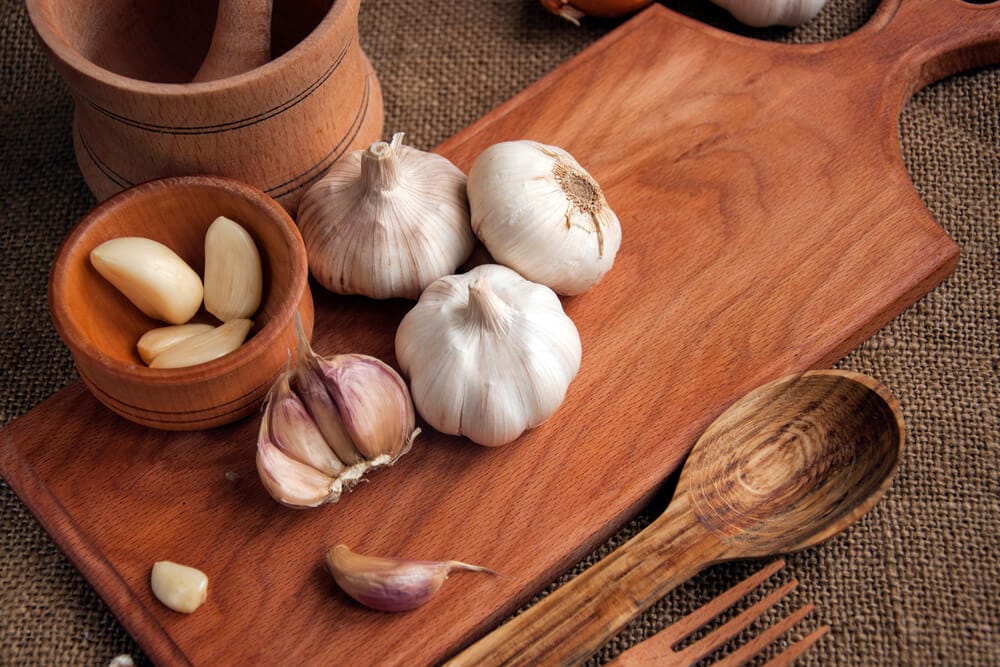
37. Garlic (Allium sativum)
- Medicinal Use: High Cholesterol, Heart Disease, Hypertension
Garlic is part of the Allium family of monocotyledonous flowering plants, which also includes onions and even chives. Several from the family have been linked to some medicinal use. However, it seems Garlic has been linked more than the rest. It’s not just because they are good at keeping Vampires away either!

We have seen credible evidence that has shown garlic as a useful aid against high cholesterol, coronary heart disease, and even hypertension. It has even shown some signs of helping against atherosclerosis, which is the hardening of the arteries. As a result of this, it has also been useful in preventing heart attacks with regular consumption.
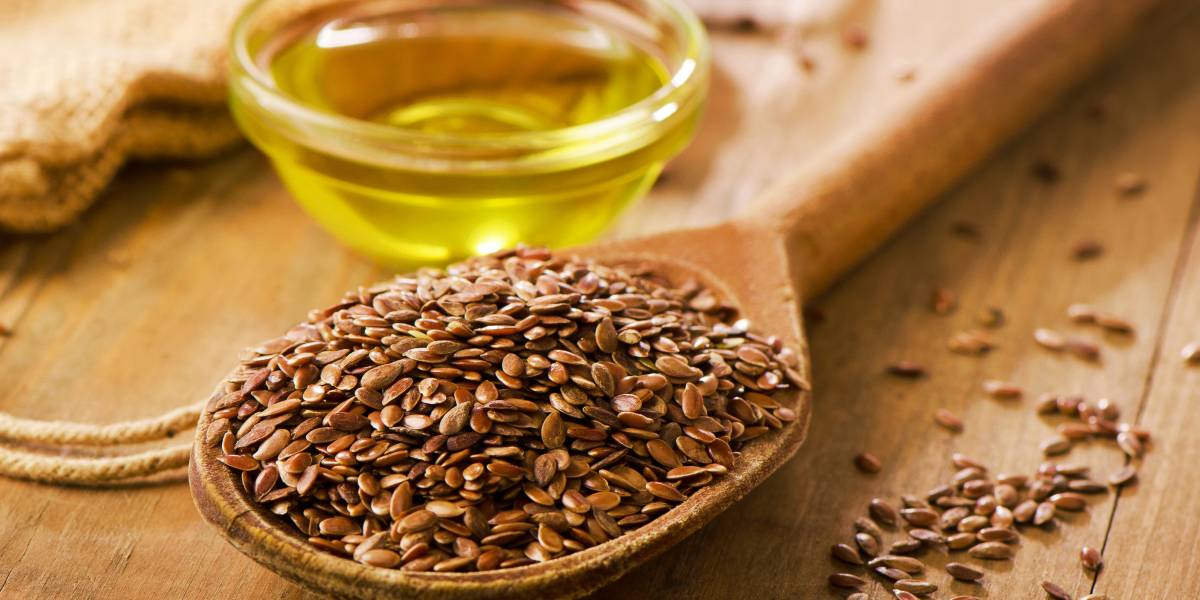
36. Flax (Linum usitatissimum)
- Medicinal Use: High Cholesterol, High Blood Pressure, Weight Loss
Usually referred to more often as Flaxseed, the Flax Plant is part of the massive Linaceae family. A good portion of this family has some medical use, making it one of the largest families of medicinal plants known. Flaxseed has been used in a ton of different things from bedsheets to clothes.
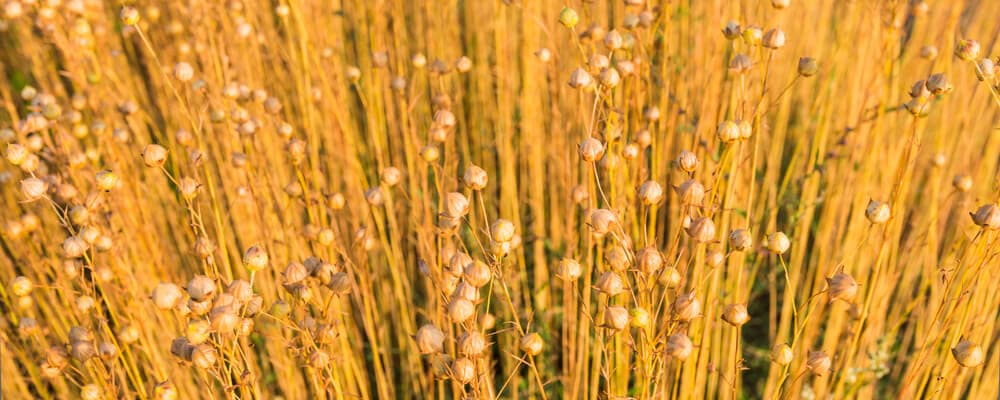
While this seems to be the biggest use in the West for it, most others know its medicinal value. They are very nutritious due to their omega-three fatty acids. Yet they have also been shown to help people with weight loss, as well as help some lower their blood pressure and high cholesterol.

35. Spinach (Spinacia oleracea)
- Medicinal Use: Gastrointestinal Issues, Blood Building
Popeye made eating this stuff seem easy, but it’s not for everyone sadly. Despite this, Spinach is one of the better medicinal plants known to man. This is likely why it remains such a popular plant that men and women still eat to this day in spite of those who aren’t big fans of it.
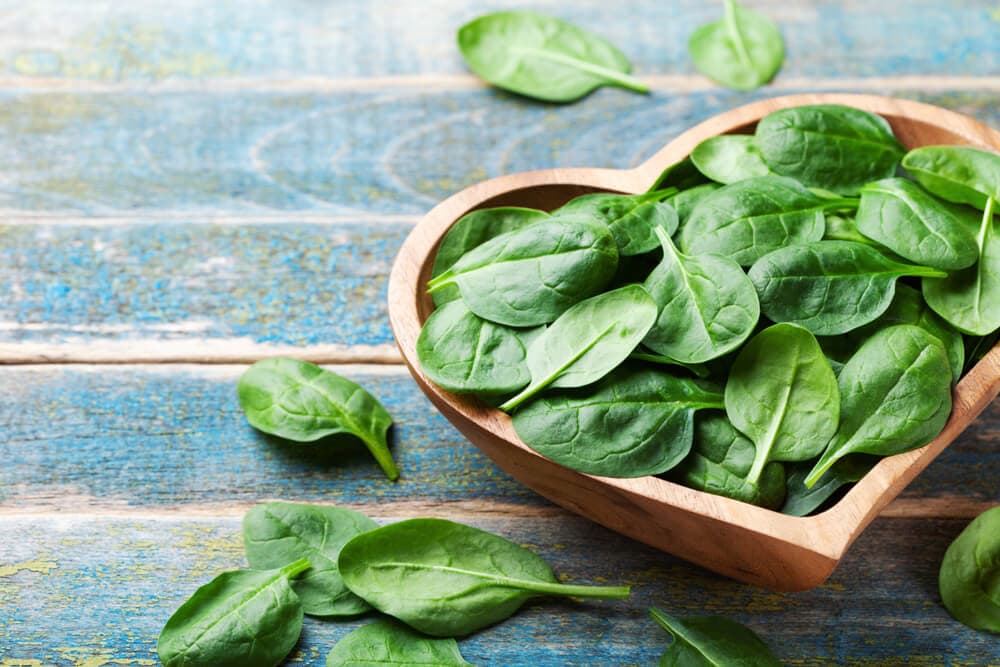
The major reason people love it is clearly the medicinal properties that have been confirmed for years now. It is a tremendous help for gastrointestinal disorders and it has also proven to be a blood builder. Spinach also has tons of nutrients like Iron, Calcium, and even Vitamin K. All of this is important to the human body.
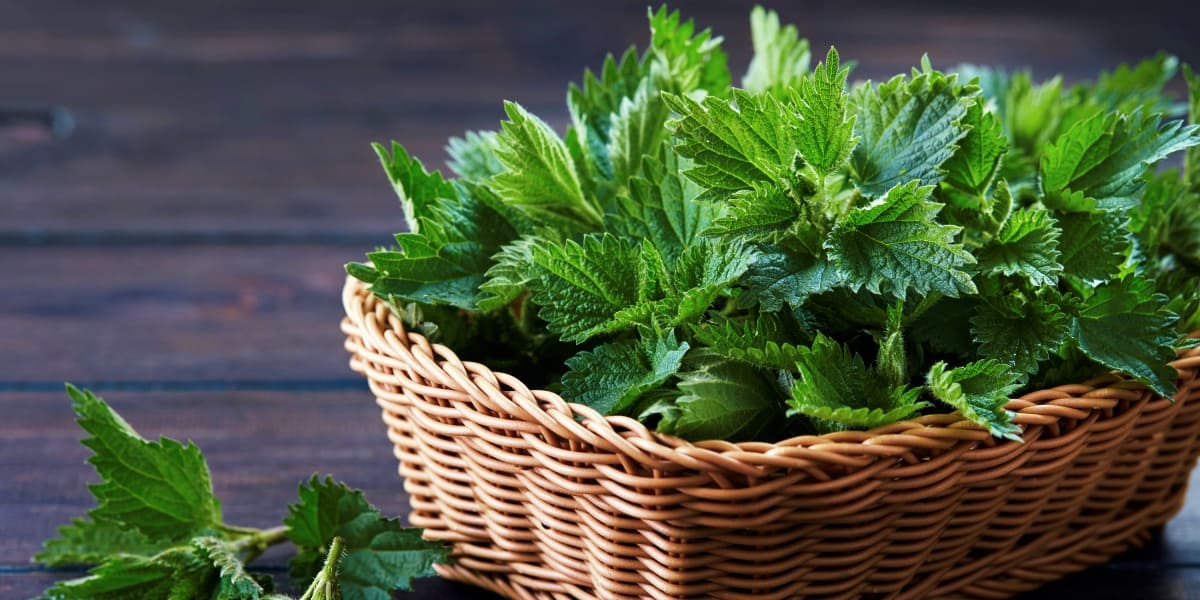
34. Stinging Nettle (Urtica dioica)
- Medicinal Use: Influenza, Skin Problems, GI Disorders, Urinary and Kidney Disorders
We should make the obvious note that Stinging Nettles do not possess any needles that sting you. It is a different word, obviously! The name comes from the leaves that have stinging hairs on them called trichomes. These can act like hypodermic needles and inject histamine, along with other chemicals, that make it feel like you’ve been stung.
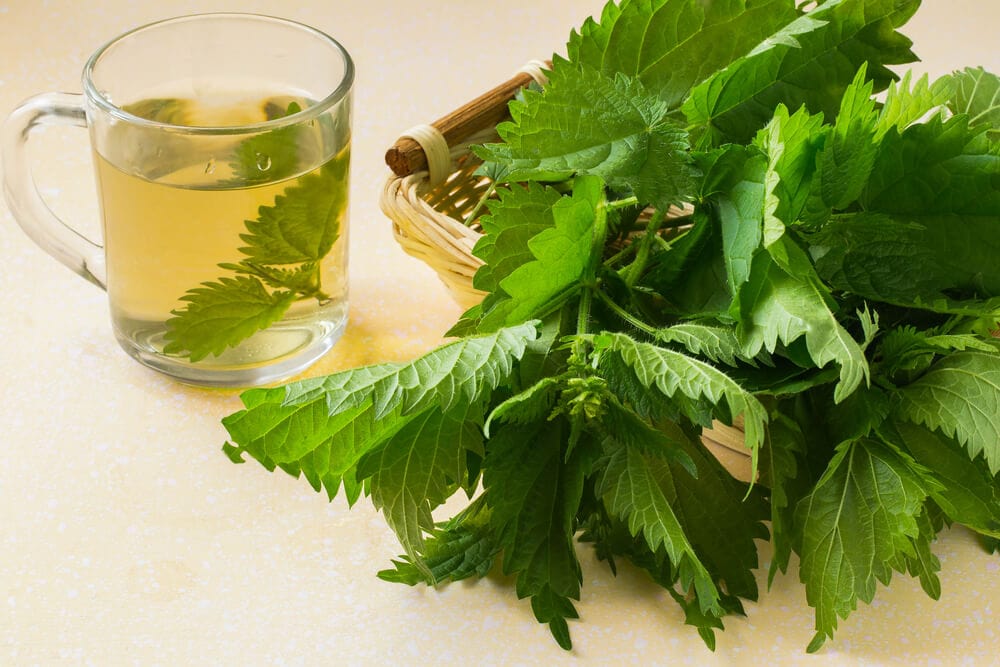
The plant’s medicinal usage dates back to Ancient Greece and Egypt for multiple problems. Aborigine and Present-Day Australians have used it to treat kidney disorders, urinary tract issues, gastrointestinal problems, skin issues, gout, and even the flu. We really should keep an eye out for this plant more!
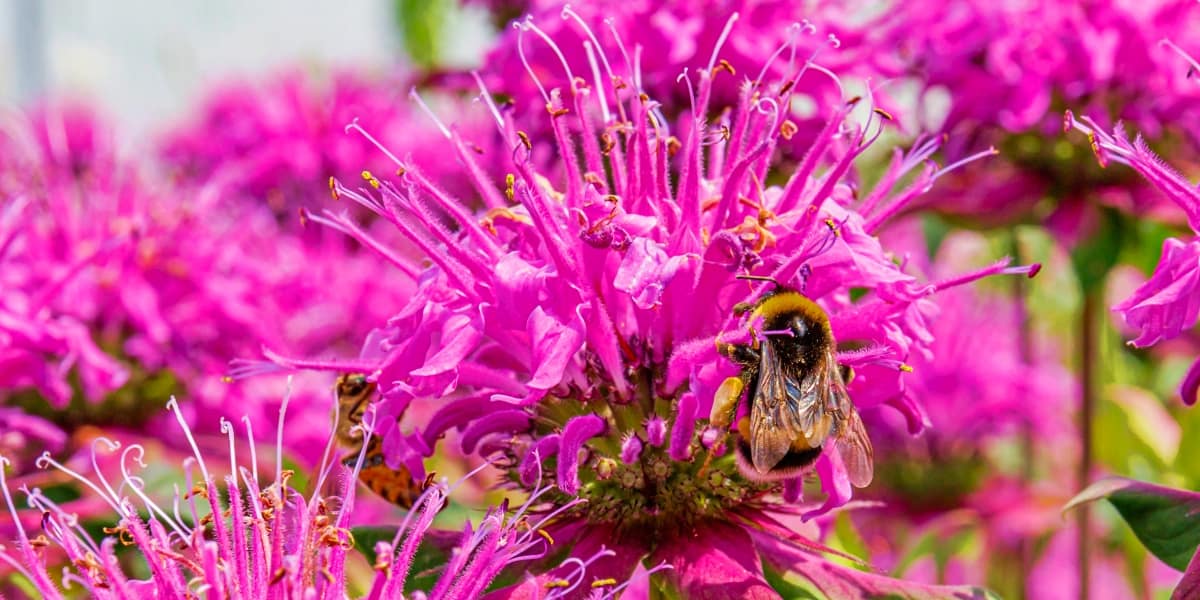
33. Wild Bergamot (Monarda fistulosa)
- Medicinal Use: Antiseptic, Energy-Inducer
For well over a century, Native Americans like the Menominee and Blackfoot were known to have used Wild Bergamot for various medicinal needs. It can grow all over the world, but probably best works in an environment with a medium to high temperature. The Medicinal use for this plant is pretty impressive.
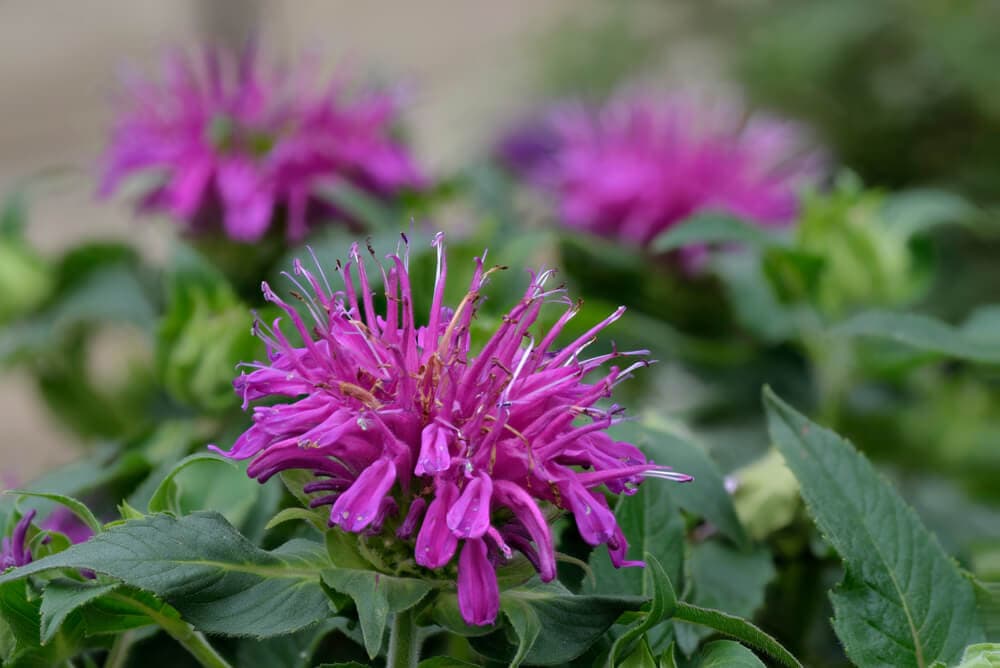
It’s essentially a major antiseptic that can kill off some infections. The plant is commonly used to treat skin issues like wounds or infections. Its natural sweetness also makes it a favorite addition to drinks and foods. When added to tea, Wild Bergamot can act as a stimulant and become an energy-inducer as well as fight off gingivitis.

32. Dandelion (Taraxacum)
- Medicinal Use: High Blood Pressure, Urinary Tract Diseases
Most of us love Dandelions, but did you know the entire plant is completely edible? We don’t recommend just randomly going into a field and snacking on them, but you technically could do so. In fact, it could be good for you. The plant is an excellent source of nutrition, due to containing Vitamins A, C, and K.

It also has some calcium, potassium, iron, and manganese. The Dandelion has traditionally been used as a Diuretic. This allows those with higher blood pressure to be helped by the plant. On top of this, it is also able to increase the amount one may urinate, allowing them to eliminate any harmful fluids.
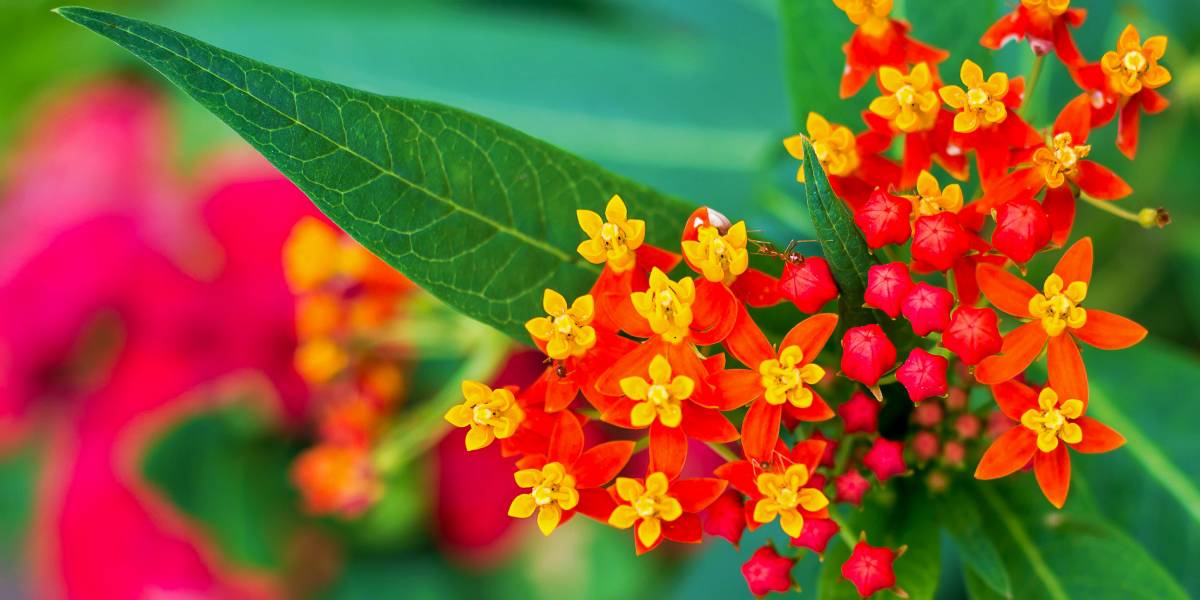
31. Blood Flower (Asclepias curassavica)
- Medicinal Use: Bleeding, Skin Troubles
Often referred to as the milkweed plant, the Blood Flower has many names. It is found throughout the American tropics, but it can grow outside of this area in some proper greenhouses. It is likely that various tropical tribes used the plant for centuries, as it has multiple medicinal uses. The main medicinal use revolves around skin issues like warts, corns, or ringworms.
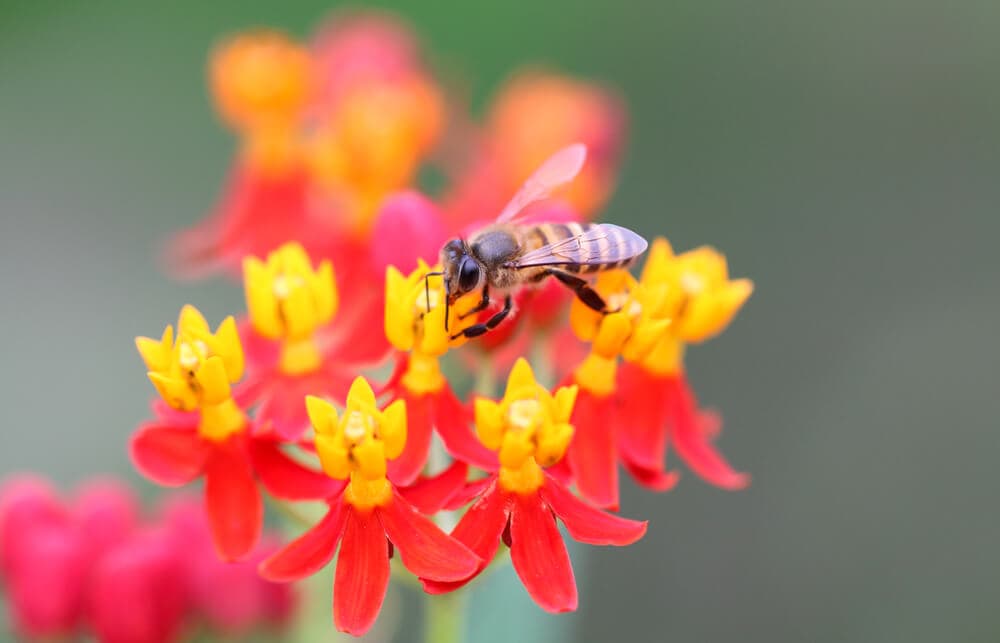
However, it has also been shown that it can help people with their acne and even helps fight symptoms of Measles. The root of the plant allows for Hemostasis or stopping one from bleeding. The plant also can help with blood circulation. What did you expect from a plant literally nicknamed the “Blood Flower?”

30. Catnip (Nepeta cataria)
- Medicinal Use: Anxiety, Sleep Disorders
While not the stuff you may feed your cat, the actual Catnip plant can still be eaten too. The name was given to the plant when people began to notice that cats seemed to love the plant. It is one of the few medicinal plants that can grow outdoors just about anywhere in the world too.
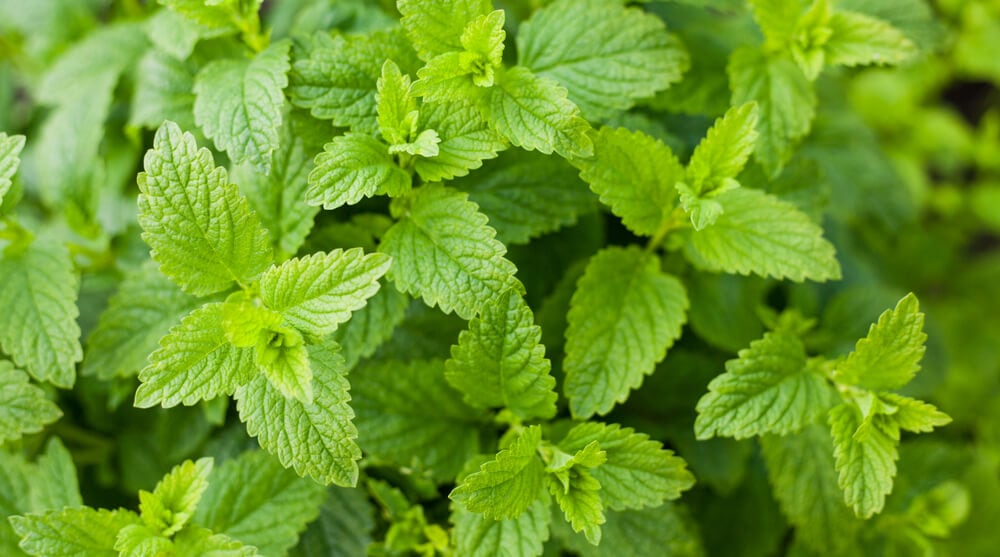
It has been seen in multiple European countries as well as places like Australia and New Zealand. The plant is extremely useful when added to things like teas. People seem to love it due to working similarly to a muscle relaxer, so it can obviously help people get some rest or calm down. This also allows it to somewhat treat anxiety, as it simply helps people relax.
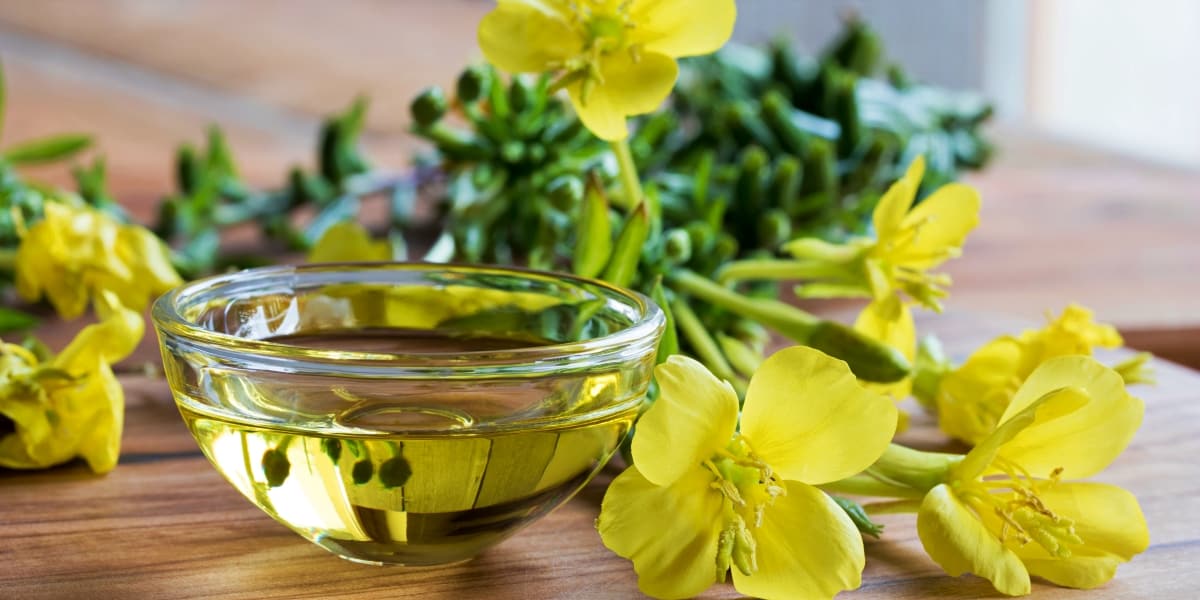
29. Evening Primrose (Oenothera)
- Medicinal Use: Skin Issues, Coughing, Depression, GI Issues
Evening Primrose is yet again one of the medicinal plants that are claimed to help just about everything. Although some of the rumors are true. The biggest of these is that it can help with coughs from things like colds. It has shown that it can help some people. The entire plant is edible, so medicinally, it is all put to use.
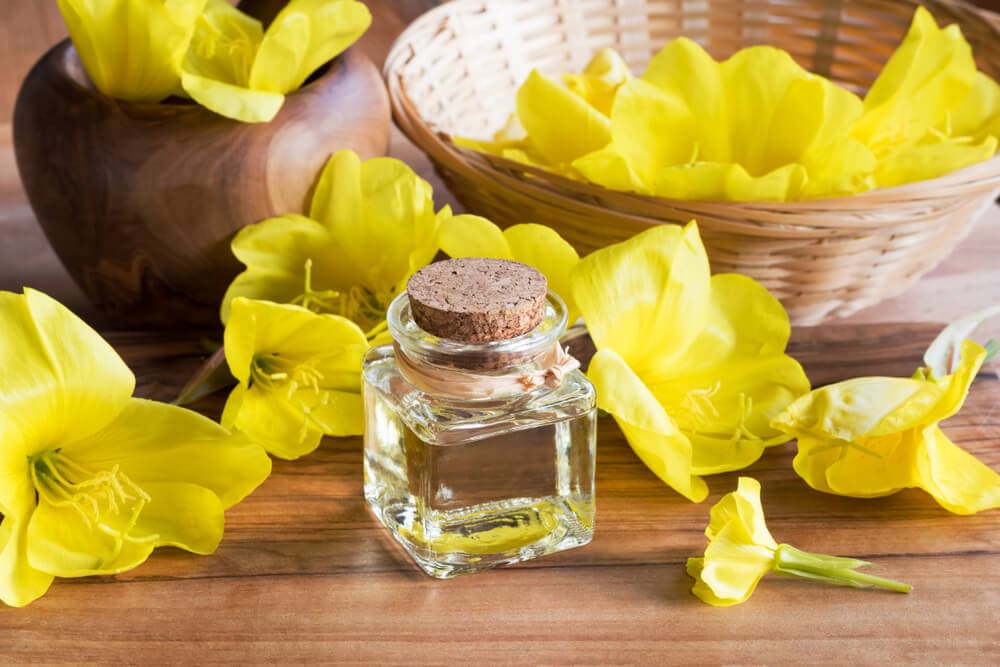
It has a stimulating effect when used in teas, allowing it to help with low energy/depression. Yet the oil from the plant can be used to treat rashes, and skin irritations and even help reduce bleeding. If that’s not enough, it has also been proven to help digestive issues as well as asthma and whooping cough.
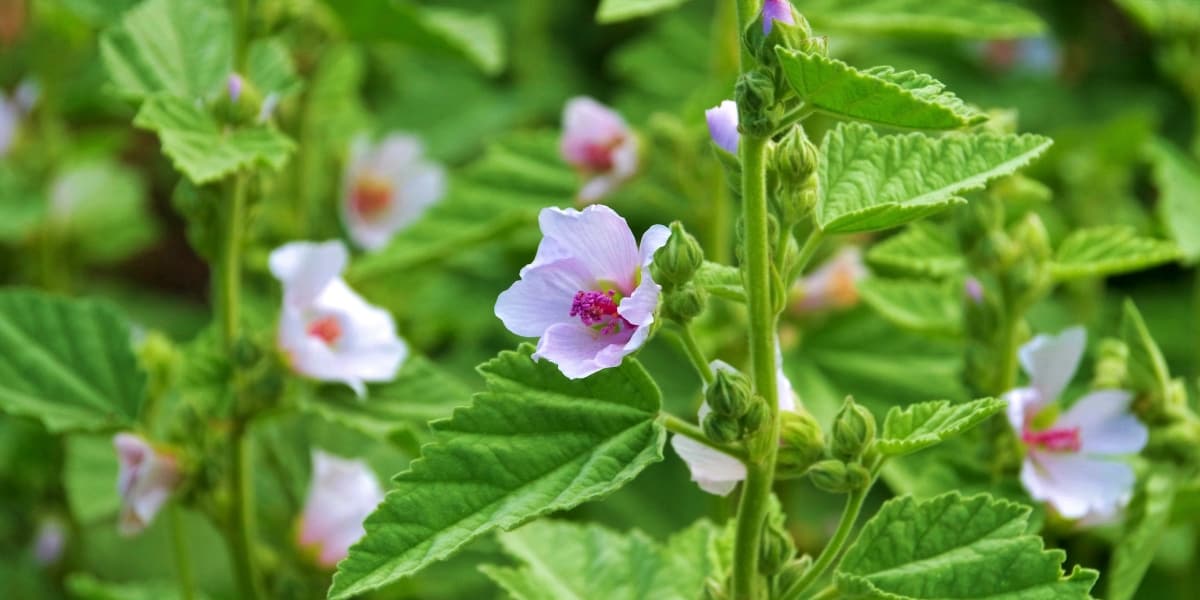
28. Marshmallow Plant (Althaea Officinalis)
- Medicinal Use: Gastric and Mouth Ulcers
Yes, marshmallows were made from the root of this plant dating back to Ancient Egypt. Sadly, modern marshmallows don’t use the plant to make them any longer. Yet due to growing in multiple places all over the world, it remains a medicinal plant in use to this day.
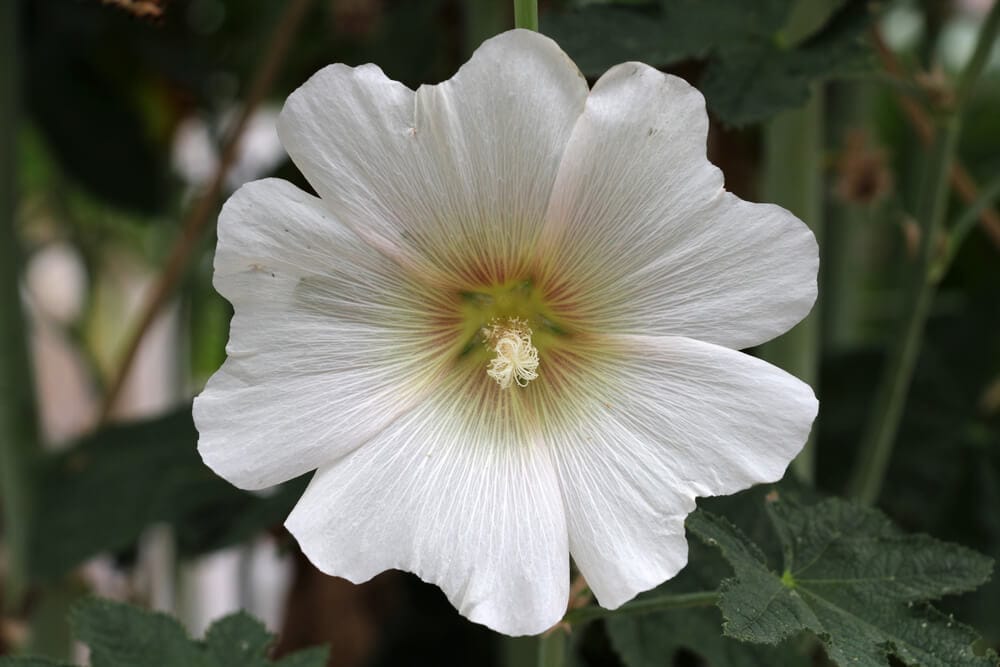
The original use for the plant was to use for throat and gastric ulcers. One would either gargle some tea of sorts with it and spit it out or people may swallow to help with the GI issue. Syrup from the root of the plant was made for helping some respiratory issues too.
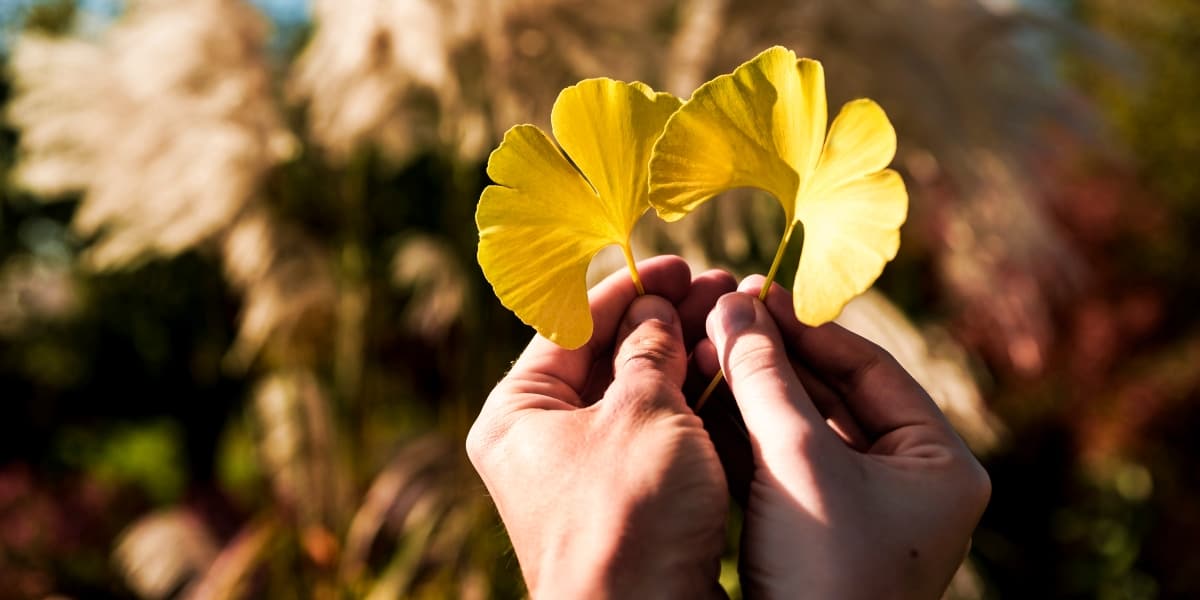
27. Ginkgo (Ginkgo biloba)
- Medicinal Use: Sexual Dysfunction, Headaches, Asthma, Inflammation
After nearly going extinct millions of years ago, the Ginkgo somehow made it through. Although cultivated all around the world, it only grows in the wild in China. It is said that Ginkgo has several medicinal uses, but what are they? First off, it is known to help treat Sexual Dysfunction like low libidos and erectile dysfunction.
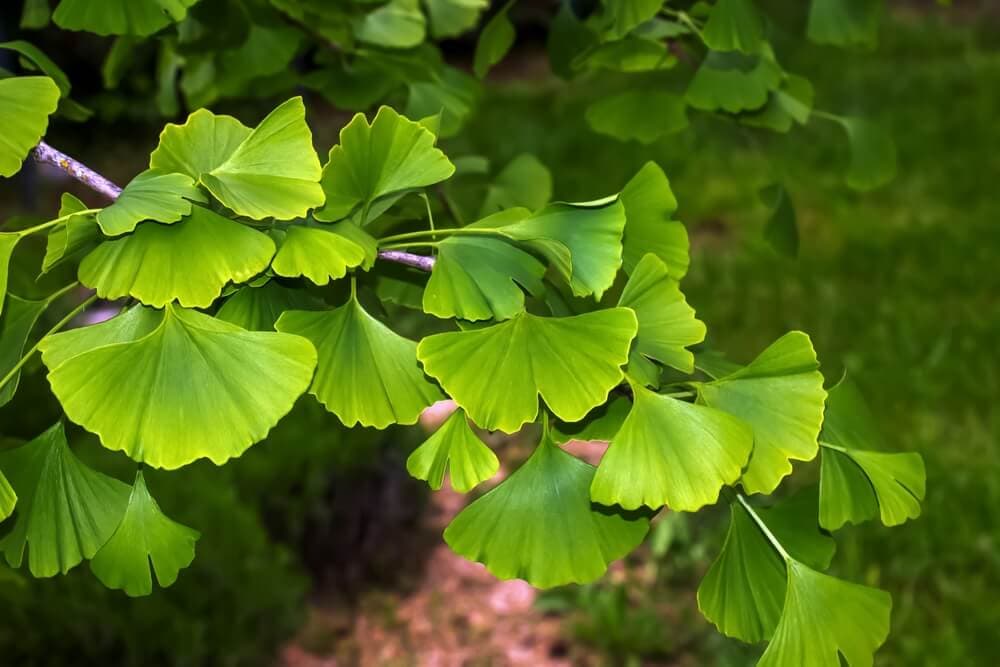
It has also shown to be useful for symptoms of premenstrual syndrome (PMS). The Chinese have used it to help with headaches and migraines for centuries as well as treatment for Asthma and some COPD issues. It can also help with blood circulation and inflammation. However, numerous brain-related diseases or disorders it is said to be useful for are debatable.
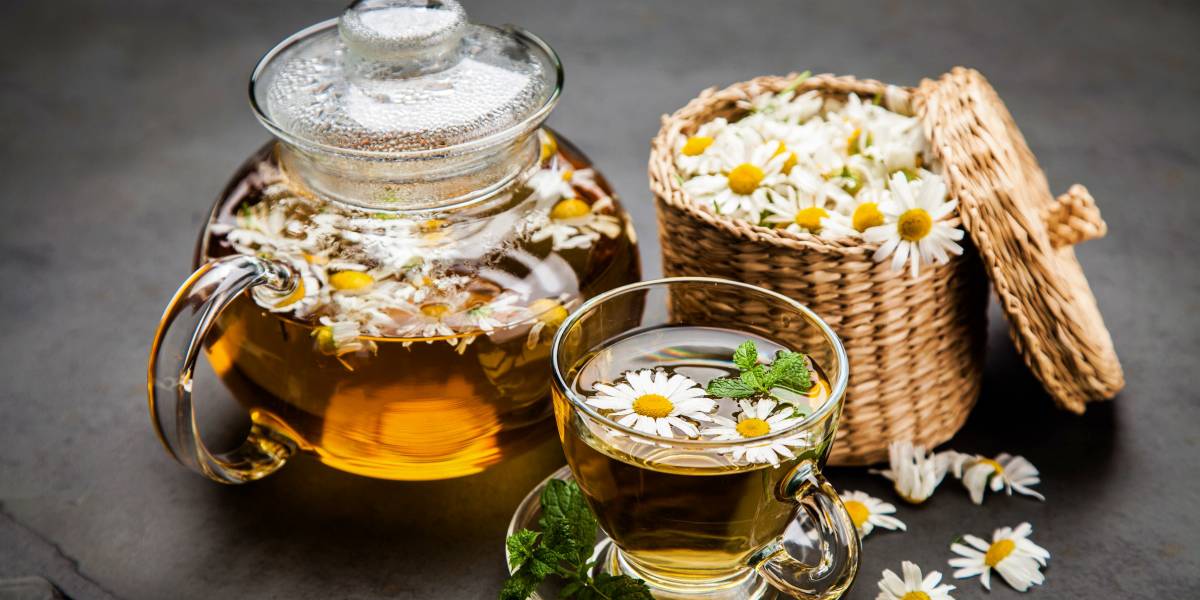
26. Chamomile (Chamomilla)
- Medicinal Use: Inflammation, Ulcers, Acne, GI Disorders
Chamomile is one of the world’s most notable herbal ingredients, especially in North America. Historically speaking, Chamomile has been used by people often for beer and tea. Yet people eventually found that it can help fight fever, ulcers, inflammation, and some gastrointestinal disorders. It helps as a soap as well as mouthwash.
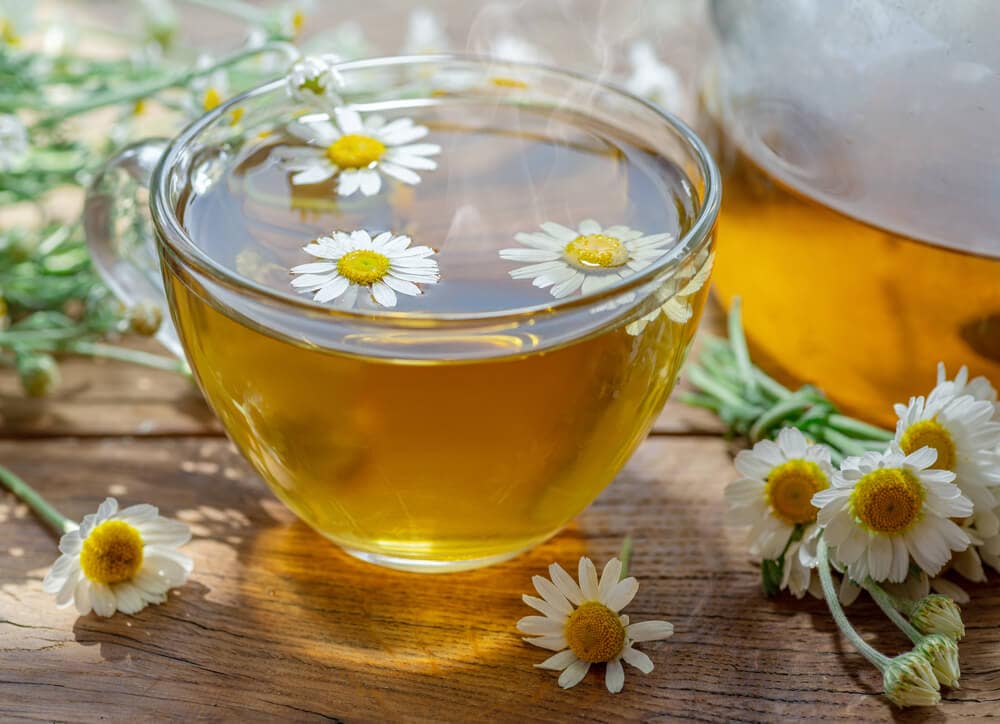
Allowing it to be used in numerous cosmetics and commercial soap products. Camomile is also used in topical skin creams that fight acne too. Since it is used in drinks to help with numerous different issues, there are some drug interactions to look out for. Therefore, it is advised to ask your doctor before consuming it while pregnant or on other medications.
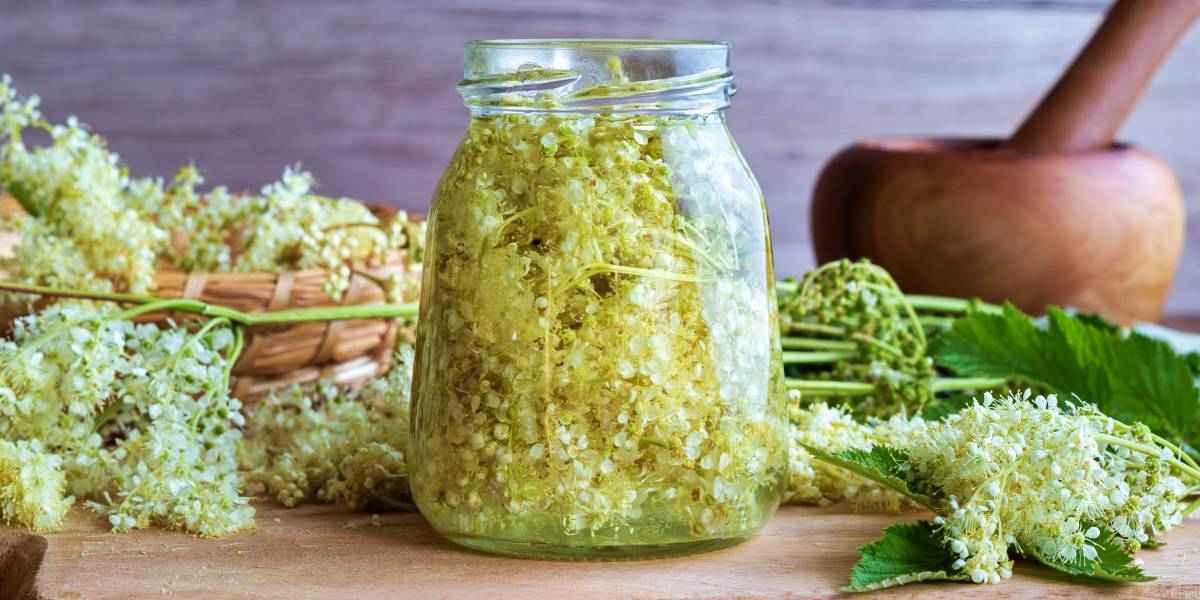
25. Meadowsweet (Filipendula ulmaria)
- Medicinal Use: Inflammation, Gout, Fever
Meadowsweet Plants have tremendous taste and smell. This has allowed it to become a popular ingredient in certain foods as well as aromatic products. It tastes so good that several wines and beers added it on top of a number of jam products. While it’s used a lot for taste reasons, Meadowsweet is a notable medicinal plant.
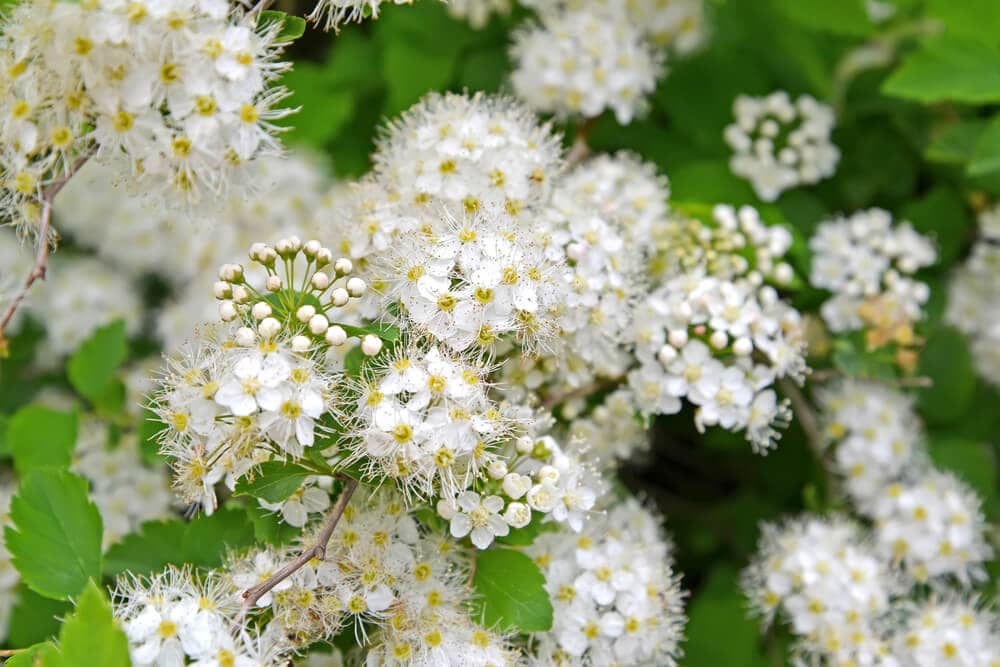
Felix Hoffman is a notable Bayer company chemist who introduced heroin to the masses. Bayer marketed itself as a pain relief company, but they eventually moved from heroin to Aspirin. Funny enough, Meadowsweet used to have another botanical name, Spiraea ulmaria. Yes, Meadowsweet is basically modern-day Aspirin. It sparked the invention of several non-steroidal anti-inflammatory medications we see today.
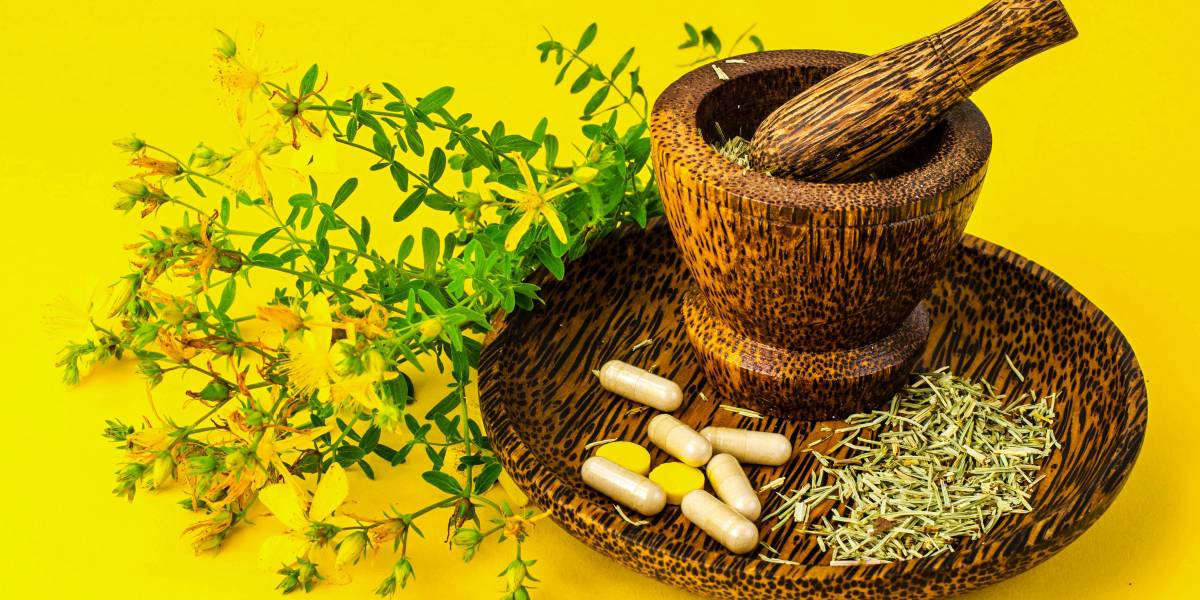
24. St. John’s Wort (Hypericum perforatum)
- Medicinal Use: Depression, OCD, ADHD
St. John’s Wort is a bit different than some from the similar Hypericaceae family. There have been numerous tests and trials with the use of the plant. Most of them revolve around seeing if it truly helps with depression at all. Sadly, depression can have multiple causes with several great medications not helping certain individuals.

Therefore, it’s truly tough to know if St. John’s Wort actually helps. This plant seems to be linked to helping a lot of different brain-related disorders. In fact, some claim it helps with OCD and ADHD. Like depression, both can be helped by some pharmaceutical medications. Yet others may not work, so it is possible that this plant can help some with these disorders.
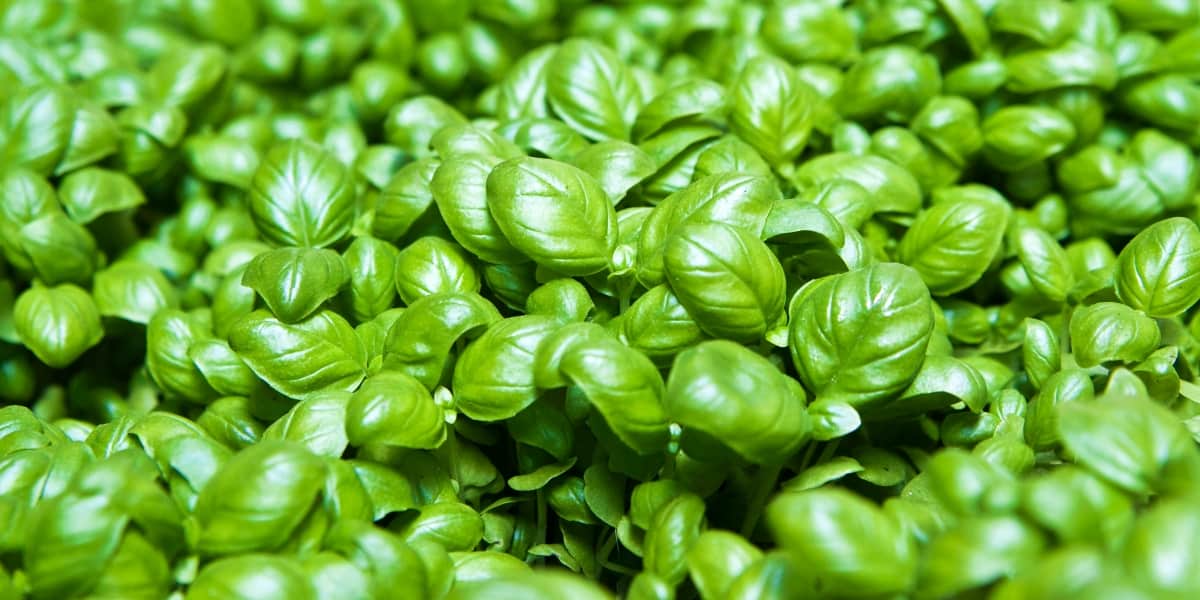
23. Common Basil (Ocimum basilicum)
- Medicinal Use: Colds, Kidney Issues, GI Trouble
Basil, specifically the Common Basil, may very well be in your kitchen cabinet right now. People have known of its medical properties for years. Several Essential Oils use Basil, but these do not always work as some claim. However, Basil itself is pretty useful.
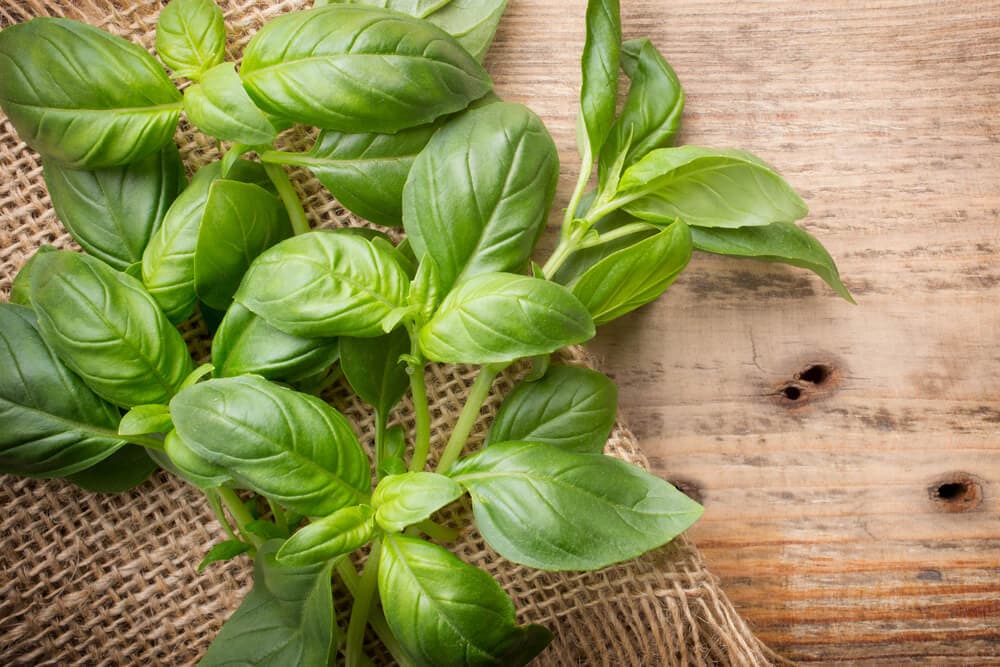
We also now know it helps multiple gastrointestinal issues such as stomach spasms, loss of appetite, and intestinal gas. Yet has also proven to help with kidney problems and colds. It has also been able to help warts and treat some snake and insect bites. Although if the latter two do occur, more than just Basil should be used if possible.

22. Lady Ferns (Athyrium filix-femina)
- Medicinal Use: Intestinal Issues, Menstrual Problems
One can find Lady Ferns in countries within the Northern Hemisphere. The most common areas to see them in are, obviously, highly woodland sections of land. Think about your average forest. We know them as “Lady Ferns” due to their reproductive structures being hidden or hard to see. Keep in mind that the rhizomes of the plant make it poisonous to humans if eaten raw.
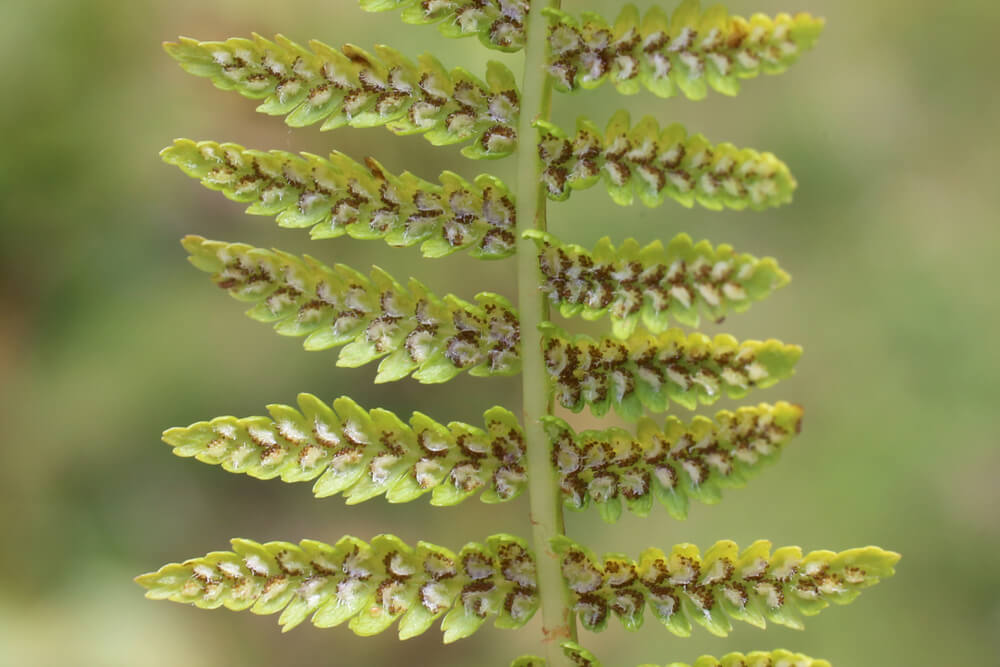
However, once you cook the ferns, they’ll be safe to eat. For its medicinal use, it mostly helps a lot of female issues. It has been useful in preventing water from breaking in pregnant women as well as menstrual problems. Yet they also can help with intestinal issues, weak blood, and partially even things like gonorrhea.
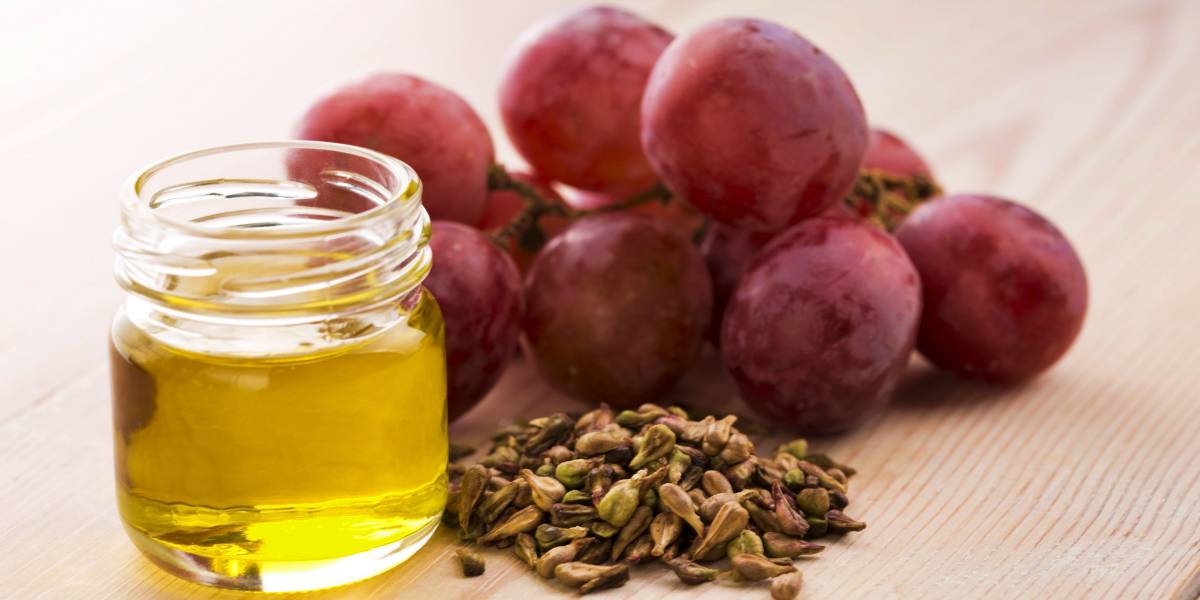
21. Grape Seed
- Medicinal Use: Swelling Problems, Bad Blood Circulation
Grape Seed is as it sounds, it is the seed of what you can plant in order to make actual grapes. There are several grapes that have seeds within them that can easily be removed and replanted. Meanwhile, others do not possess any seeds inside. Specifically, we’d like to highlight grape seed extract.
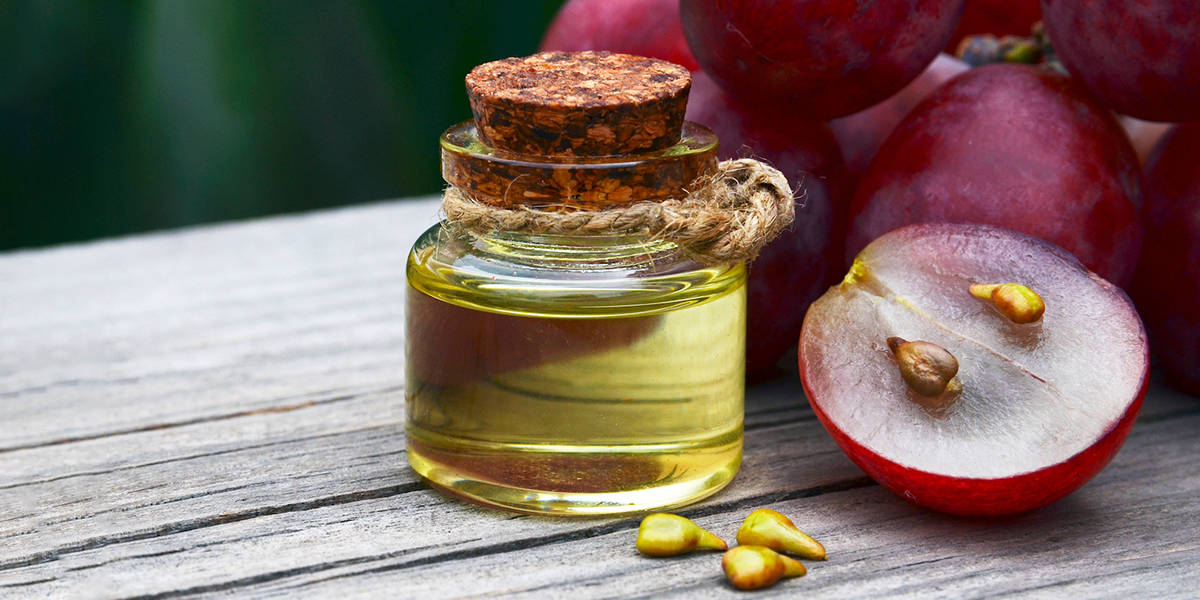
This is the same stuff you get several wines and juices from, funny enough. This is truly one of the best medicinal plants that science loves. It can help with swelling problems, poor blood circulation, and can even help with some eye diseases if caused by diabetes.
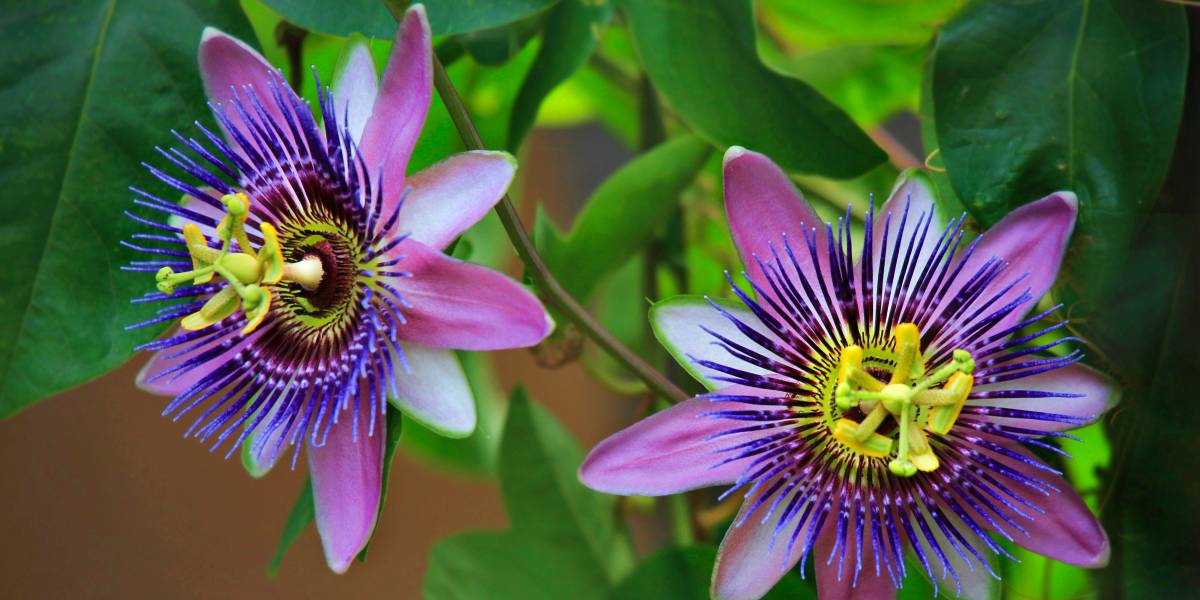
20. Passion Flowers (Passiflora)
- Medicinal Use: Anxiety, Sleep Issues
Passion Flowers are part of a huge family of around 550 species. Since there are so many of these medicinal plants out there, you’ll likely see them pretty much anywhere. People can use these flowers as a small sedative. We can technically call dried extract from the plant a dietary supplement in some countries.
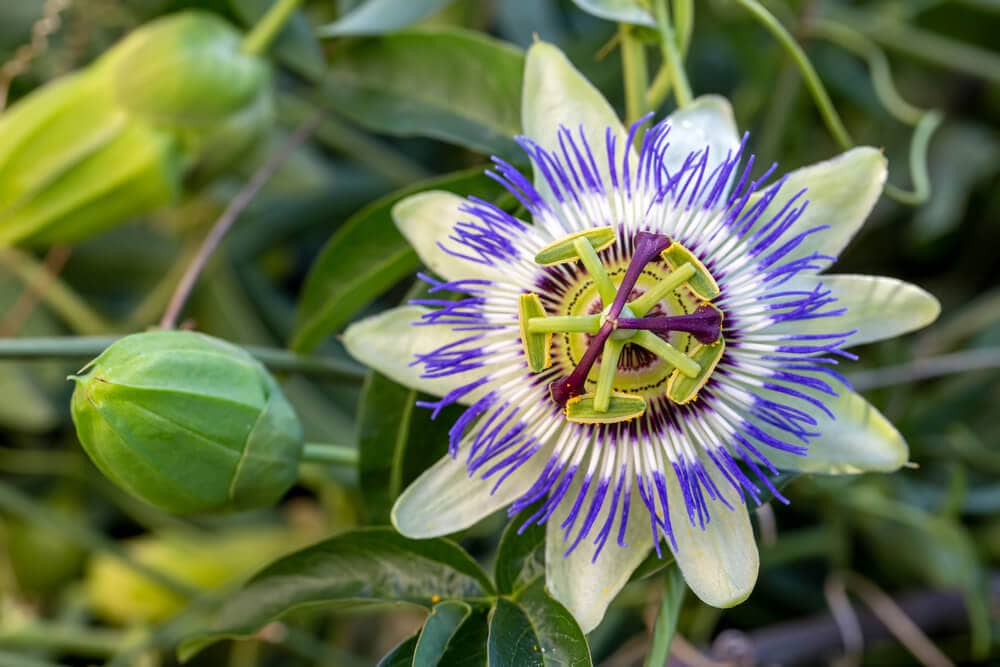
One can use this to help slightly with anxiety and hyperactivity issues due to their sedative effect. However, pregnant women need to be careful when using them because they apparently can induce contractions. Despite this, they can also cause some nausea, dizziness, and abnormal heart rhythms among other things.
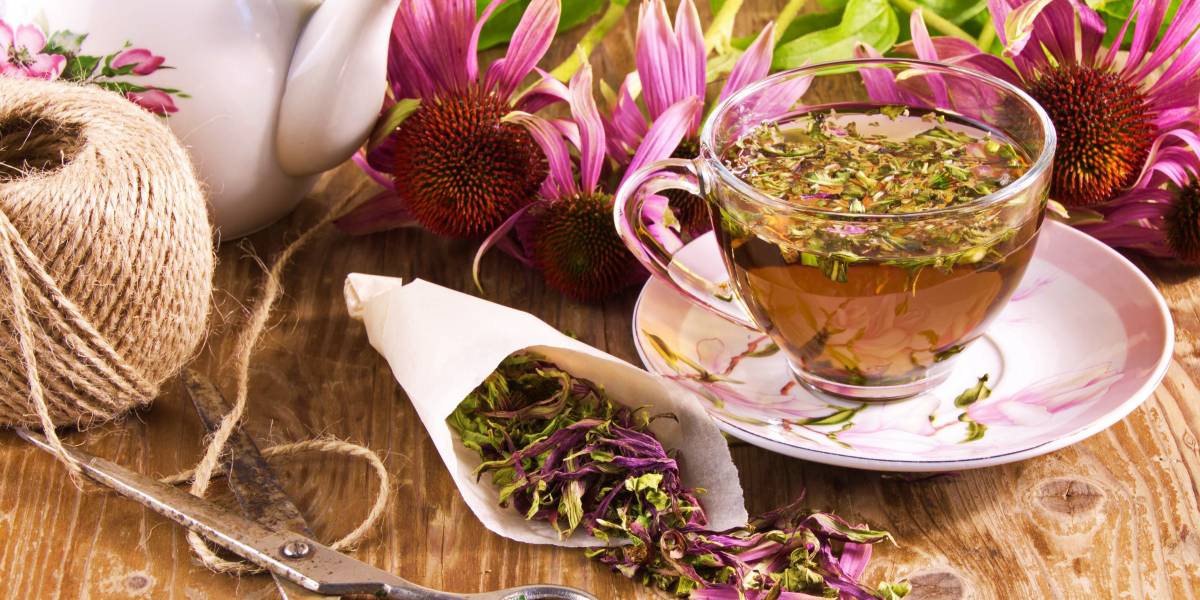
19. Coneflowers (Echinacea)
- Medicinal Use: Excessive Coughing, Sore Throat, Headaches
Most know Coneflowers by their botany name of Echinacea. There are ten species in the fami ly still living today but two are endangered. The entire family can be terrific medicinally. While there is no true evidence that they can treat the Common Cold or Cancer like some claim, they are still very useful.
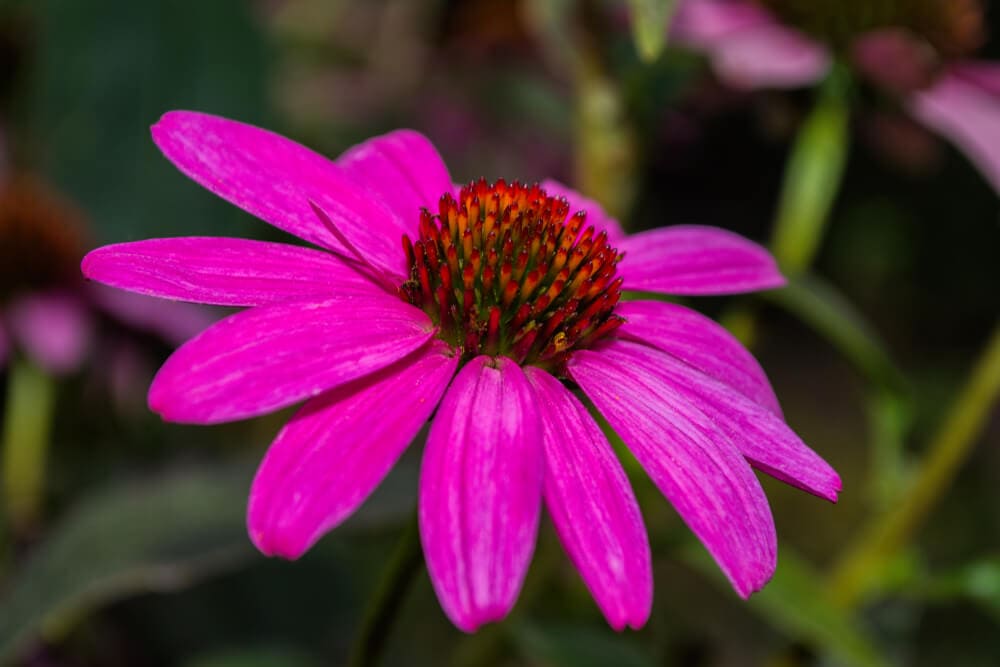
The rumor of helping colds possibly began because Echinacea plants have helped with sore throats and coughs. Some people also see some headache relief from them as well. Native Americans loved the plant for its medicinal value, so it’s likely it can help with a lot of random issues.
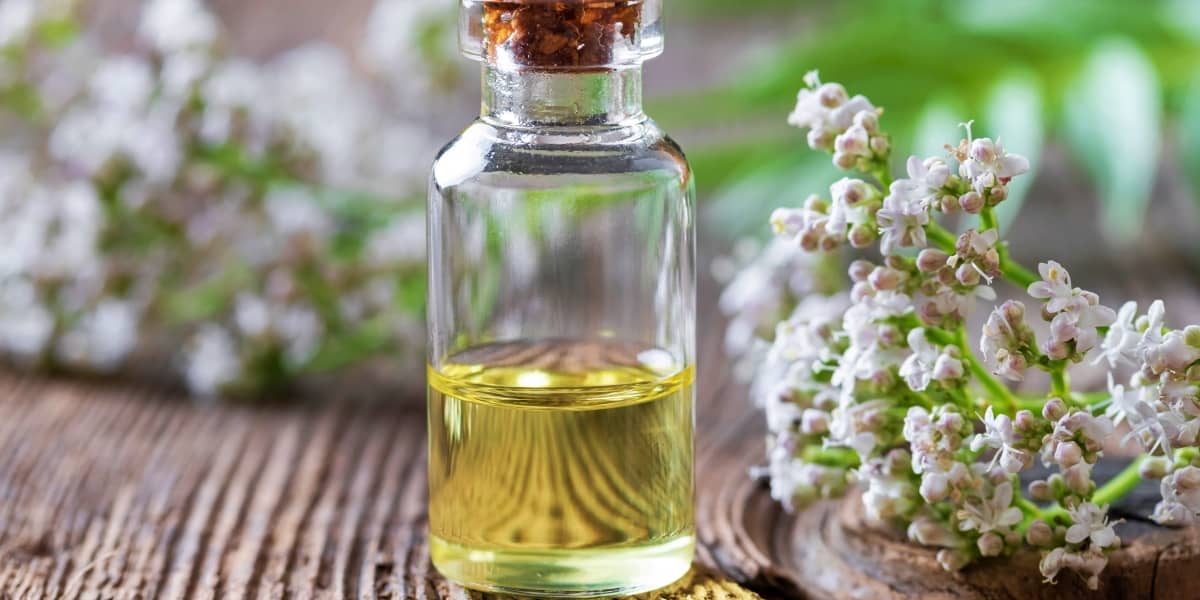
18. Valerian (Valeriana officinalis)
- Medicinal Use: Sleep Problems, Stress, Anxiety
The Valerian plant grows all over Europe and Asia. This plant is actually within the same family as the honeysuckle plant. However, the medicinal use of the Valerian plant isn’t going to be in the honeysuckle. Several places in Europe and Asia sell extracts from the Valerian root.
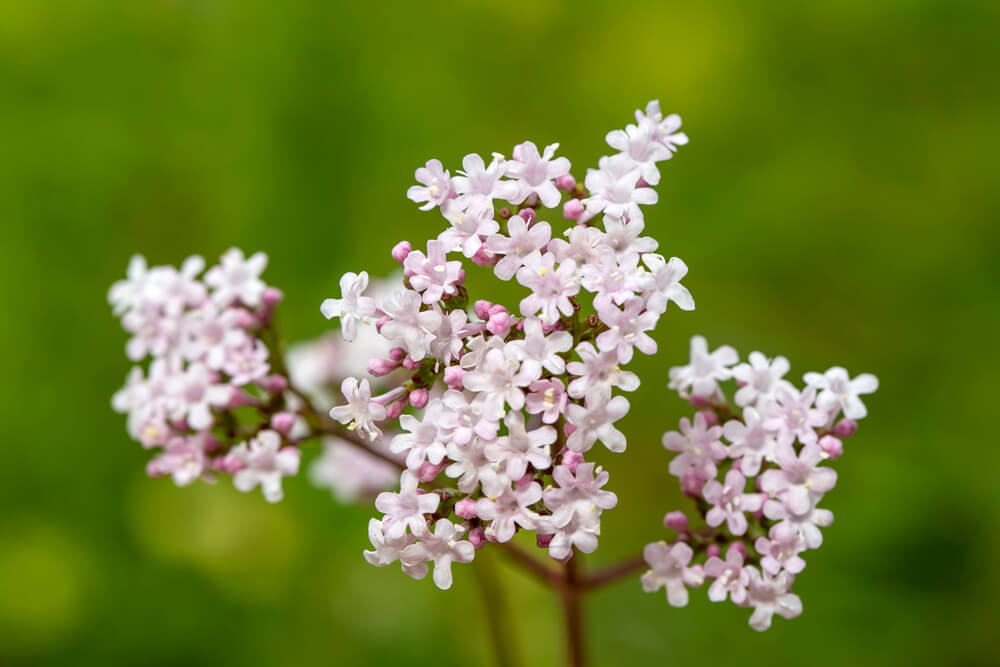
This extract can supposedly treat anxiety, sleep issues, and even act as a dietary supplement. While there needs to be more research to prove its success in handling anything brain-related, it’s pretty much proven to be useful as a sedative. This may be why some assume it helps with stress and anxiety.
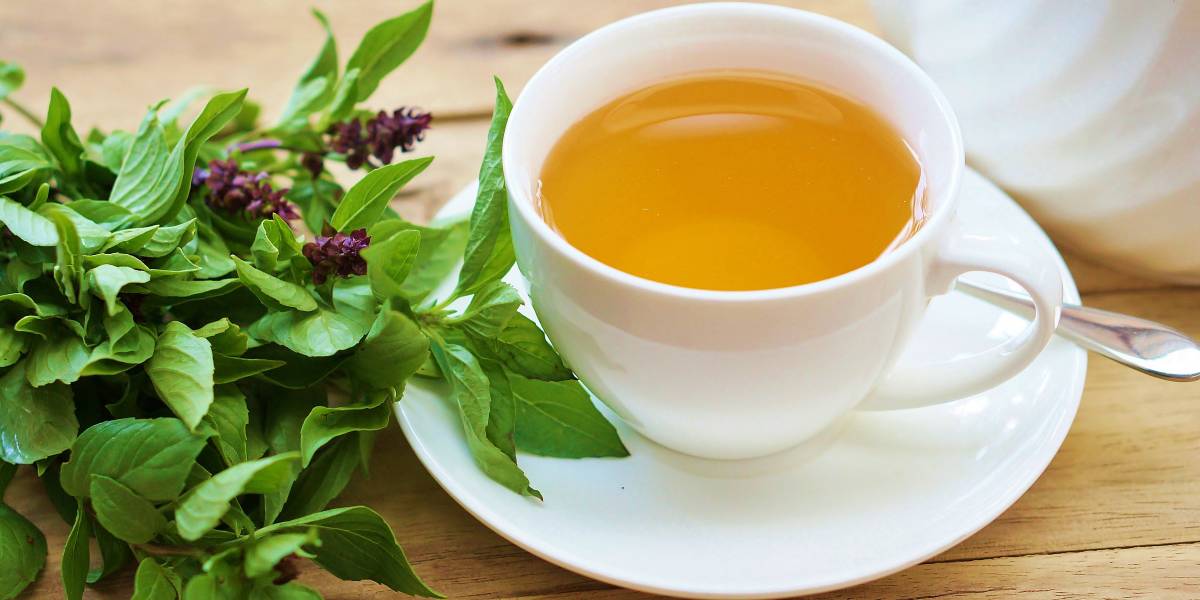
17. Holy Basil (Ocimum tenuiflorum)
- Medicinal Use: GI Issues, Respiratory Problems, Insect Bites
The reason this version of Basil stands out is due to its connection to Hinduism. The Holy Basil is essentially worshipped as the earthly avatar of the Hindu Goddess of Wealth, Lakshmi. Due to this, many treat Holy Basil as a healing agent. However, it cannot quite do as much as some claim.

For centuries, however, it has been a truly proven insect repellant. It has also shown some signs of helping people deal with symptoms of respiratory issues, as well as GI problems. However, Holy Basil cannot, in any way, help against the flu, diabetes, the common cold, or cancer as some tend to claim. Although it may help with some symptoms from them.
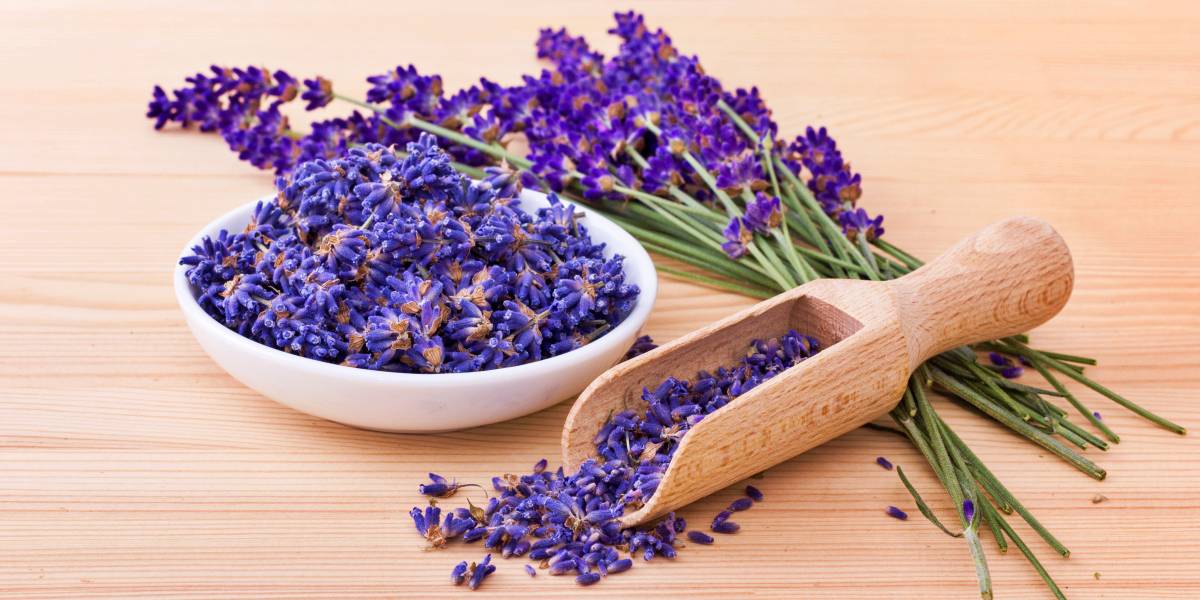
16. Lavender (Lavandula angustifolia)
- Medicinal Use: Digestive Issues, Some Respiratory Issues, Minor Pain
Although there are multiple Lavender plants, we simply are highlighting the most common among them. While some assume that the color of Lavender resulted in the name of the plant, it’s actually the other way around. Several Essential Oils use Lavender as well as some traditional medications. You can even find it in quite a few cosmetics.
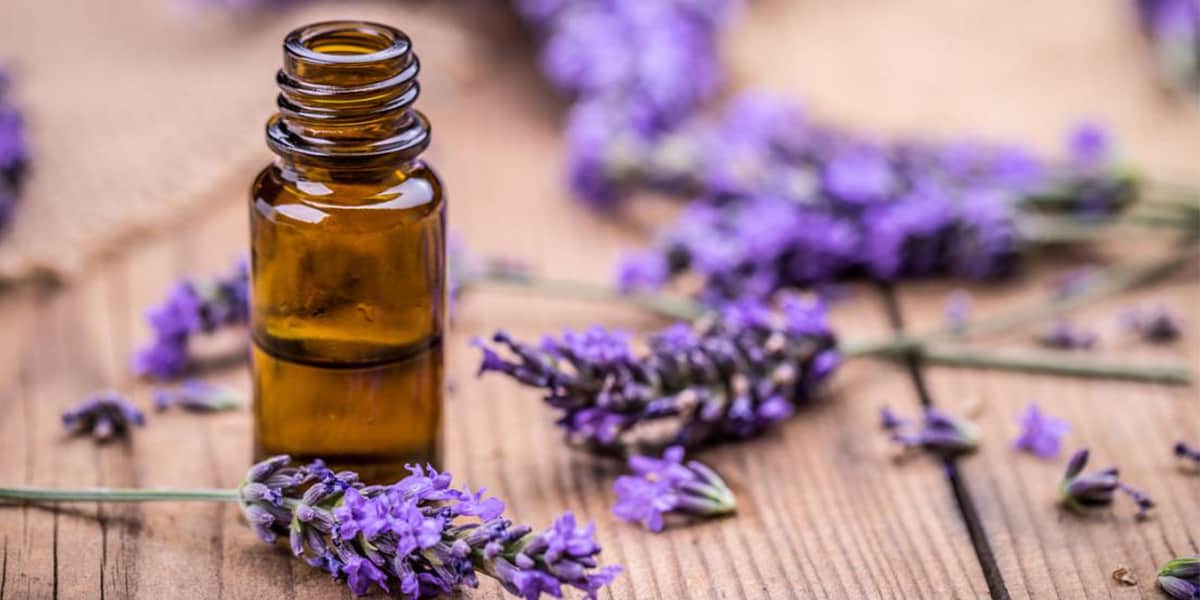
Lavender can help with some respiratory sicknesses. It has a great scent, allowing it to be a popular addition to some soaps and perfumes. This also could be the reason for its success with respiratory problems. It has also shown signs of helping with digestive trouble. You can even use it for some minor pains.
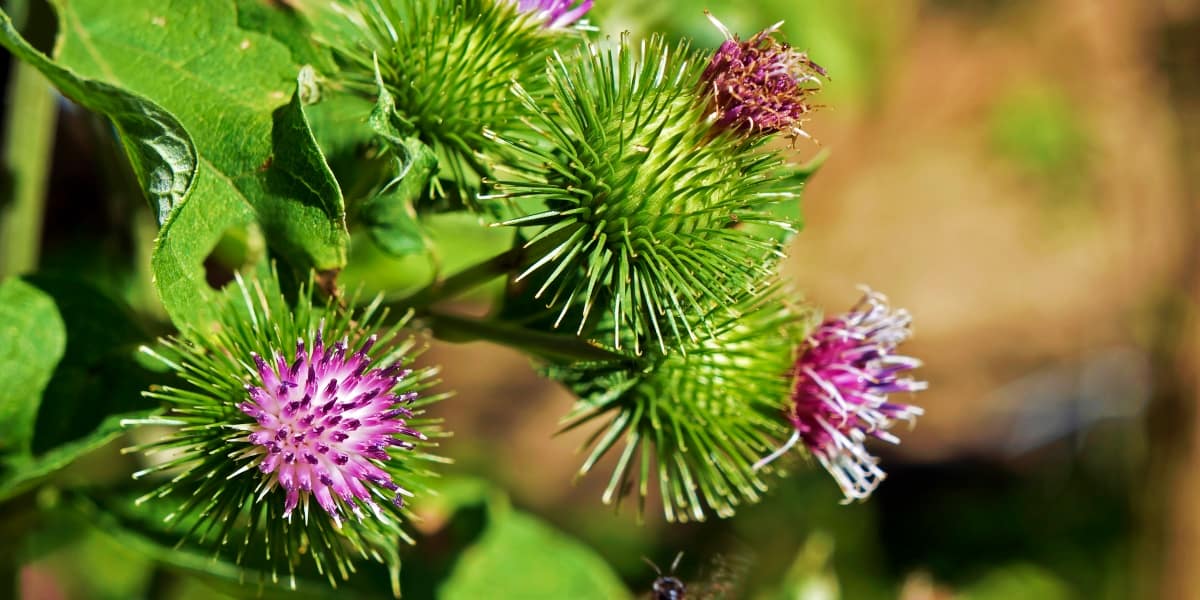
15. Greater Burdock (Arctium lappa)
- Medicinal Use: Joint Pain, Fevers, High Blood Pressure, Bladder Infections
The Greater Burdock Plant tends to do most of what people claim it can do. At least, as long as it is used correctly. Several Eurasian and even the Chinese used this medicinal plant to help with symptoms from colds and other viruses.
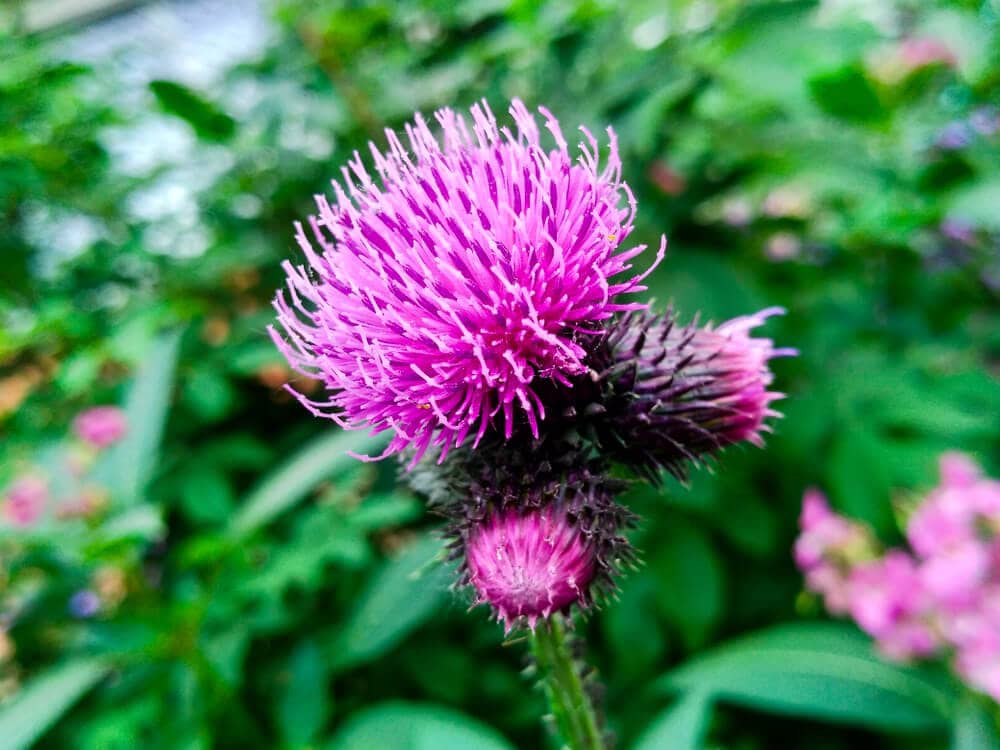
It has proven to be useful in increasing the flow of urine, helping with bladder infections, and assisting with complications of syphilis. Due to being capable of killing several germs, it can even help with some fevers and joint pain. It acts somewhat like an NSAID, which is likely why people find it can also help with blood pressure issues and treat acne.

14. Marigold (Calendula officinalis)
- Medicinal Use: Pain Relief, Viral Issues, Fungal Problems
Marigold Plants are in gardens all over the world, likely due to their beauty. They grow in the wild too, but usually only in areas where the temperature is typically warmer. The plant is edible and therefore used in several salads across Europe, Asia, and even North America. They are one of the most effective medicinal plants we know of today.
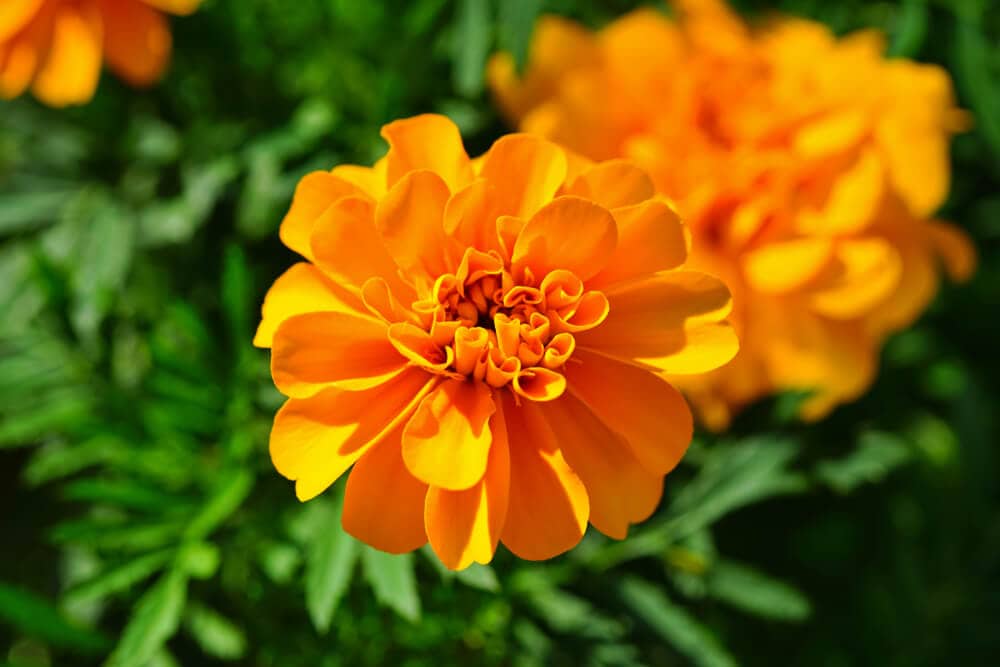
The extract from Marigold plants has some anti-viral and anti-genotoxic properties when in vitro. We also know it to have several anti-inflammatory properties. This is likely due to the extract having methanol and ethanol. Marigolds even can be labeled as astringent in spite of the fact that they are not high in tannins.
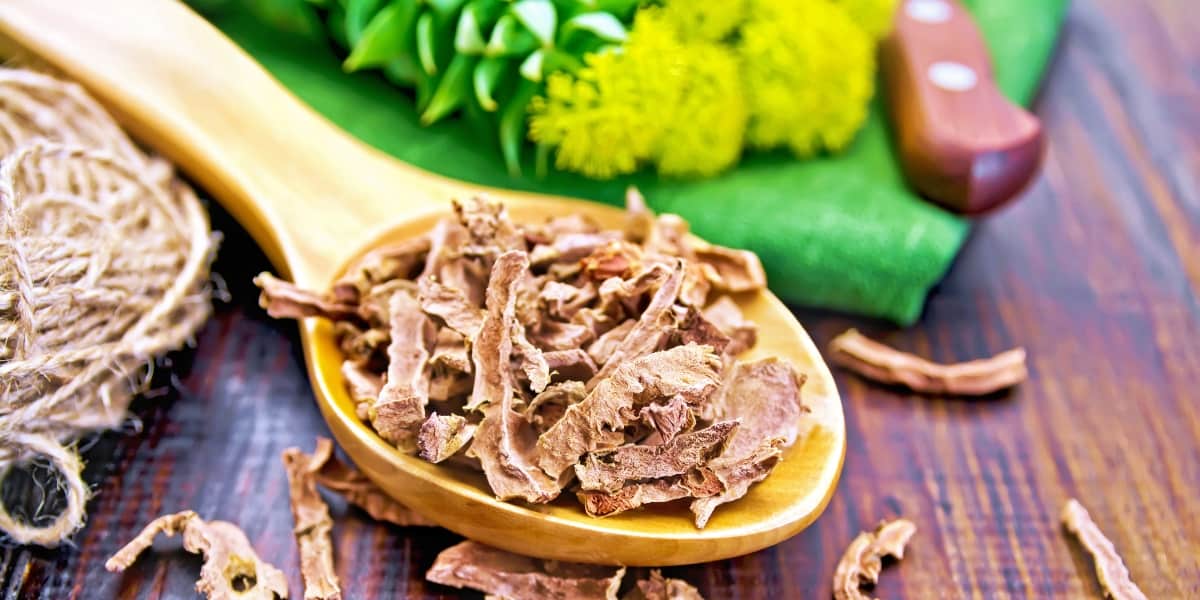
13. Golden Root (Rhodiola rosea)
- Medicinal Use: High-Altitude Sickness
The Golden Root of the Rhodiola Rosea plant actually grows in the wild within colder environments. This includes several arctic areas, which can come as a surprise. We should mention that some wild claims have been made about the plant that is debatable. It has shown no true signs of treating cancer, depression, or anything similar to this.
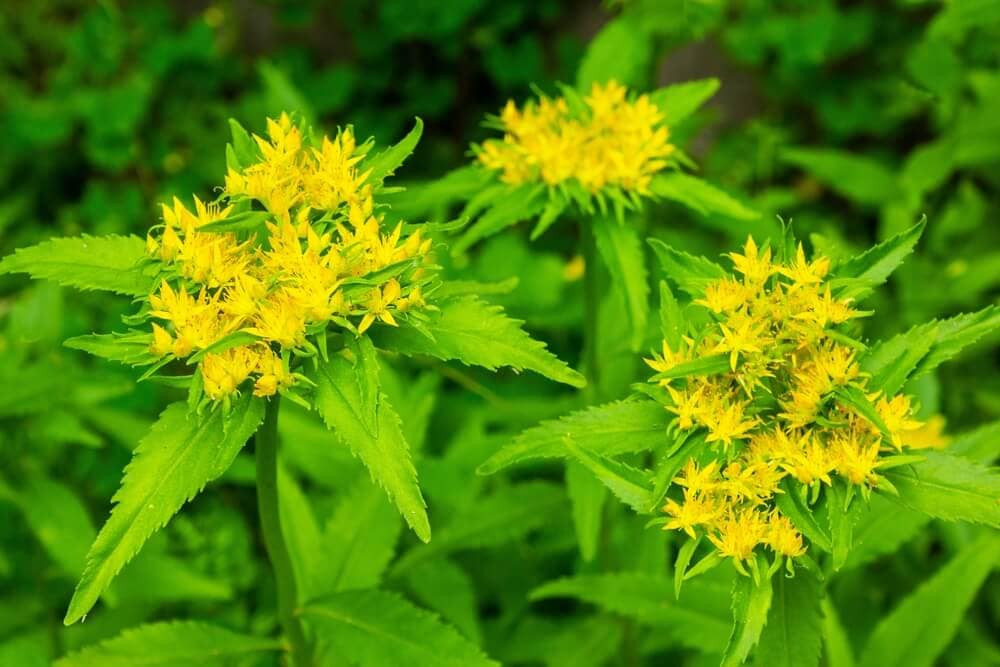
The U.S. FDA to send warnings to manufacturers to stop making such claims in 2019. However, while the wild claims of the Golden Root are quite overboard, some medicinal properties hold up well. The plant has been used for centuries to help with high-altitude sickness and endurance within colder environments.
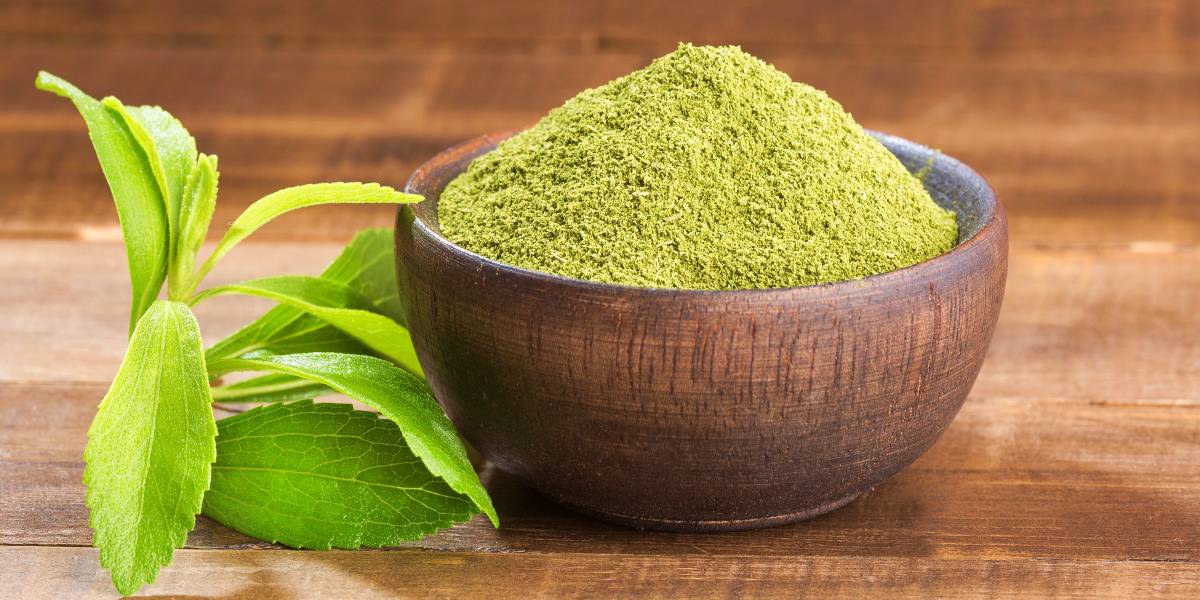
12. Candyleaf (Stevia rebaudiana)
- Medicinal Use: Cavities, High Blood Pressure
You can find the Candyleaf plant in South America, usually in Brazil and Paraguay. People often call it the Candyleaf due to some of the properties being in alternative sweeteners. In fact, one can buy several sweetener products under the name “Stevia” all over the world.
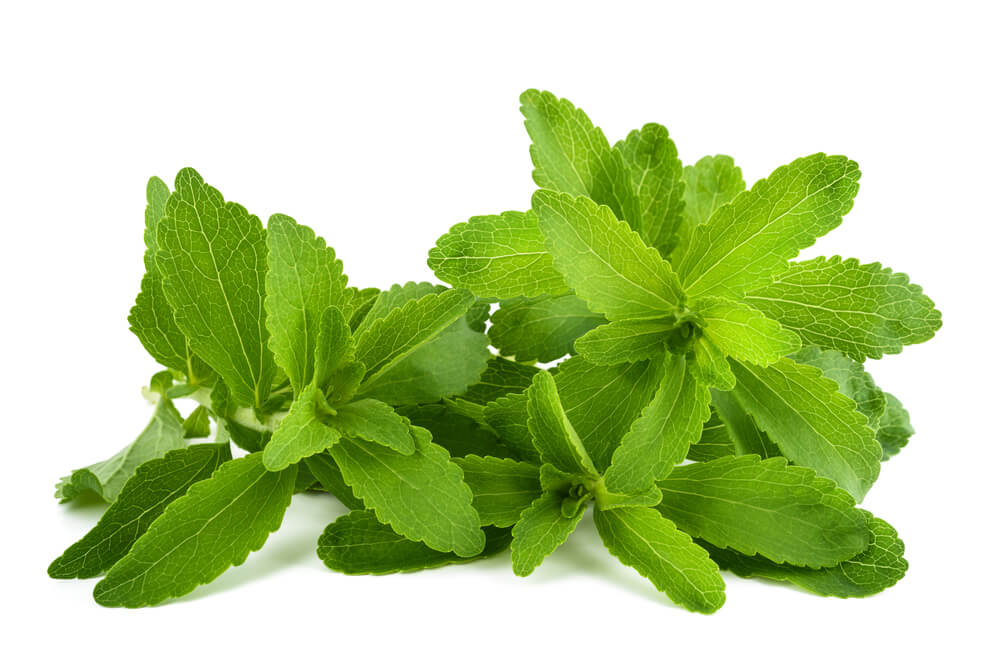
Due to being a great sugar substitute, it’s likely helpful in weight loss as people switch from sugar. It also does not possess Streptococcus mutans bacteria, which is a major cause of tooth cavities. Thereby using it over sugar can prevent cavities. Certain glycosides within the plant dilate blood vessels and cause more urine flow, making it useful for high blood pressure.
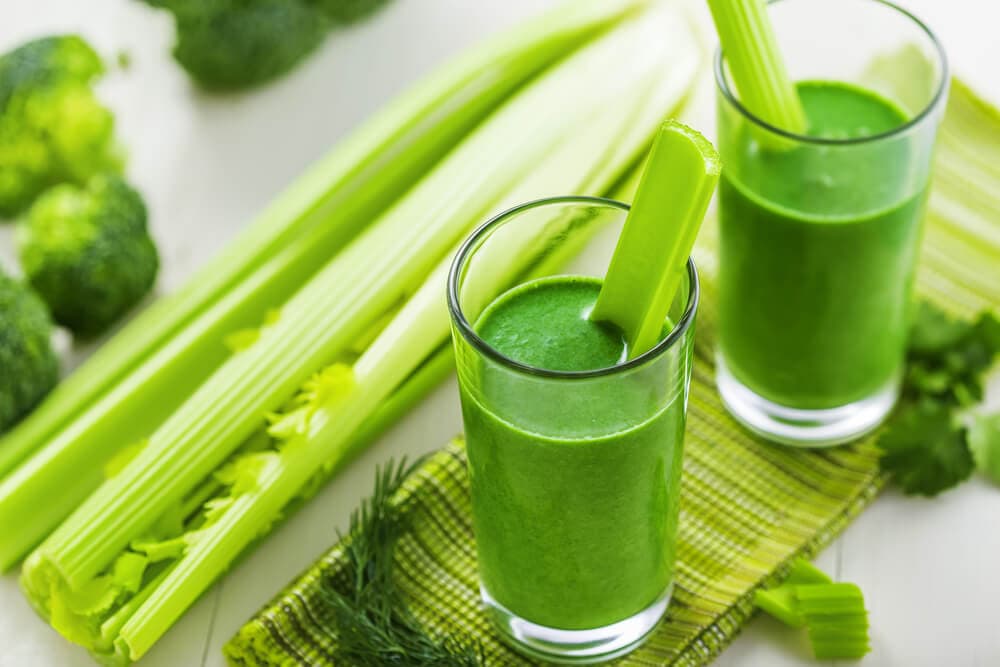
11. Celery (Apium graveolens)
- Medicinal Use: Digestive Issues, Pain Relief
Celery is incredibly popular, so we see it all over the world today. The cultivation of the plant is pretty massive. It is obviously a popular ingredient for salads, wild rice, soups, and so much more. Due to its antioxidants and nutrients, it can be very useful for digestive problems.
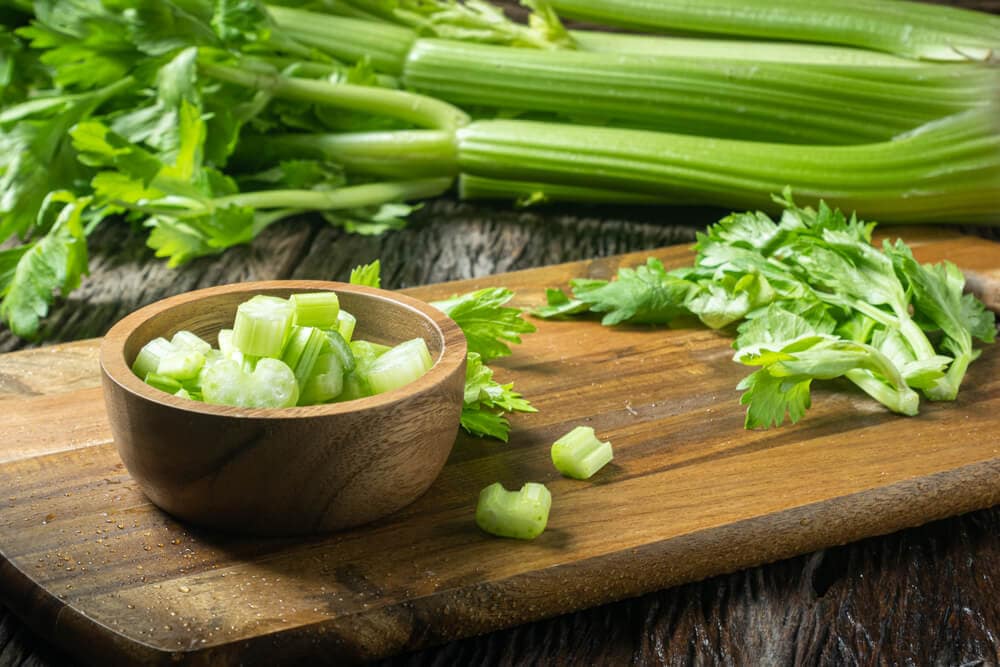
On top of this, it can help reduce inflammation in the body too. Although studies are ongoing regarding how effective it can be there. Since it is part of the same plant family as carrots, celery also possesses tons of great vitamins. You can get Vitamins A, B, and C from celery along with potassium, folate, and molybdenum.

10. Parsley (Petroselinum crispum)
- Medicinal Use: High Blood Pressure, Bladder Infections, Asthma, GI Issues
Parsley looks good and decorative, so restaurants love using it to “dress up” a plate. Parsley is a Biennal Plant, this is a type of plant that takes two years for it to completely grow once someone plants it. The Leaf, Seed, and Root are all used to make herbal medicines.
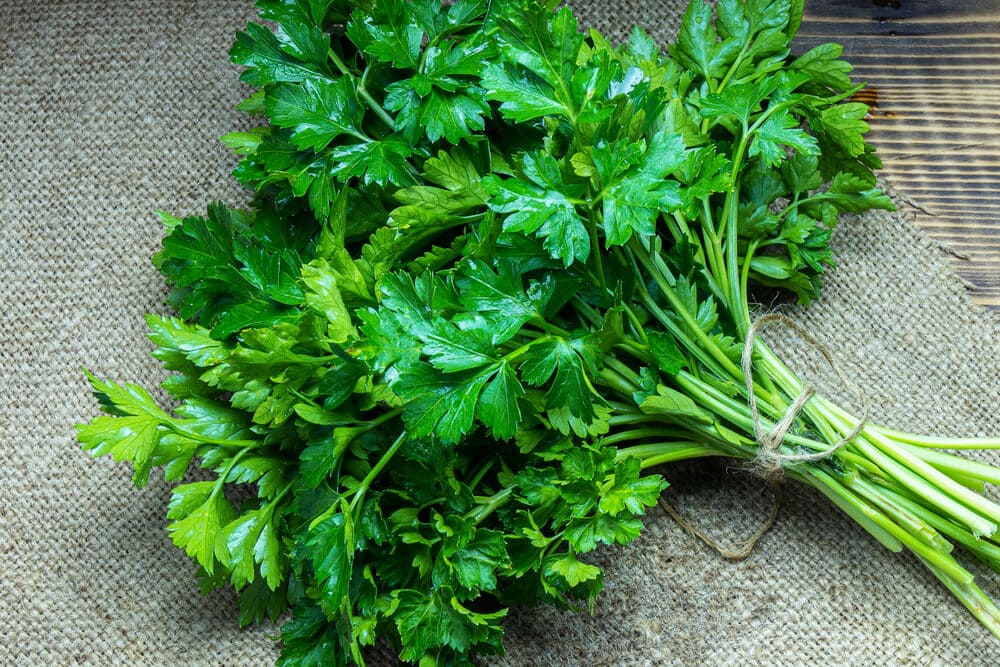
All three help to treat different issues. On one side, the treatment can be for gastrointestinal issues, while another side is helpful for problems with coughing or asthma. Yet the biggest one that people love is that it can help with bladder infections, high blood pressure, and even some kidney stones. Parsley is truly one of the best medicinal plants we have today.

9. Ashwagandha (Withania somnifera)
- Medicinal Use: High Blood Pressure, Low Testosterone
People can see Ashwagandha in the wilds of India. However, people cultivate it all over the world. It is one of the most popular herbal medicines within the Ayurvedic Medicine world. This is basically Ancient Indian medicine. We have seen it remain popular for hundreds of years in the herbal community. Therefore, one assumed Ashwagandha has some true medicinal use.
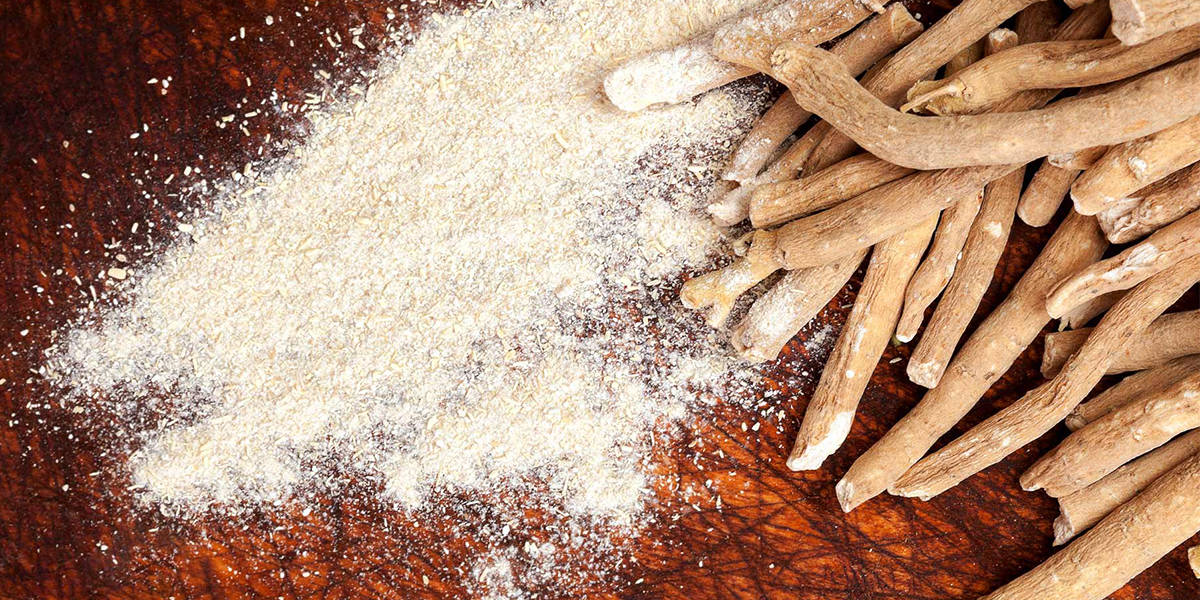
Although there is not really enough evidence to prove it can reduce stress, anxiety, or depression; it depends on who you ask about it. The plant has shown that it can lower blood pressure and has helped some men boost testosterone and thus boost fertility. If this is the case, and one has stress or depression due to problems in these areas, then they would no longer deal with this if those problems can be helped.
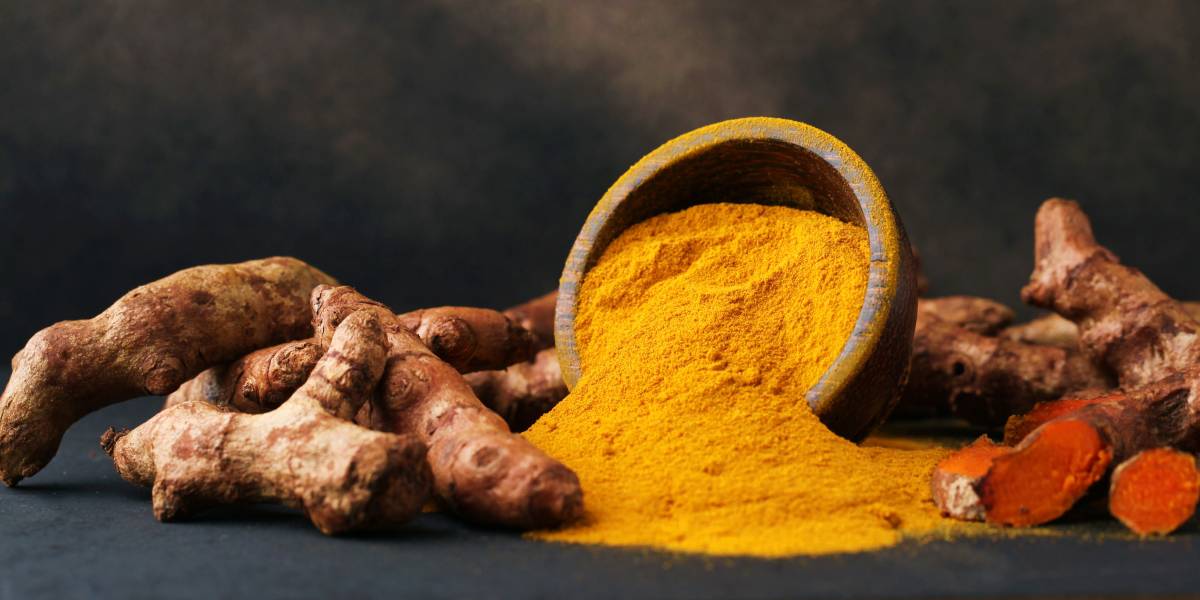
8. Turmeric (Curcuma longa)
- Medicinal Use: Inflammation
Turmeric Plant can be hard to grow with several other plant species in the same garden. Yet when you use it medicinally or in food, it’s well worth all the trouble it puts people through. First and foremost, the root of this plant is what people can use for things like cooking.
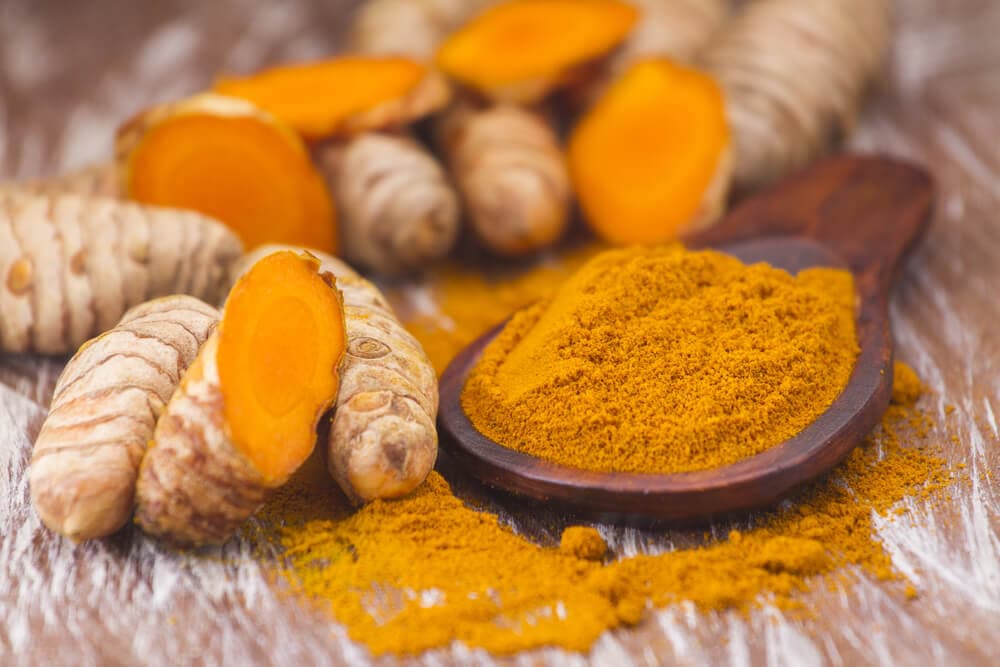
Today, you can find Turmeric Supplements sold in some pharmacies and stores around the world. The real thing that may help the plant stand out is its Curcumin properties. While hard to study, there has been some proof that it can help with inflammation. However, there is no real proof behind claims that Turmeric or Curcumin can help with any brain disorders.
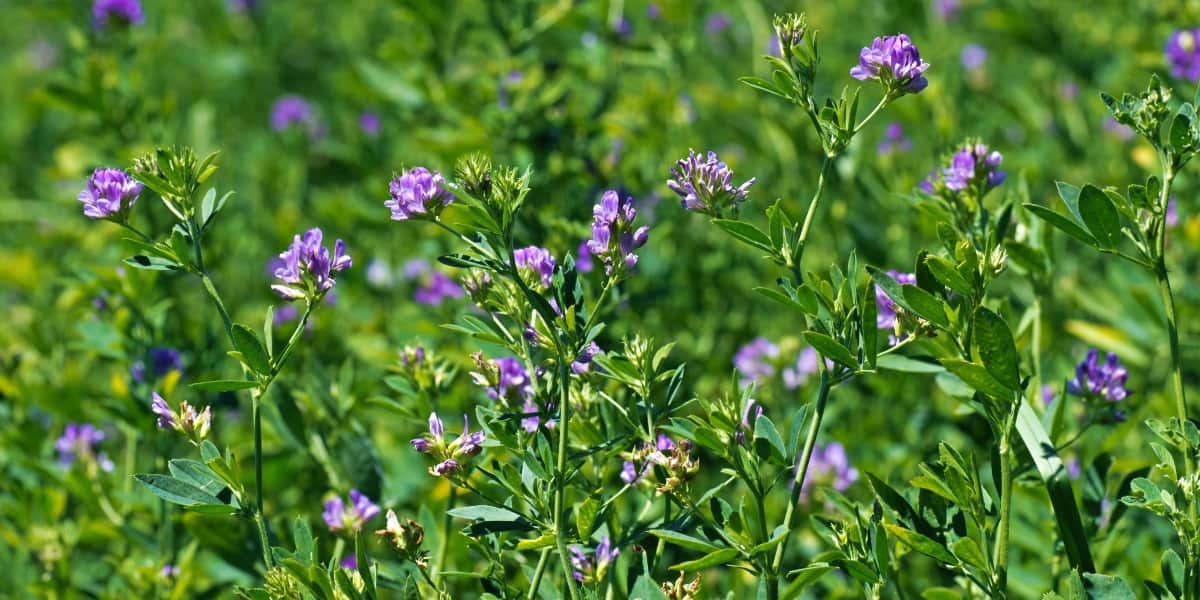
7. Alfalfa (Medicago sativa)
- Medicinal Use: Auto-Immune Diseases, Female Hormone Issues, High Blood Sugar
The Alfalfa plant is yet another popular addition to our list of the best medicinal plants. While North Americans call it the Alfalfa Plant, the rest of the world often calls it the Lucerne Plant. It’s a popular addition to certain cuisines in Southeast Asia. However, one must be careful with it. Unsprouted, raw Alfalfa can be poisonous.
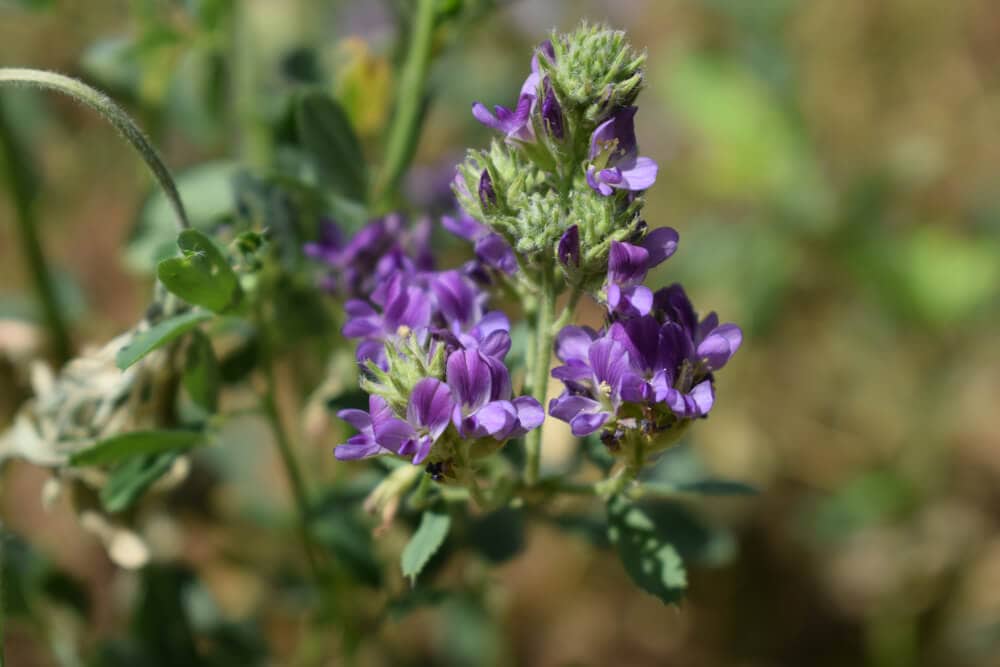
In the herbal world, if used correctly, there has been some success with using Alfalfa. When used for auto-immune diseases, it can make the immune system more active and cause some improvement. It has also shown some success in helping women with estrogen levels, and it has been shown to help some with lowering blood sugar levels.

6. Rosemary (Salvia rosmarinus)
- Medicinal Use: Minor Muscle Pains, Poor Blood Circulation
People love Rosemary, as you can add it to just about any food. Heck, people serve some burgers and steaks with it! People have been using it since ancient times when they felt it was a tremendous help medicinally. Of course, Medicinal Plants from those periods do not always do as they claim.
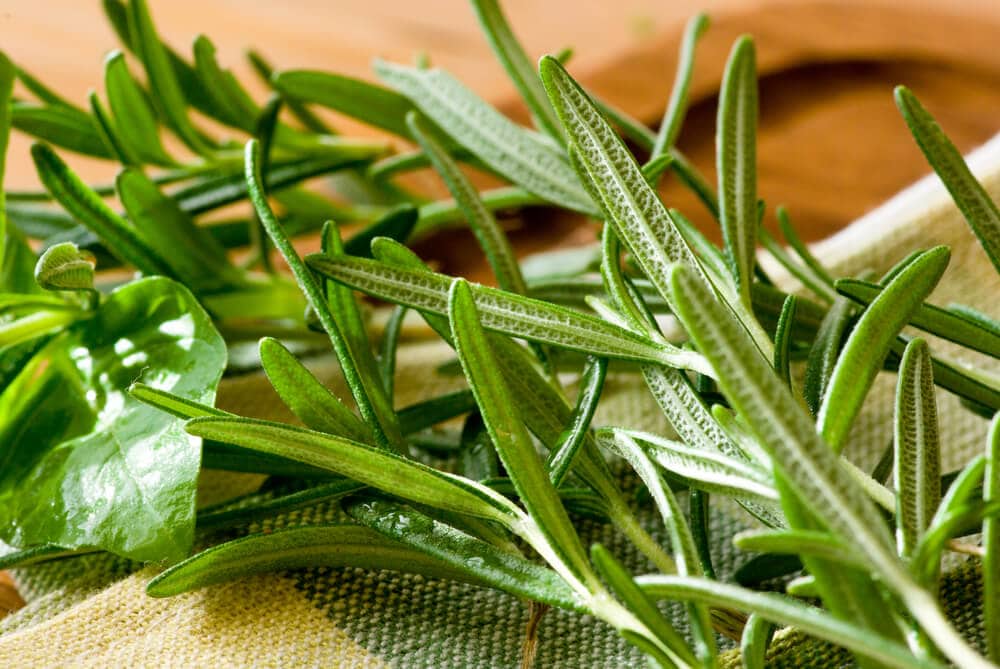
However, Rosemary has held up in some of the claims made about it. It’s said that Rosemary can assist with everything from helping with hair growth to improving memory. While these are debatable, a lot of people have claimed it assisted with muscle pains and boosted the immune and blood circulatory systems. Depending on the person and what they deal with, as well as how much they used, this is plausible.
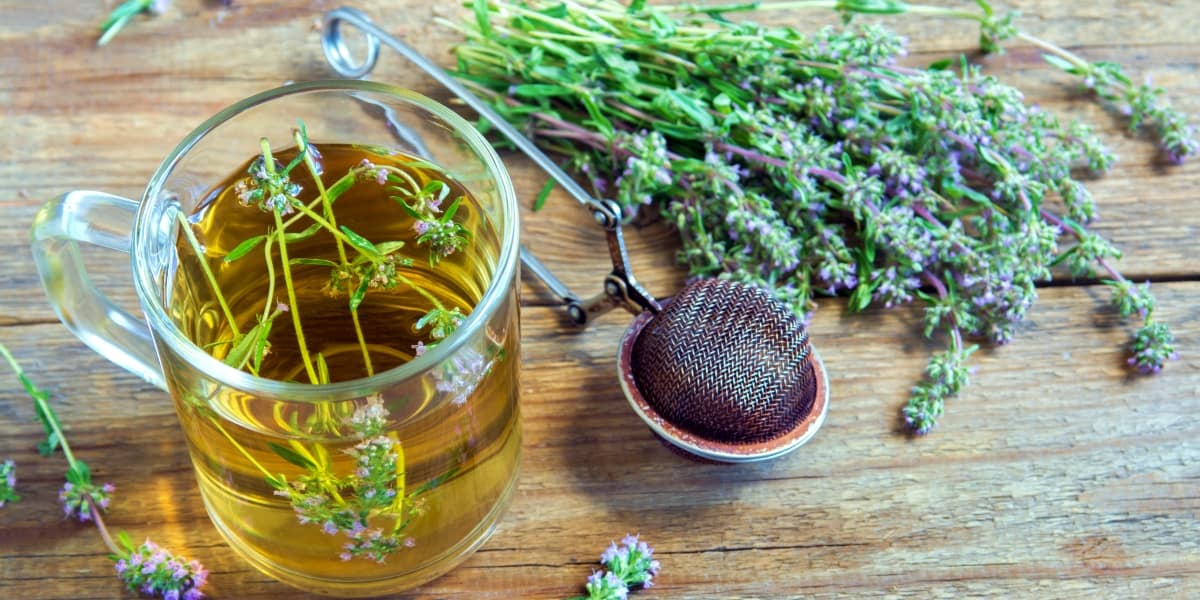
5. Thyme (Thymus vulgaris)
- Medicinal Use: GI Issues, Sinus Congestion
Thyme happens to be a relative of Oregano. They both come from the massive Lamiaceae family. Of course, Thyme is a popular addition to foods, resulting in several having some of it in their kitchen right now. Yet before this, people used Thyme medicinally quite often.

In fact, before we had antibiotics, people would use “oil of thyme” to medicate bandages. When used in food, Thyme can help with stomach pains or intestinal gas. Due to being in the Lamiaceae family, there has been some proof behind it clearing up some allergy issues. This is likely why some have seen success when using Thyme for bronchitis or sore throat problems.

4. Ginseng (Panax)
- Medicinal Use: High Blood Sugar, High Cholesterol, Lack Of Energy
Ginseng is actually in the root of the Panax plant species. There are multiple different types of Ginseng you can find, but each roughly has the same benefits. Ginseng is a popular part of certain energy drinks and even some soaps. The smell it has can open people up a bit, causing it to help with some sinus and respiratory trouble.
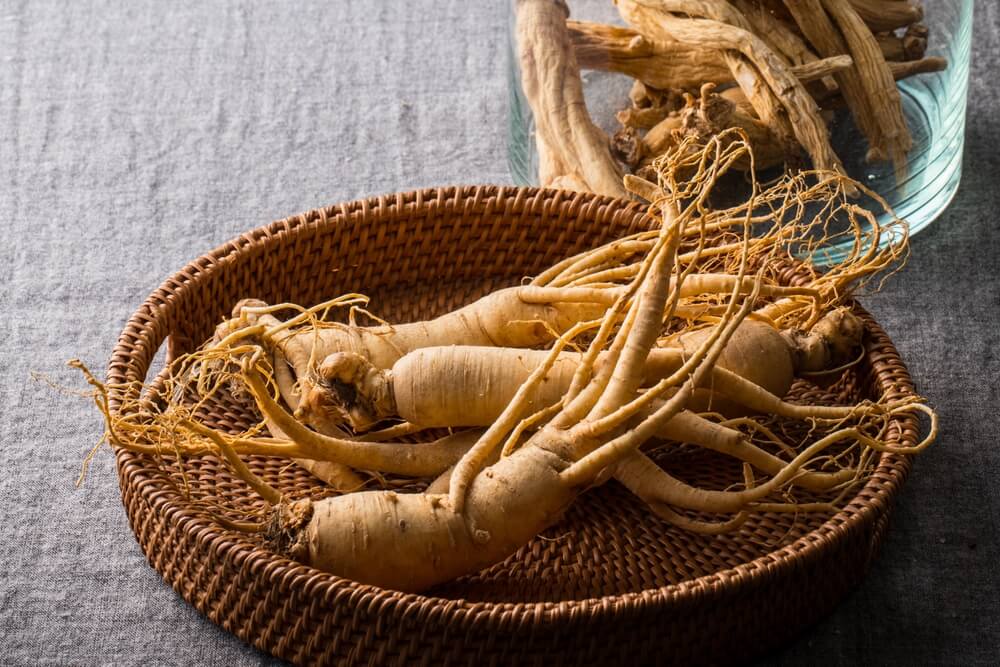
It possesses two natural and useful chemical compounds, ginsenosides and gintonin. Ginsenosides are steroidal glycosides that connect sugar to another functional group. This is why they can help in treating diseases that revolve around high sugar intake. Essentially, ginseng can help boost energy, and lower both blood sugar and cholesterol levels due to this. Gintonin has shown some ability in promoting hair growth as well.
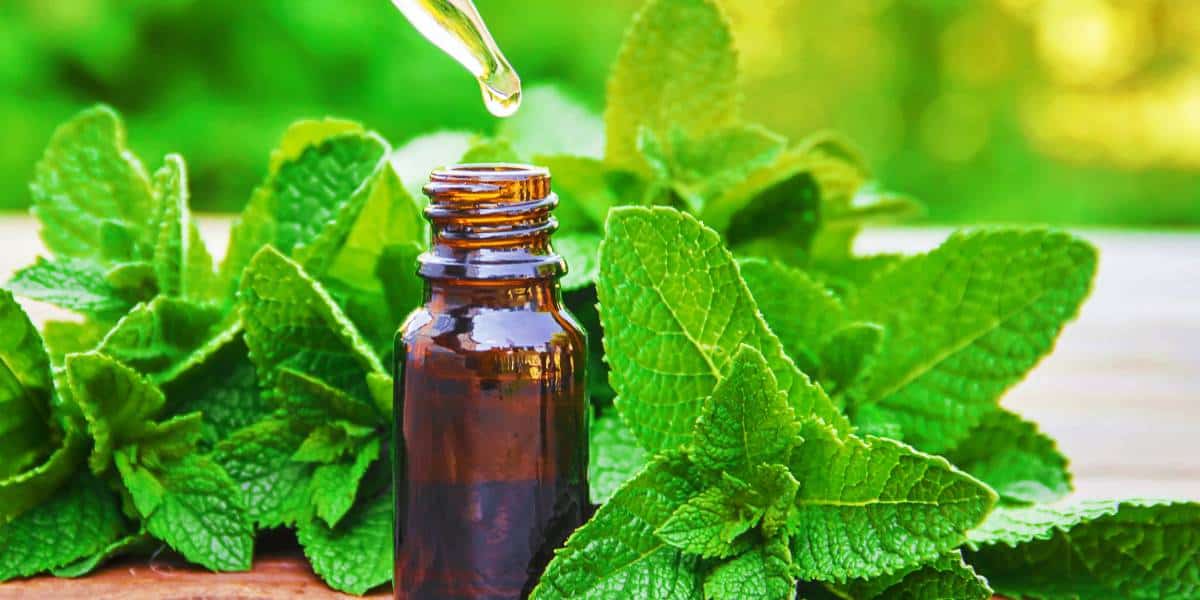
3. Peppermint (Mentha × Piperita)
- Medicinal Use: Minor Pain, Itching, IBS
Peppermint is incredibly popular among medicinal plants and is obviously something we have all used at some point. Yet Peppermint kind of surprises people with its medicinal uses. Peppermint actually began as a hybrid plant. It’s a cross between the spearmint and watermint plants. Both have medicinal properties too.
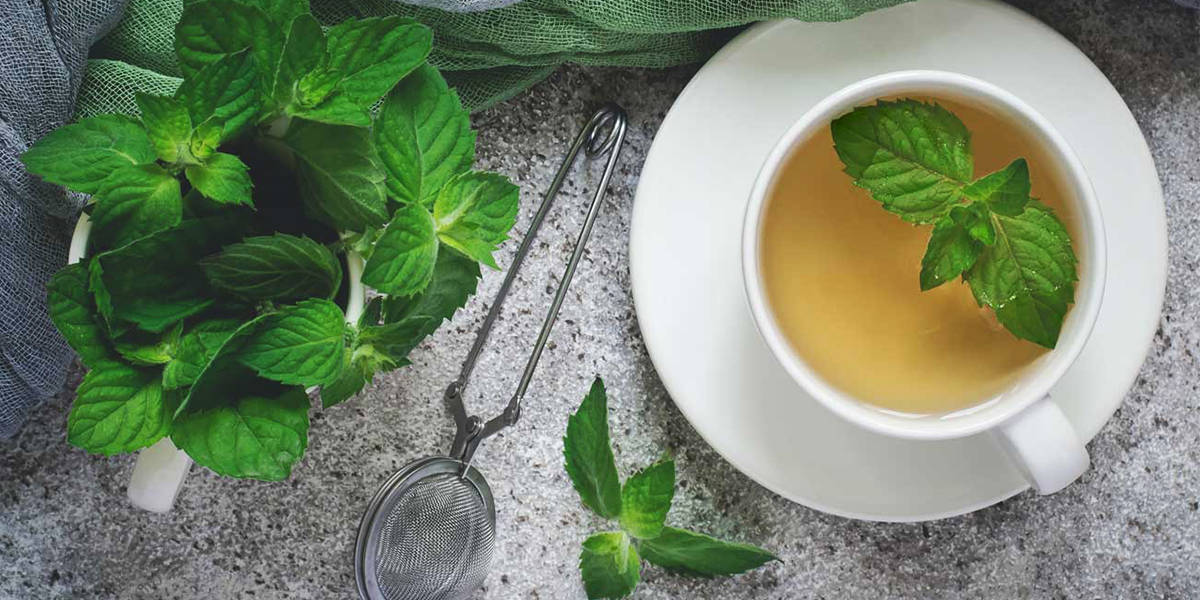
Peppermint has been shown to be useful in treating Irritable Bowel Syndrome(IBS). However, it is in several topical creams for minor muscle pains. On top of this, Peppermint is terrific for itching problems. It can even help somewhat with heartburn when used orally. Outside of this, you can find it in multiple products beyond the medicinal.

2. Ginger (Zingiber officinale)
- Medicinal Use: GI Issues, Minor Inflammation, Minor Muscle Pain
It’s likely that most of us used medicinal plants like Ginger when we were sick and did not even know it. Do you remember drinking Ginger Ale when you were sick as a kid? Clearly, Ginger can help with nausea and soreness as well as some muscle pain and inflammation. It can even help with indigestion and other minor gastrointestinal ailments.
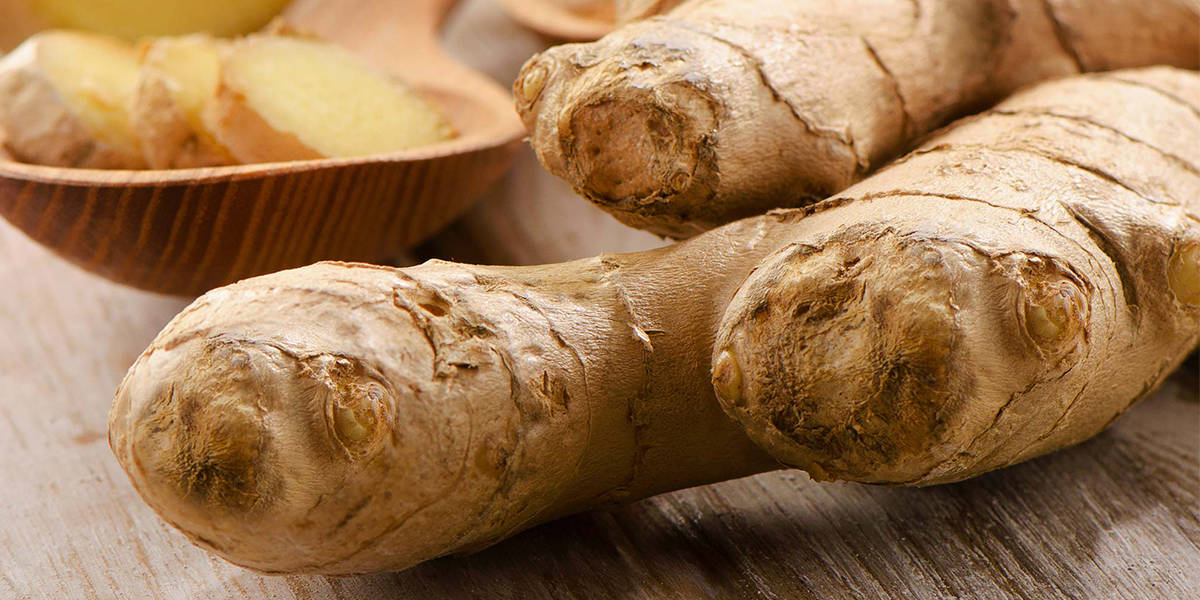
A major bioactive substance in Ginger, known as Gingerol, has been shown to be effective at fighting some infections. There has been evidence to support that it stops some bacteria, especially when it comes to the gums. Fresh Ginger has also shown some success in fighting the RSV Virus too. However, there is no proof that it can help with any brain disorders or diseases.

1. Aloe Vera
- Medicinal Use: Itching, Burns, Skin Irritation, Constipation
Aloe Vera is likely the most difficult to argue against when it comes to medicinal plants. For centuries, humans have used it to treat minor cuts. It has a calming effect on our skin, allowing it to be useful in treating itching problems and some irritation or inflammation of the skin. This may be why several lotions and cosmetics use Aloe Vera so often.

While okay to eat, it depends on where it’s from and the colorization. Non-colorized Aloe Vera is considered toxic to humans. Of course, Aloe Vera has been known to help with constipation for centuries, so the toxicity is likely what allows it to be useful for that. Treat it like what your parents might have used Epsom Salts for, except this won’t completely blow your colon off.
EVEN MORE MEDICINAL PLANTS
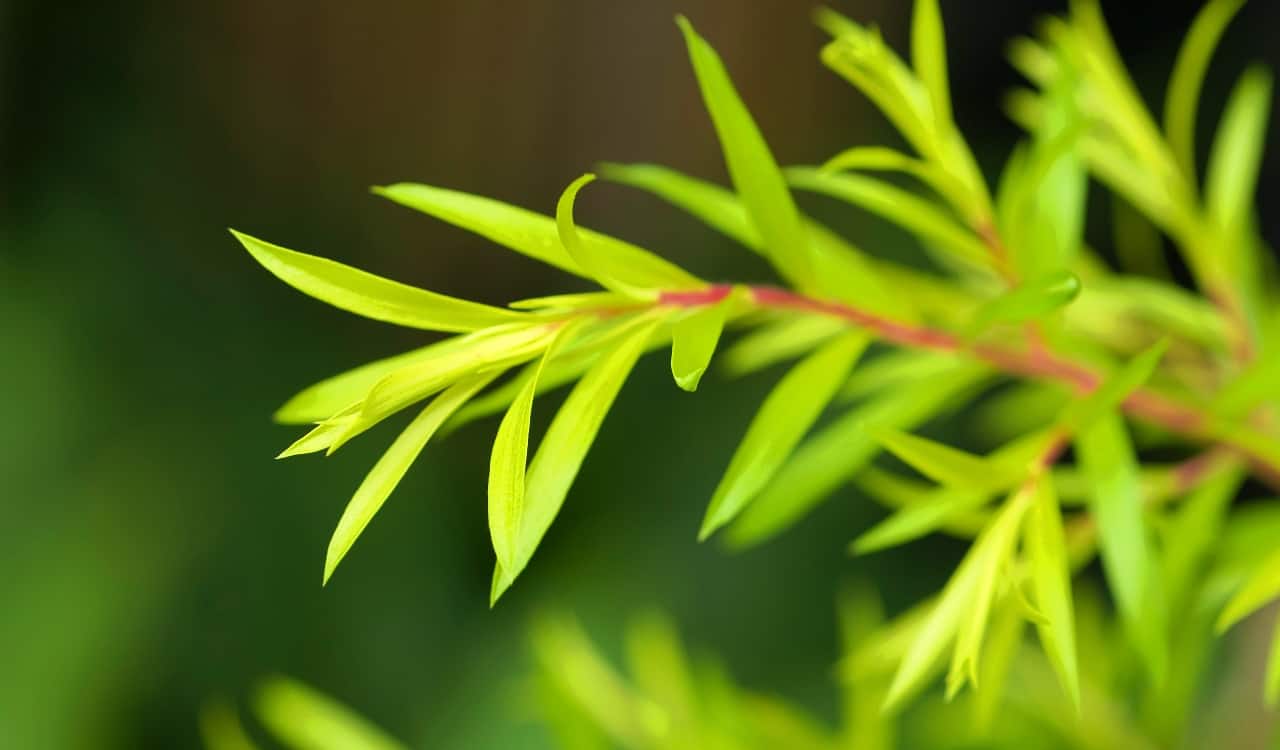
Tea Tree
- Medicinal Use: Athlete’s Foot, Acne, Skin Fungal & Bacteria Infections
You might have heard of the Tea Tree, but more than likely you know it for its oil. Tea Tree Oil is a notable member of those Essential Oils you hear about all the time. While a lot of those can be considered okay at best, Tea Tree Oil has proven to be pretty effective. The oil is used exclusively as a topical ointment or cream that can treat a variety of issues. When discovered in the 1920s, commercial use of the oil by Arthur Penfold turned into big business.
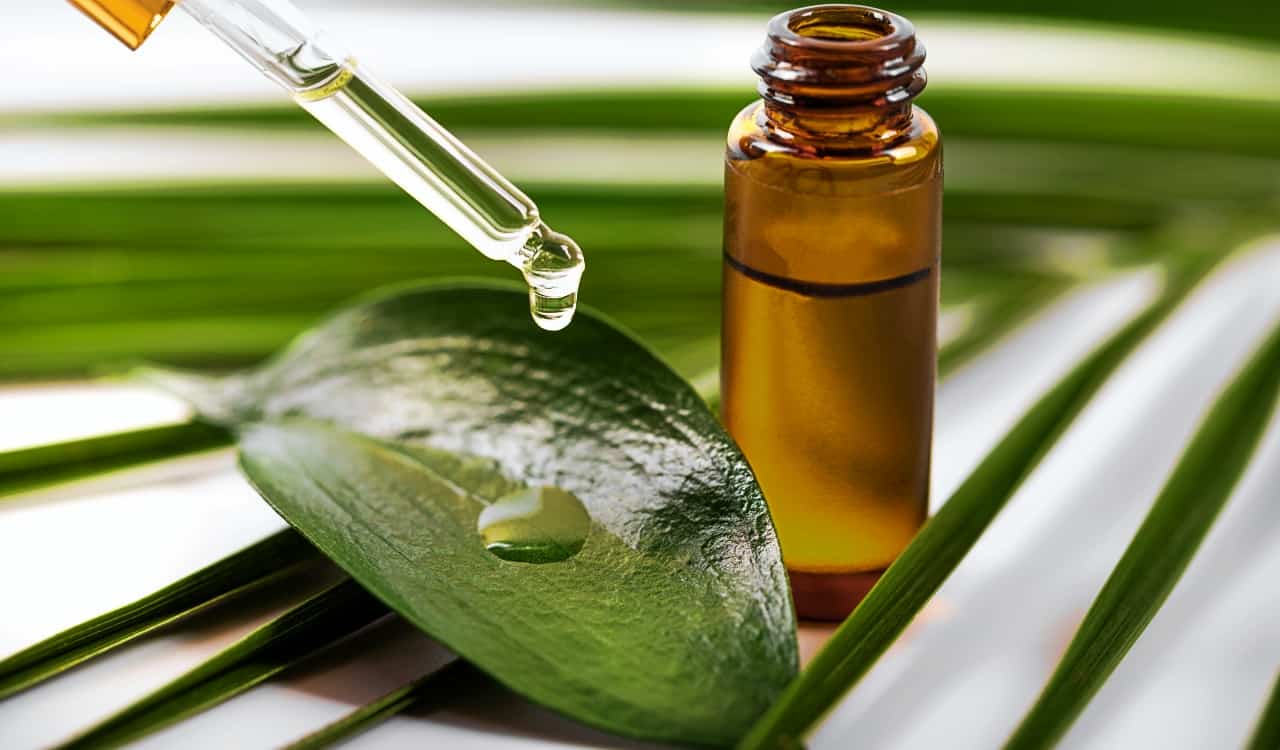
Low concentrations of the oil can be used to treat numerous skin-related conditions. This can include little things like acne and insect bites all the way to skin fungal infections and bacterial infections. It has also been known to assist in the removal of dandruff and lice! Like with a lot of oils, Tea Tree Oil is not an approved American FDA product. You cannot eat or drink this stuff as it’s pretty poisonous, making it a bad product to use for children. But it’s still one of the most popular medicinal plants.
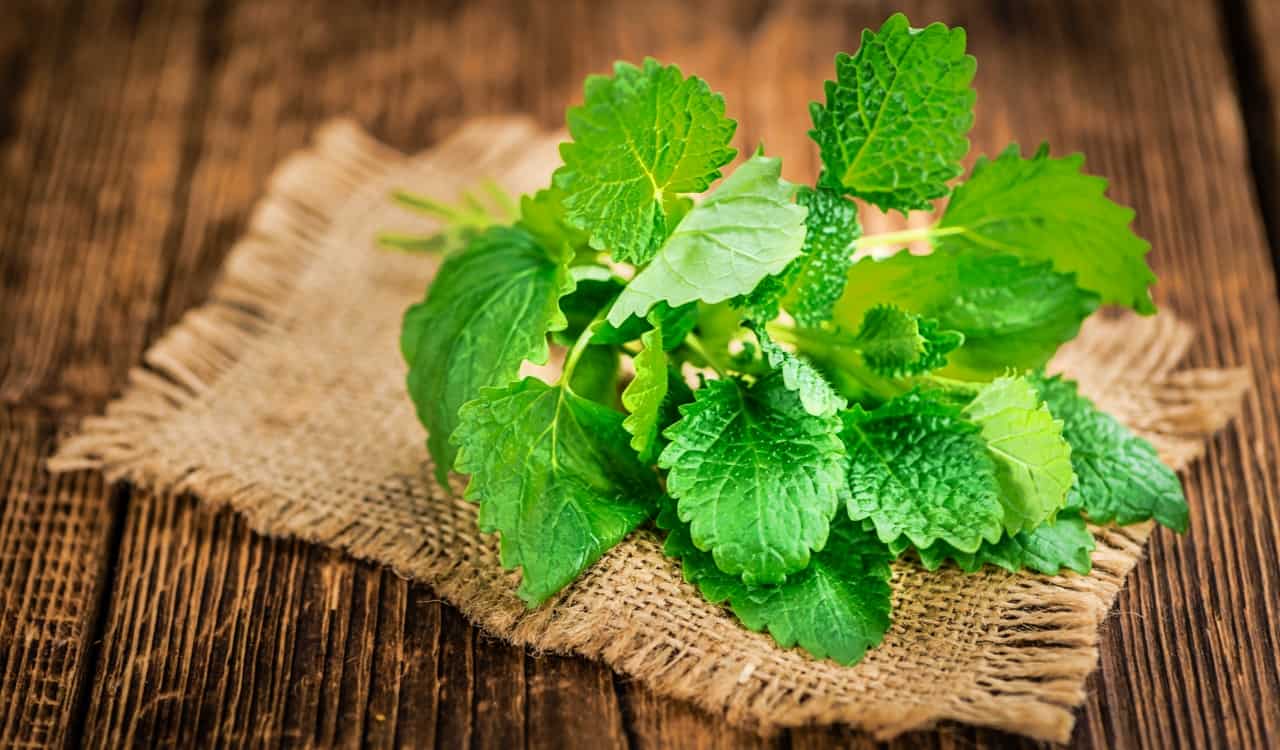
Lemon Balm (Melissa officinalis)
- Medicinal Use: Gastrointestinal Disorders, Sleep Problems
Lemon Balm is usually considered to be part of the “Mint Family” of plants. It has become quite a popular product to use in several dishes across Asia and Europe too. A lot of countries where it is locally present have used it as one of their common medicinal plants. While it is becoming more common in the Americas, it was initially only native to South-Central Europe, Central Asia, the Mediterranean Basin, and Iran.
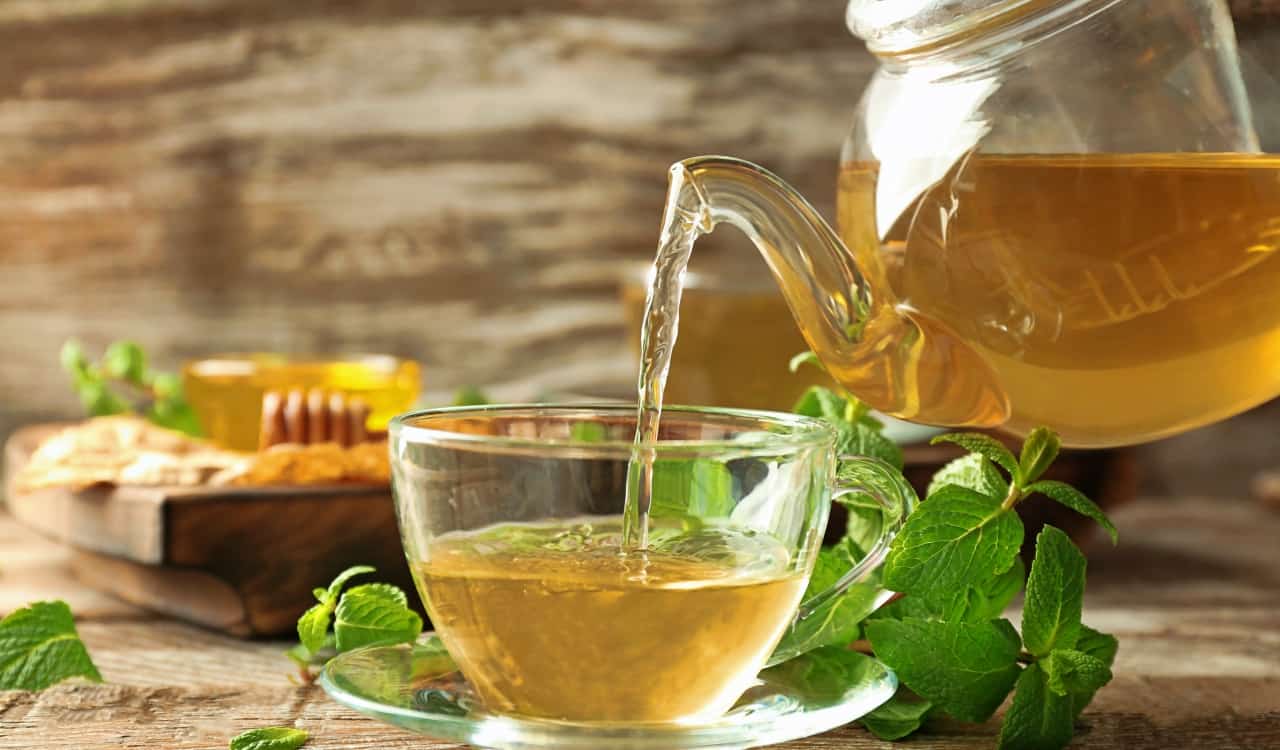
These areas were the most common places where medicinal use began for Lemon Balm. Many believe it can be a great aid for nervous system issues. However, this has never been proven completely. Yet it has been considered a useful aid for gastrointestinal disorders and by extension, helpful for liver problems too. It is used in tea and is completely safe to drink. It is also co-distilled in several Essential Oils alongside Lemon and Citronella Oils.
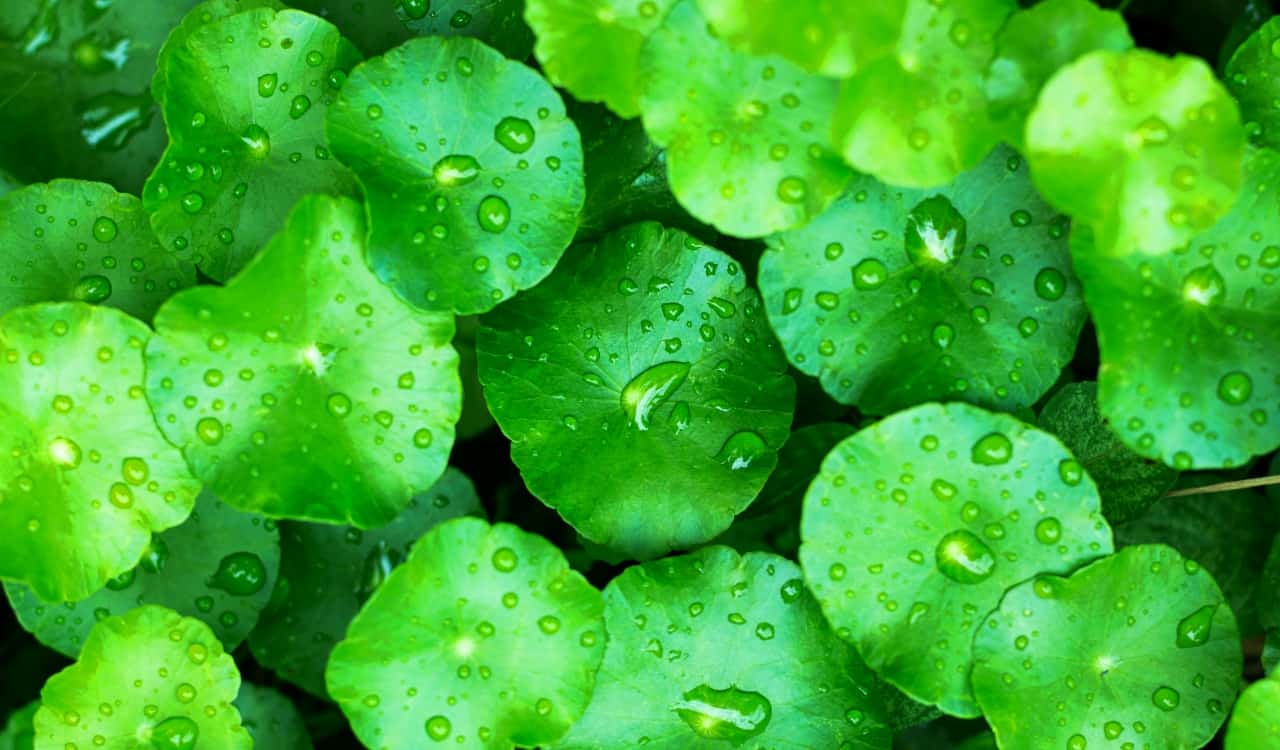
Gotu Kola (Centella asiatica)
- Medicinal Use: Treats Minor Wounds
Gotu Kola has been one of the most common Indian medicinal plants for centuries in some form or another. Of course, as referenced earlier in this article, Indian medicine is quite vast. They use a ton of herbs and plants, compared to other nations. Of course, Gota Kola is used as a common culinary vegetable across Asia. Likely, this is just as common as its medicinal use. In medicine, it has been known to be capable of helping with a lot.
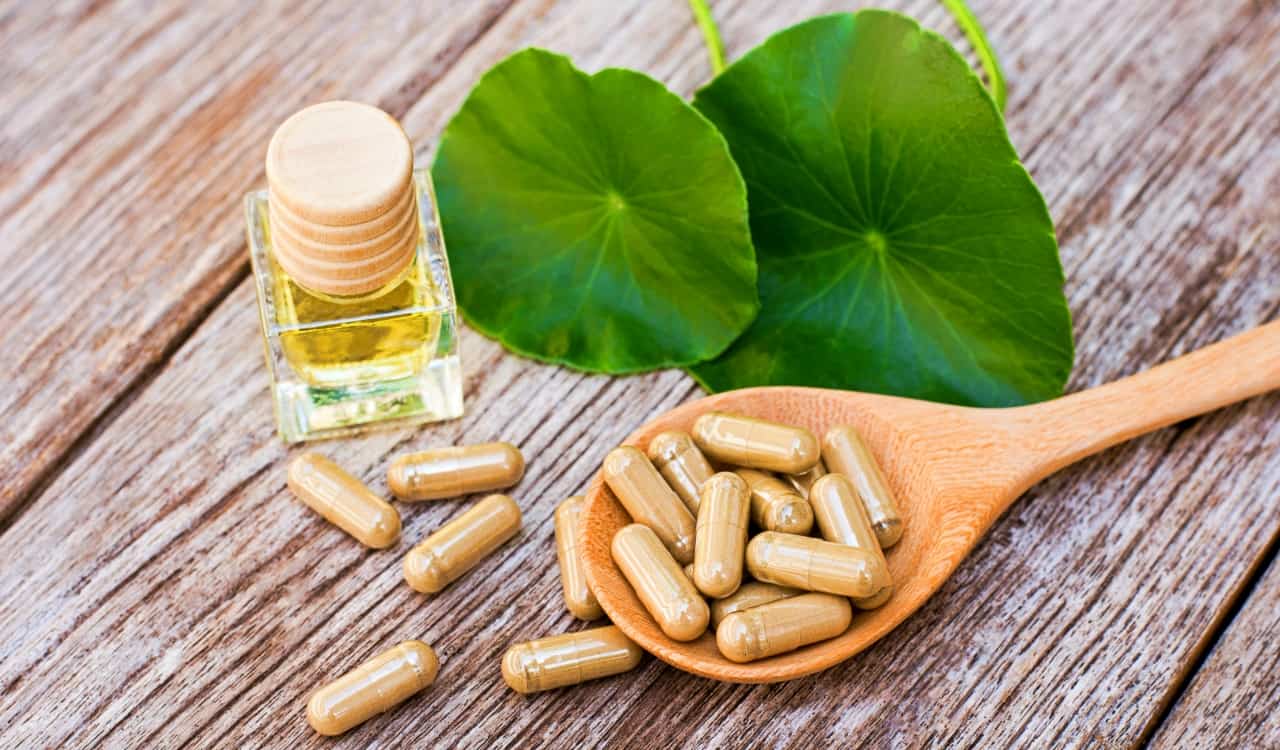
The most common thing it’s known to assist with is helping treat minor wounds. This will need to be applied to a wound and covered. However, topical application of Gotu Kola can result in some skin irritation, so be warned! When consumed, many have become drowsy. Of course, this only happens when a large portion is consumed and not when it is used in normal dishes, of course. It is not recommended to eat a ton of it, however. Many that did complain of adverse liver function.
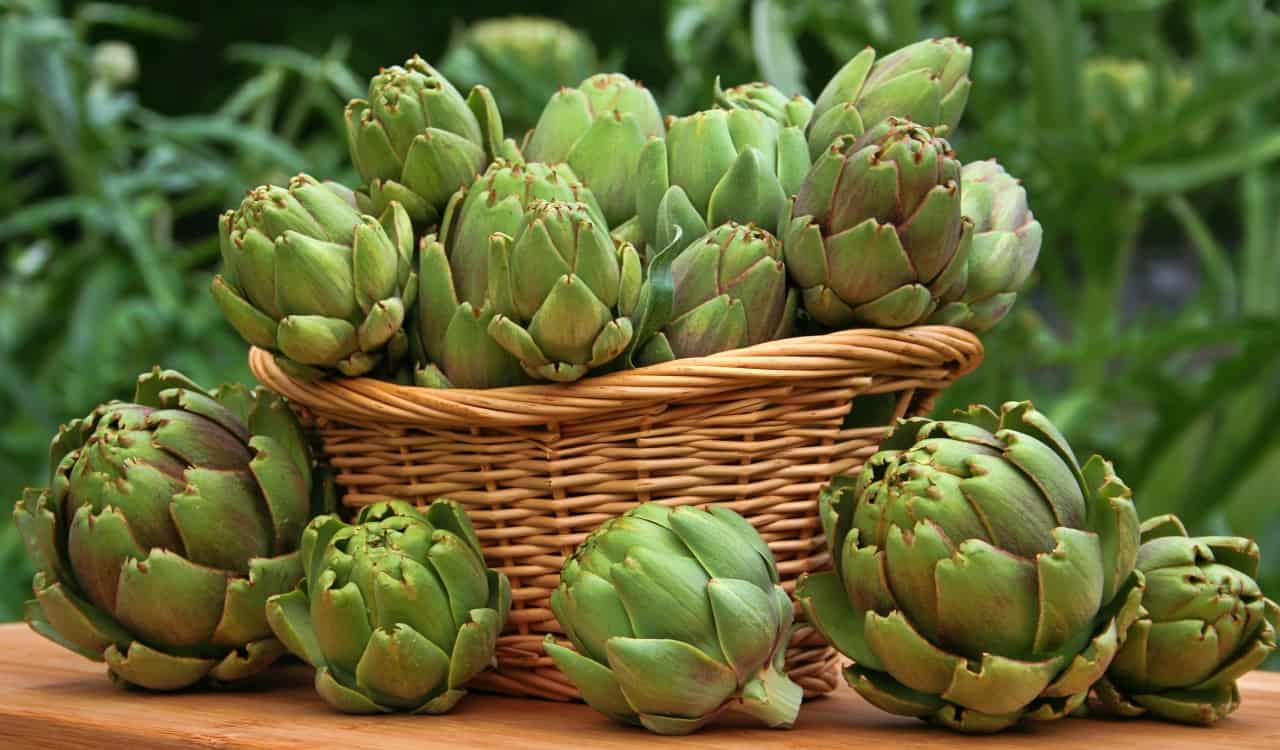
Globe Artichoke (Cynara cardunculus var. scolymus)
- Medicinal Use: Lowers Bad Cholesterol, Regulates Blood Sugar, Improves Digestive Health
While it is mostly referred to by science as the Globe Artichoke, most of us simply refer to it as an artichoke. Of course, not all artichokes are created equal, resulting in this version being called the “Green Artichoke” too. It is important to note that the artichoke itself is not edible, only the flower buds before they bloom are. This artichoke is popular in science too, as it has been experimented with for years. We now know it contains bioactive agents Apigenin and Luteolin.
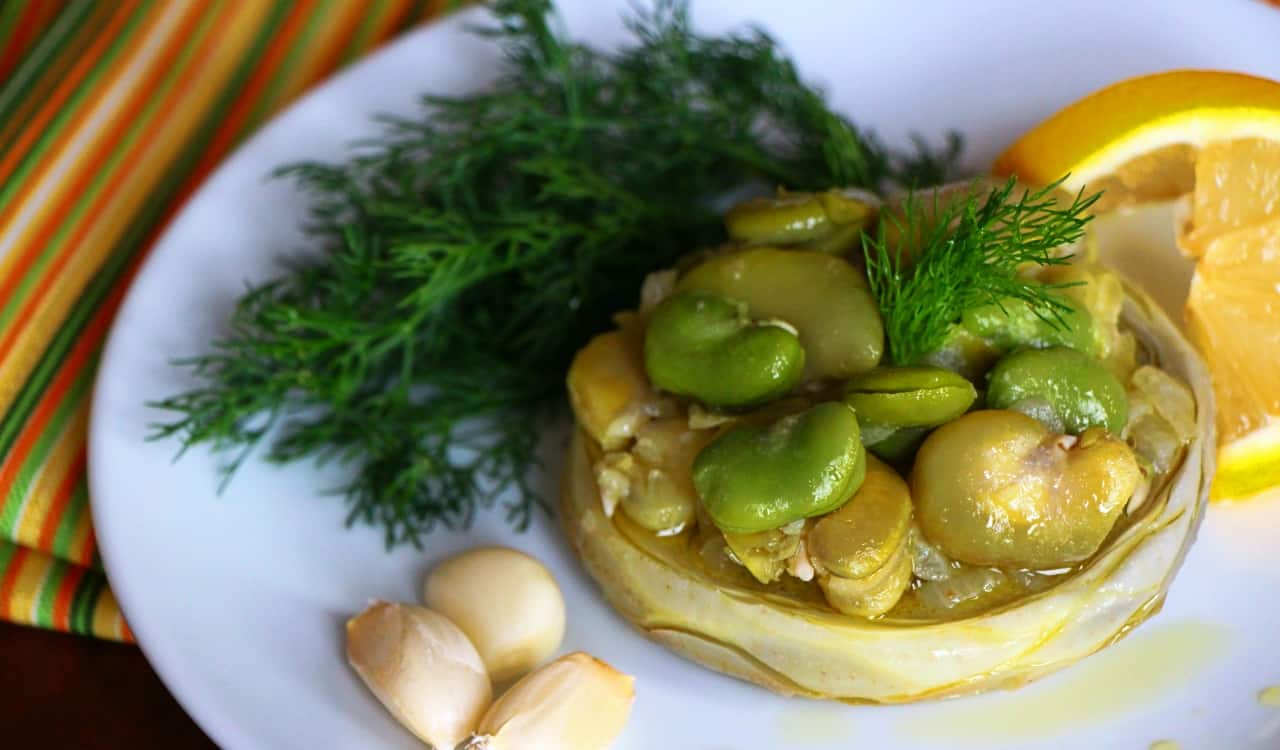
We also now know its total antioxidant capacity is the highest of all vegetables recorded. As a result, the medicinal use of artichokes has been praised for years. Not only is it packed with nutrients, we know it can lower bad LDL cholesterol and increase good LDL. It also helps regulate blood pressure, improve liver and digestive health, and eases issues one has with IBS. There have even been some cases that show artichokes can lower blood sugar levels.
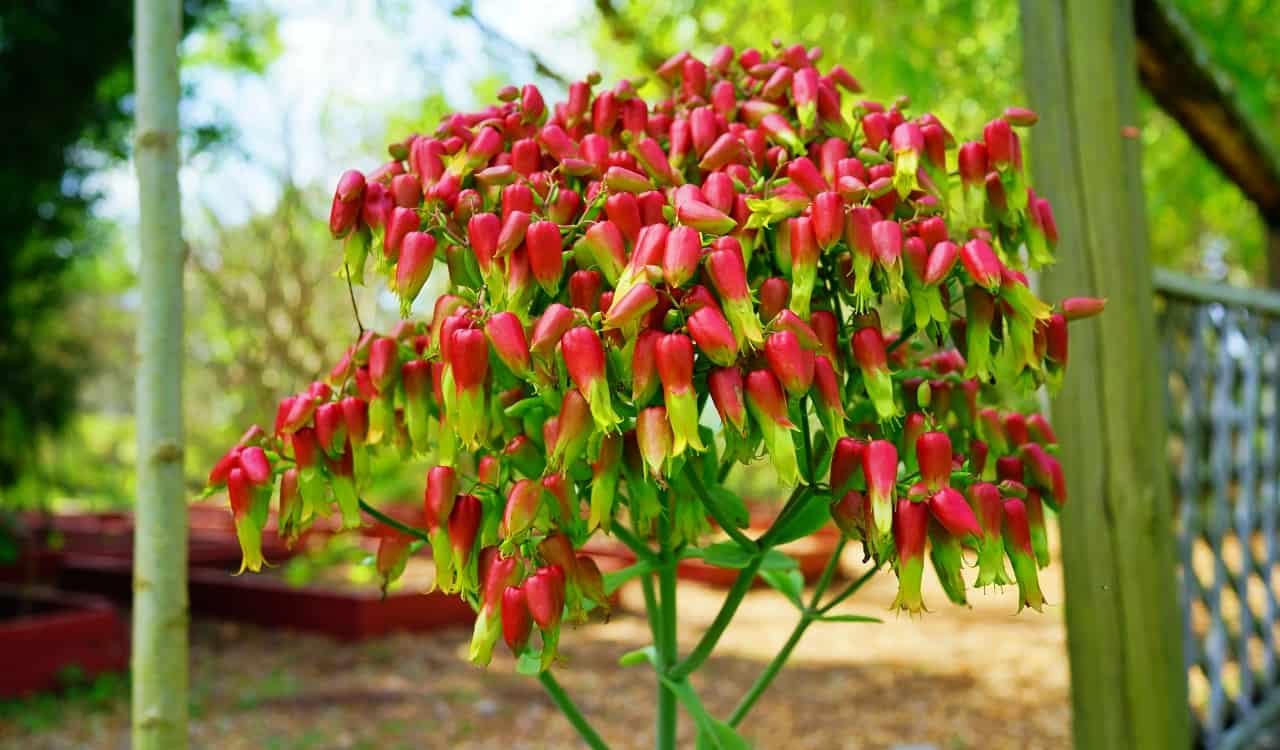
Bryophyllum pinnatum (Kalanchoe pinnata)
- Medicinal Use: Insect Bites, Burns, Ulcers, Earaches, Urinary infections
Bryophyllum pinnatum has been connected to ethnomedicine for years and obviously, it’s one of the most popular medicinal plants. The studies surrounding it have shown great promise, with many great reports surrounding it. Of course, not all claims about the plant are considered to be true. Those we know to be true more often than not is its treatment for insect bites and burns. Other studies have shown it can be useful in treating earaches, abscesses, and ulcers.
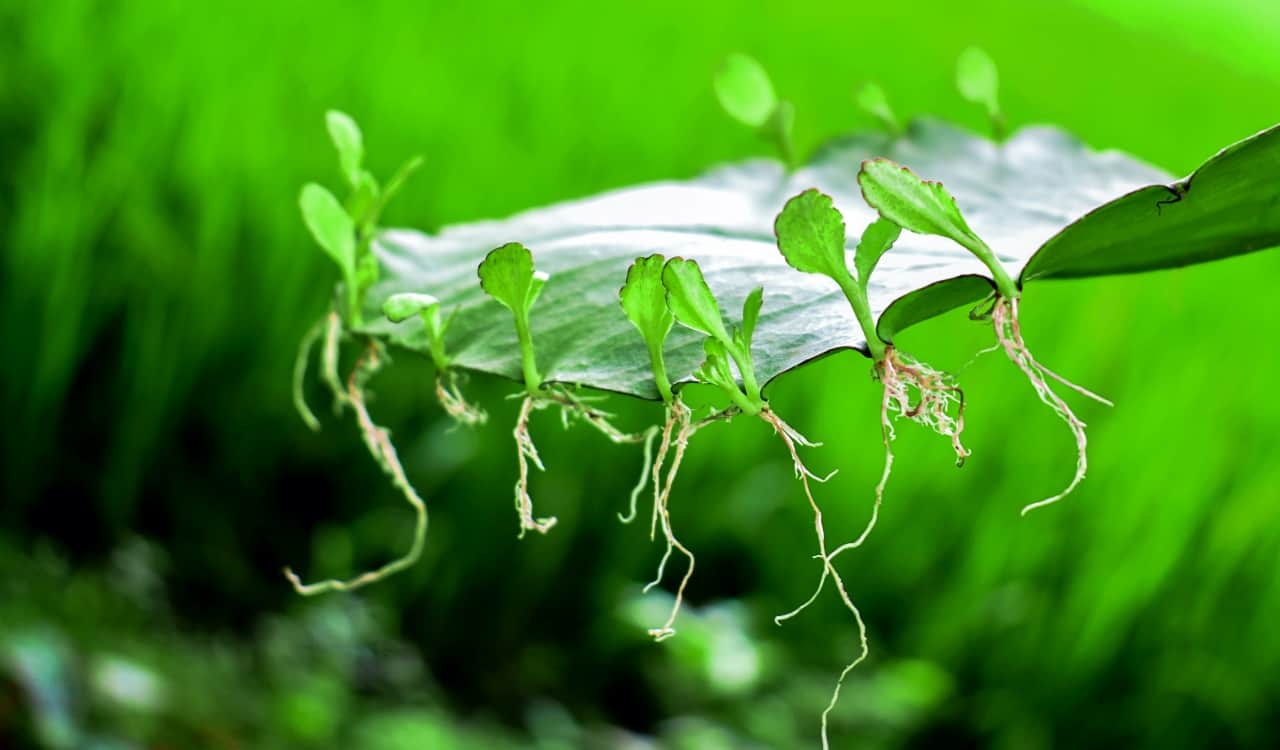
However, other studies need to be done before they can prove total success in treating diarrhea and hypertension. However, the juice from the leaves of this plant has been a popular treatment for urinary infections and even kidney stones. There could be something to this, as the presence of compounds found in steroids along with several acids has been found in Bryophyllum pinnatum. Some of these have been helpful when used in other medications for treating urinary issues.
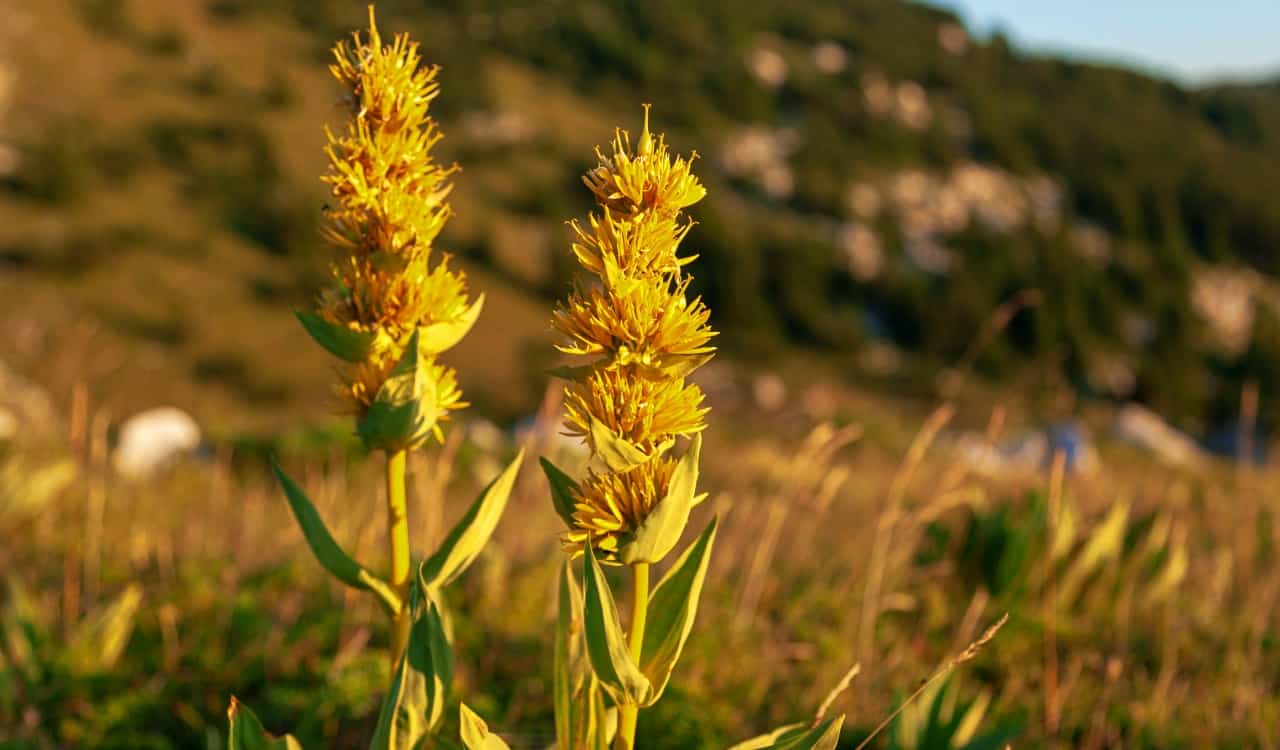
Great Yellow Gentian (Gentiana lutea)
- Medicinal Use: Gastrointestinal Disorders, Heartburn
The Great Yellow Gentian is famous for being what we used for alcohol before the introduction of hops. Gentian overall is, of course, an herb. Due to this, science has agreed on its medicinal properties, making it notable among other medicinal plants. Yet the entire plant itself is not medicinally useful. Only the bark is used to make any sort of medicine. Of course, a lot has been made about Gentian for hundreds of years now.
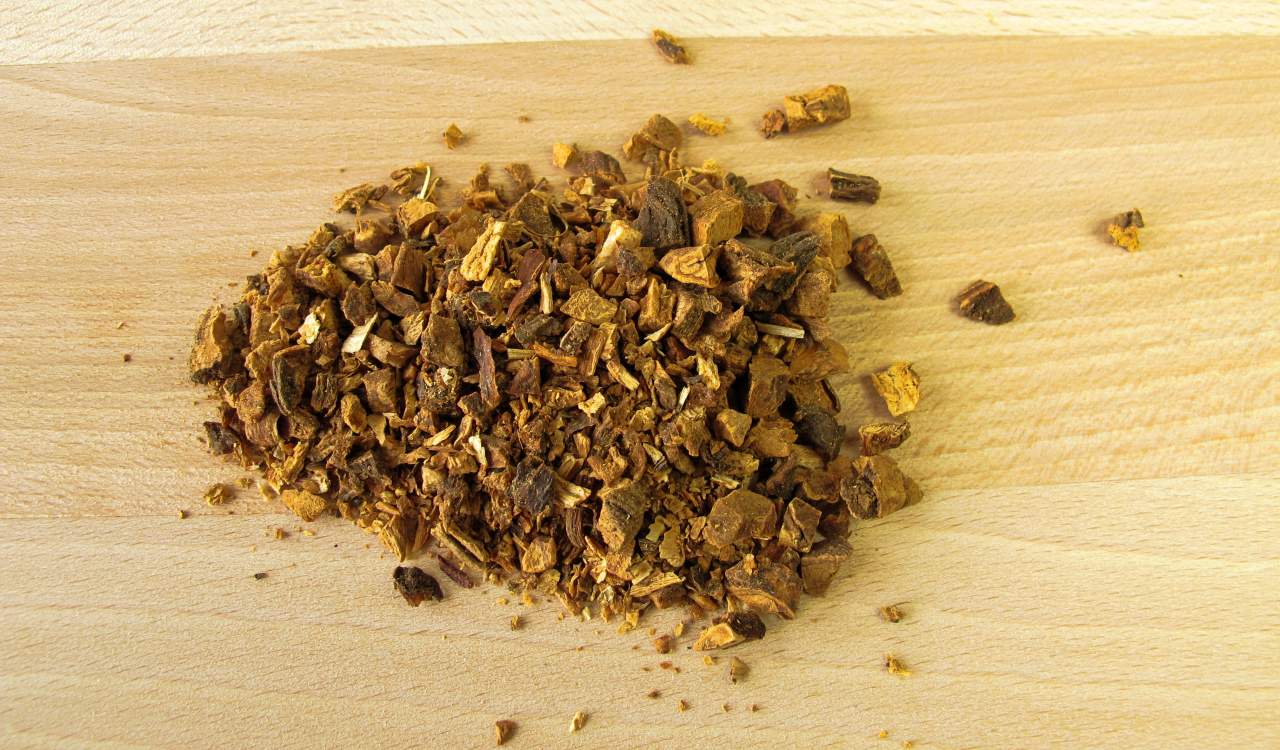
The most common things it is known to help with tend to be mostly in the gastrointestinal field. This includes heartburn, bloating, diarrhea, and even the loss of appetite. There have even been some cases of it being effective along with other medicinal plants in treating fevers as well as muscle spasms. However, the latter material will likely take further study to be confirmed as factual in treatment for such issues.
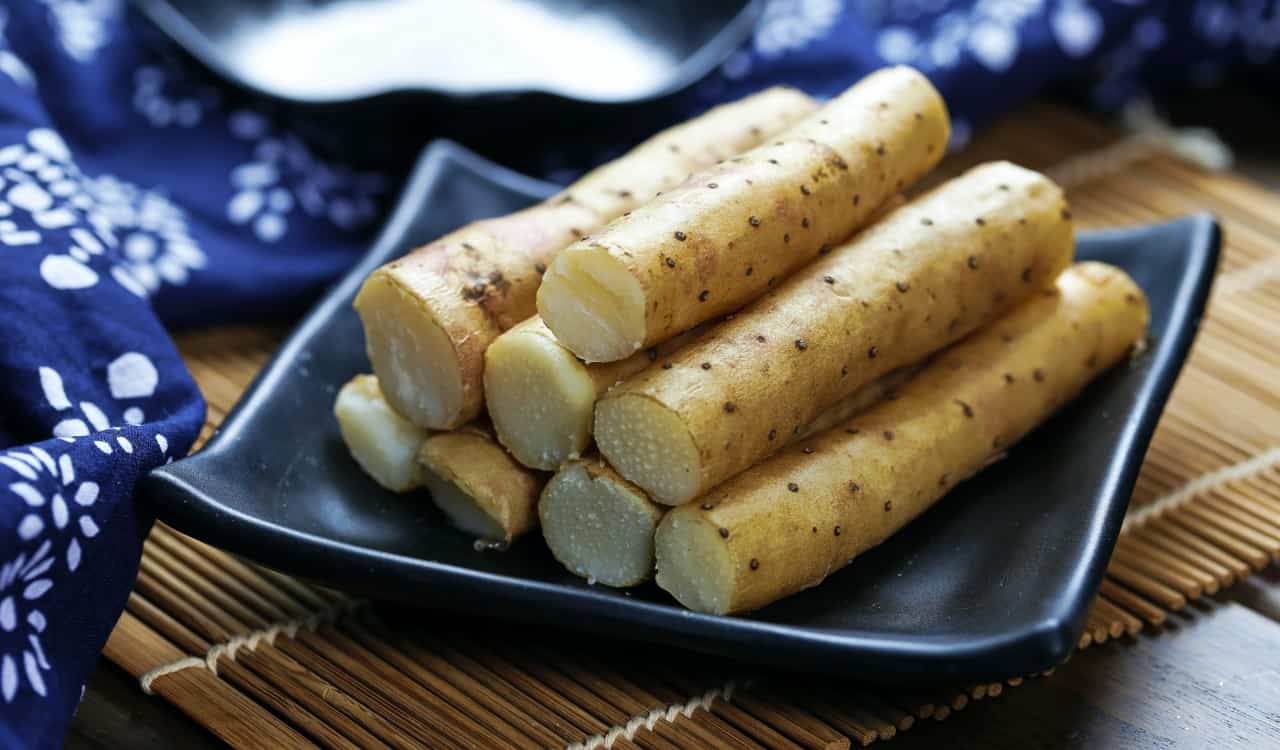
Chinese Yam (Dioscorea polystachya)
- Medicinal Use: Crohn’s Disease, Whooping Cough, Kidney Issues, Gastrointestinal Problems
The Chinese Yam is very unique as its tubers can be eaten raw, which is rare among most of yam species. It is also a well-known climbing vine in China and other parts of East Asia. However, in Chinese Alternative Medicine, it has been a popular plant species to use for medicinal purposes. In fact, several creams and dietary supplements are made using this very yam inside of them.
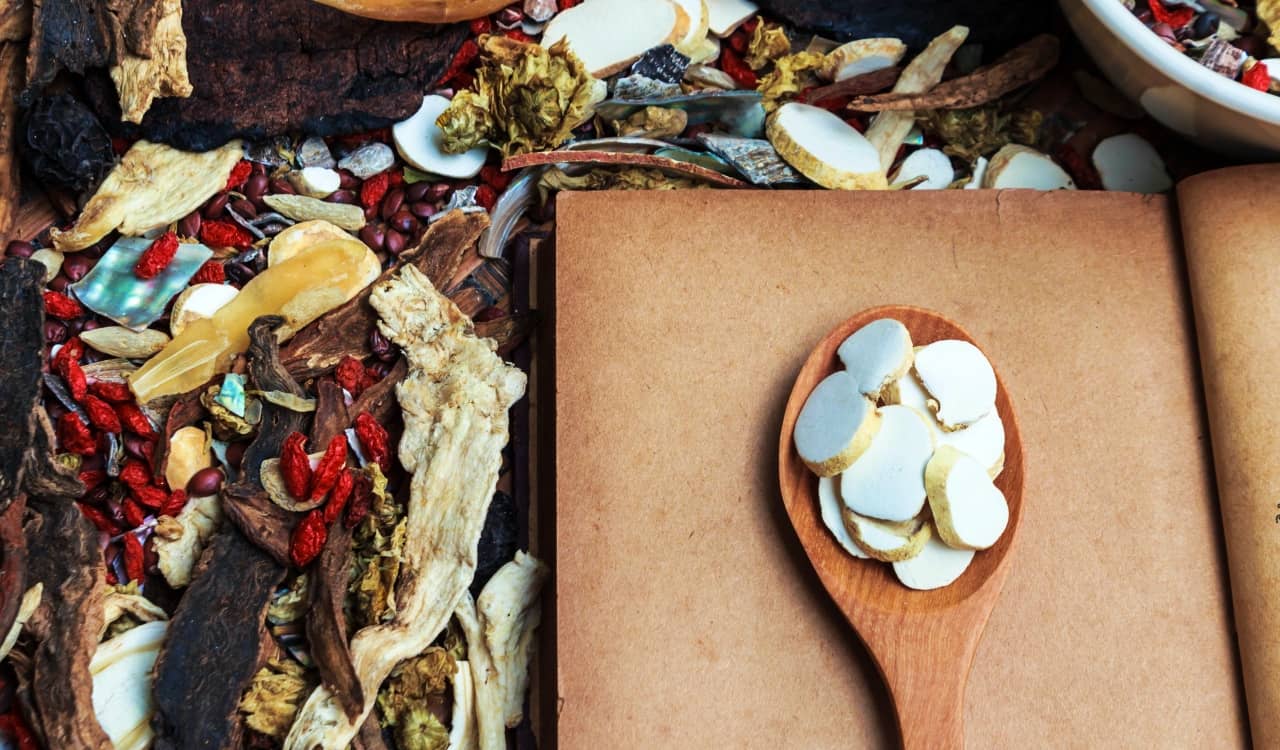
It has been said to be a good treatment for Crohn’s Disease and even Whopping Cough. There have even been claims that it can be used to prevent cancer, but the American Cancer Society refutes this heavily. Yet it has also been known to help treat problems in the gastrointestinal tract as well as the lungs and kidneys. A common part of this Yam is Diosgenin, which is used to produce steroids and hormonal material such as estrogen. Therefore, there could be something to it helping a lot of stuff.
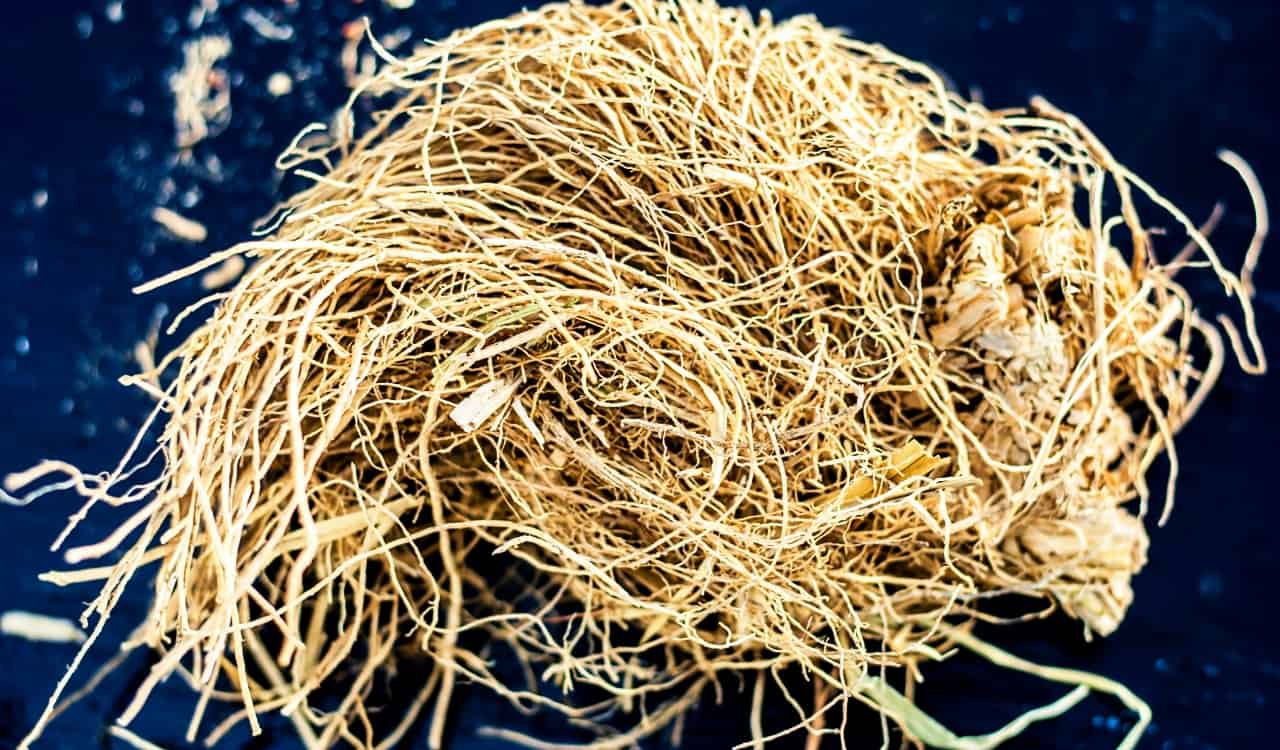
Khus (Chrysopogon zizanioides)
- Medicinal Use: Acne, Skin Inflammation
It is easy to get Khus and Khus Khus confused. After all, they are the same word with one just using the same word twice. It can even lead to people seeing them as the same thing. However, they ARE NOT the same. We need to make that perfectly clear here. We’re discussing Khus, which is a form of bunchgrass. It has been used for a ton of useful things over the years from being a termite repellant to use in skin products.
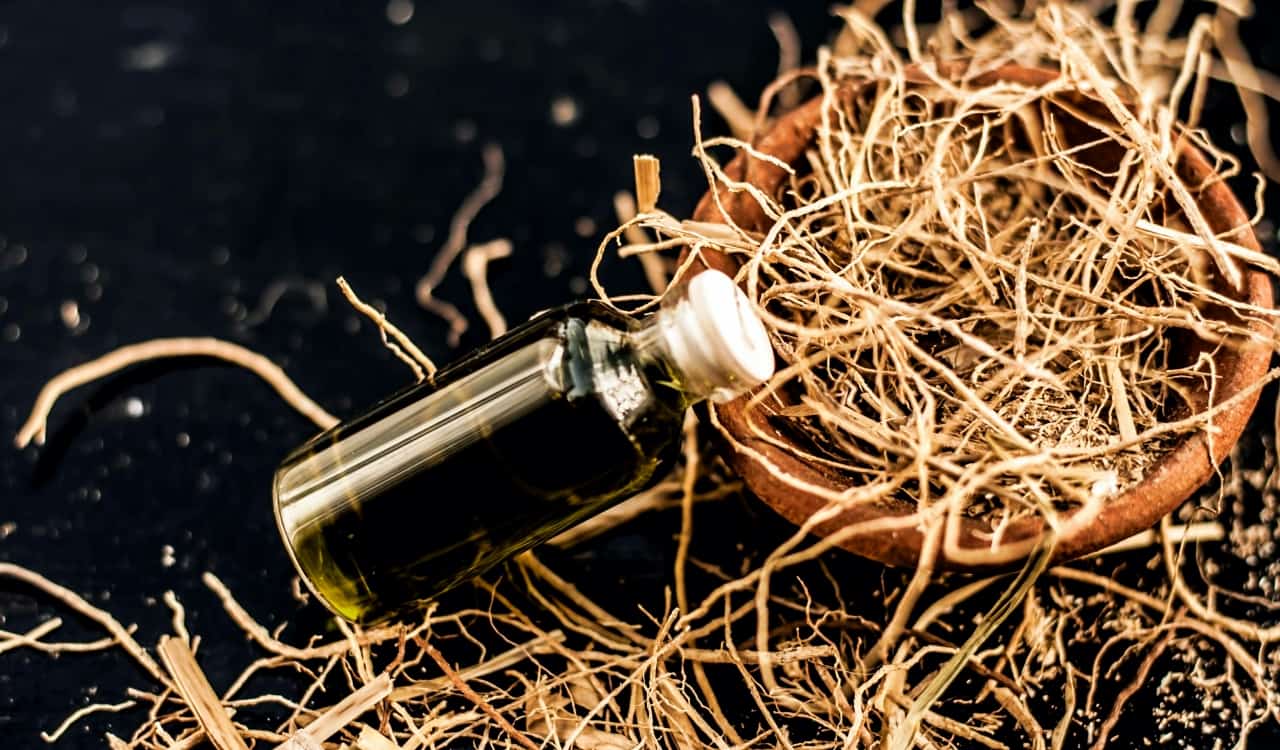
As a result, however, there has been some medicinal success with Khus. It is terrific for skincare products because it allows a person to use it in something like makeup and not have severe skin reactions. In fact, it has a calming, cooling effect to it a lot like Menthol. Plus, Khus treats acne! It also treats inflammation on the skin, allowing it to be a terrific addition to numerous makeup or perfume brands. As it will not harm, but actually help your skin.
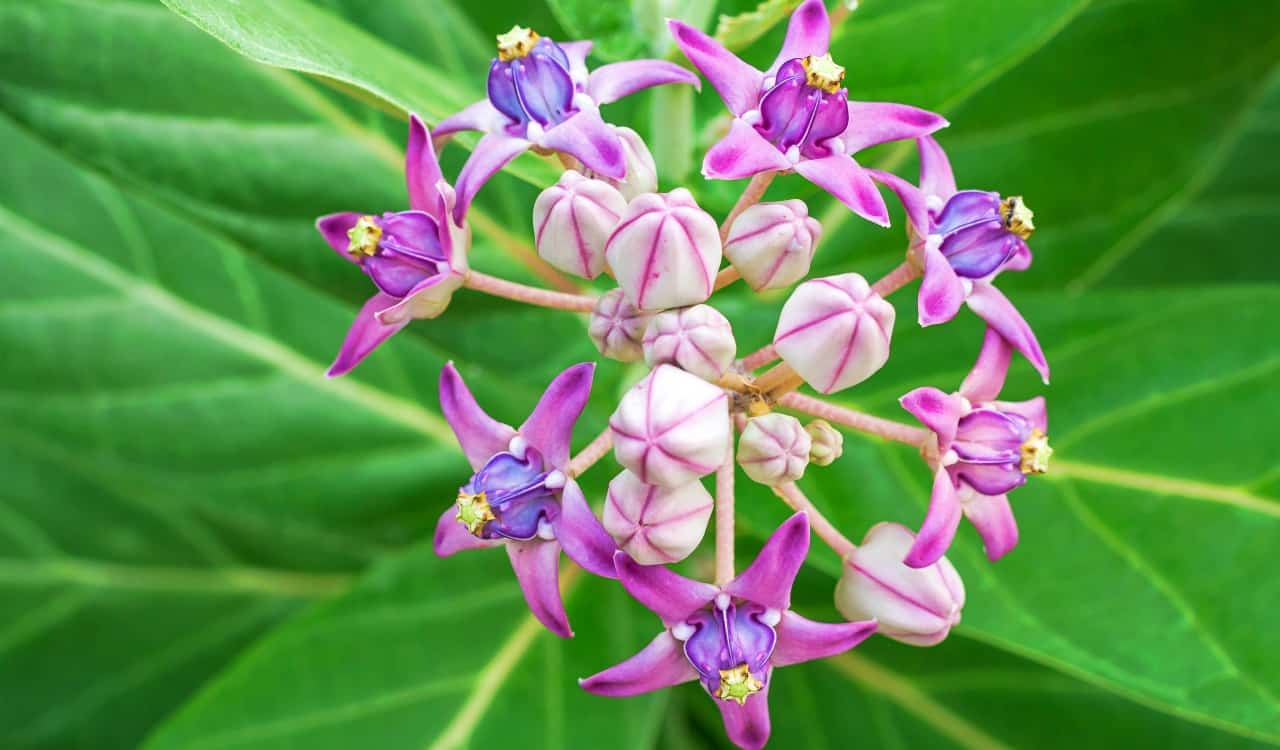
Crown Flower (Calotropis gigantea)
- Medicinal Use: Bacterial Infections, Asthma, Snakebites, Possible Cancer-Fighter
The Crown Flower happens to be one of the most popular medicinal plants, but it’s known by other names depending on where you’re from. “The Rui” is one of the common names for it in Asia. It rose to popularity, funny enough, as a great way to poison arrows one would shoot at their enemies. How does poison become a medicinal asset? India began seeing it treat some bacterial infections, mostly respiratory versions. It would even be used to treat asthma.

That allows it to become popular for treating a lot of breathing issues, even shortness of breath and swelling issues. It would even become popular in India for treating snakebites. Of course, significant studies have found the Crown Flower has great cancer-fighting properties, especially in Carcinomas A549, HCT 116, and HEP G2. There is even solid evidence that it can be used as a useful contraceptive as well.
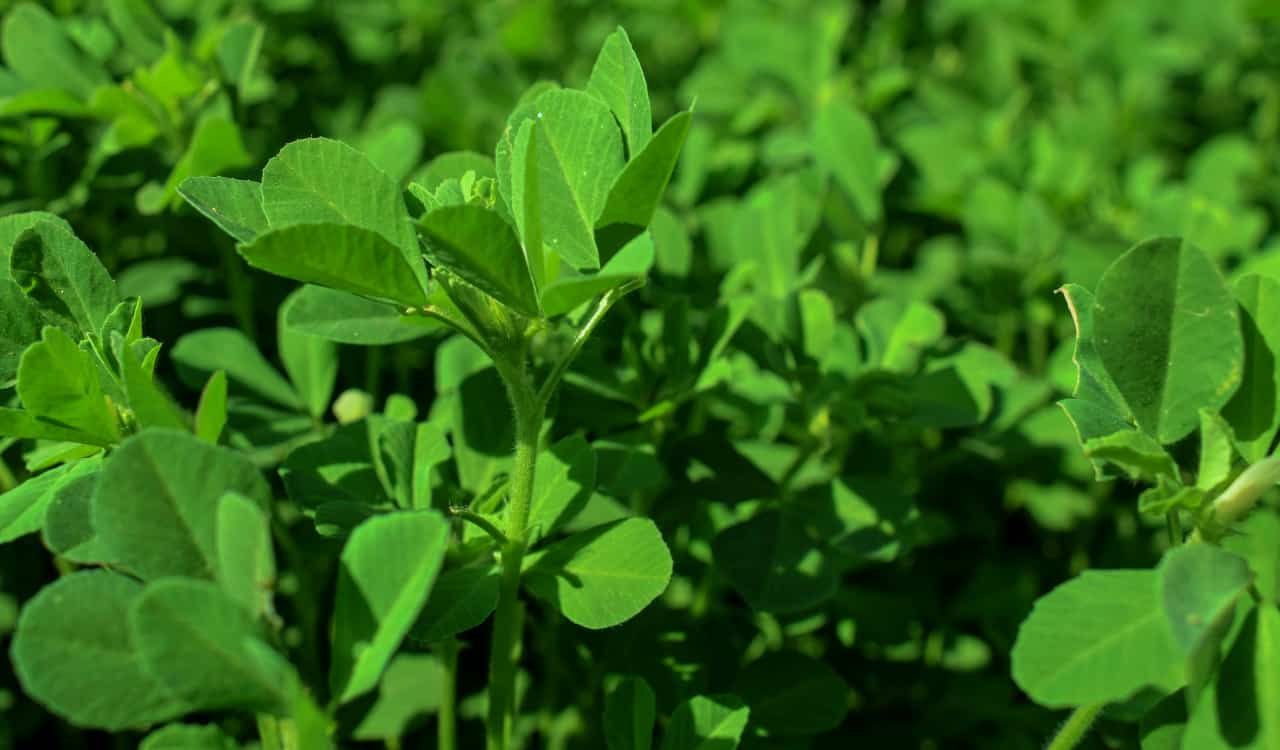
Fenugreek (Trigonella foenum-graecum)
- Medicinal Use: Gastritis, Upset Stomach, Cuts Down On Obesity, Potentially Helps Painful Menstruation
Fenugreek has become relatively popular as one of the most common medicinal plants used to treat obesity issues. This has also resulted in the plant getting credit for treating diabetes too. Rather, it helps cut down on overeating by giving people a full feeling. On top of this, it has been shown to be successful in treating an upset stomach as well as Gastritis or inflammation of the stomach. Other stuff is more folklore than proven science.
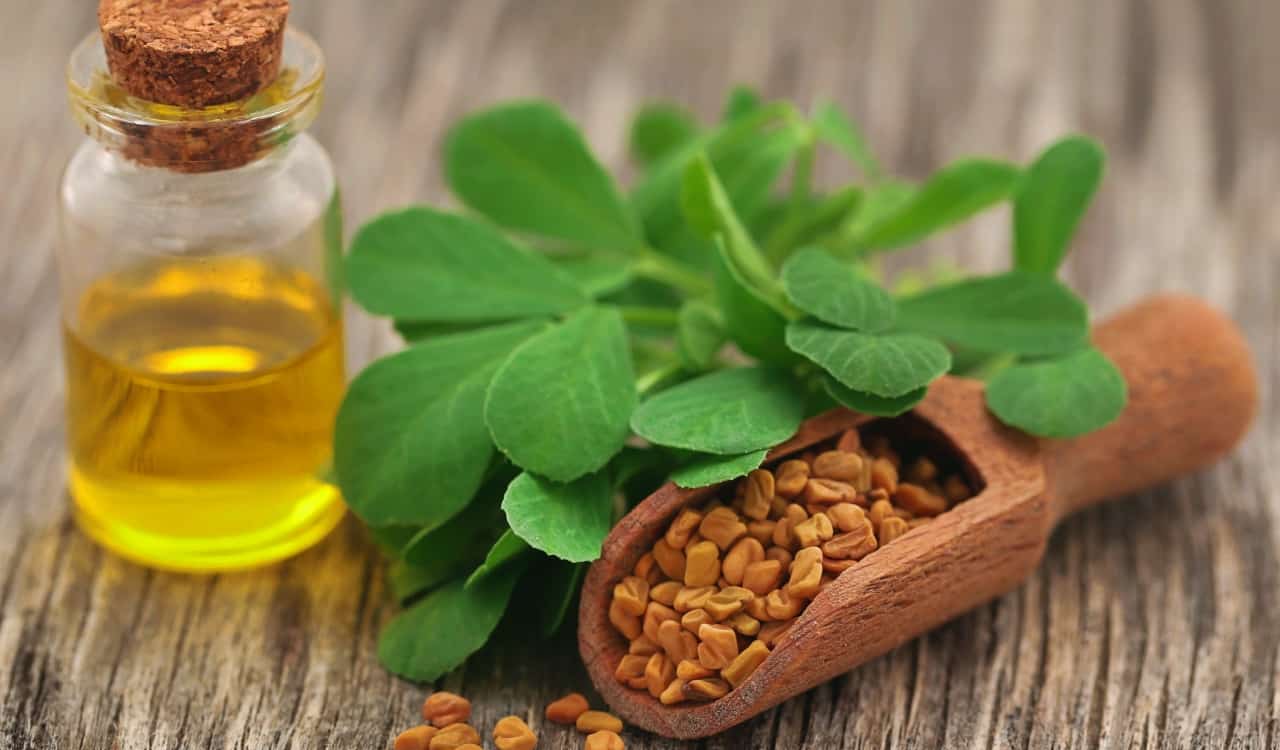
For many years, it was claimed Fenugreek treated painful menstruation and what we’d come to call polycystic ovary syndrome as well. It is more than likely that if it helped the former, it also helped the latter. Also, if it does indeed help with inflammation issues in the digestive tract, it might also help to cut down inflammation in the urinary tract areas as well. This could be why it has been given credit for helping with the pain women might face.

